Wet and Wild!
Whatever happened to my brown sock…?!
It's All Downhill From Here
I’ve just come back from a couple of weeks at Kicheche in the Masai Mara. There was so much rain that it sometimes felt like I was in a remake of Waterworld, starring Paul Goldstein!
If you want to hear about Biblical floods, a cheetah kill, Art Wolfe, a newborn tommie, a two-day-old elephant, mating lions, leopard cubs, lion hunts, an electric safari truck and the mystery of the missing brown sock, read on!
Getting There
I booked the trip through Exodus a few months ago. It was the Kenya Photographic Safari with Paul Goldstein - Premium Adventure, lasting seven days. Exodus booked my flights for me, and I also dealt with a guy from Chameleon Safaris, the company that manages bookings for the Kicheche camps.
A few days after I’d booked with Exodus, I received an email from one of the guests, Leslie, inviting me to spend an extra day with Paul at the end of our stay. I agreed and spoke to Kicheche about booking it.
Someone told me I could get 50% off if I booked at least six extra nights, so I decided to go the whole hog—and I’m glad I did! I’d never have seen the leopard and her cub otherwise…
From my flat in Putney, it took me 14.5 hours to get to the Tamarind Tree Hotel in Nairobi and over 26 hours to get to Mara Camp (plus a three-hour time difference):
0550: Uber to Heathrow
0950: Flight from London Heathrow to Jomo Kenyatta International Airport (JKIA), Nairobi
2200-2230: Transfer from JKIA to Tamarind Tree Hotel
Overnight at Tamarind Tree Hotel
0615-0630: Transfer from Tamarind Tree Hotel to Wilson Airport
0710-0745: Flight from Wilson Airport to Masai-Mara North
0915-1115: Game drive to Mara Camp
The flight from London to Nairobi was over nine hours, which was a bit of a pain, but I paid £70 for an exit row seat, so at least I could stretch out my legs! I didn’t sleep much as it was a daytime flight, so I just had to listen to audiobooks, watch movies and do the crossword.
We were 10 minutes late landing, and then it took an age to exit the aircraft, get through passport control and queue to go through security again. After doing that journey for years, Paul knew the ropes better than I did, and a few days later, he sailed through passport control by going through the ‘Diplomats’ channel!
You might notice there was a bit of a gap between arriving at the airstrip and starting the game drive. That’s because there was a mix-up, and I had to wait 90 minutes before Lydia finally showed up!
TIA. This is Africa…
Board & Lodging
Accommodation
There are four Kicheche Camps:
Kicheche Bush Olare (‘Bush Camp’)
Kicheche Mara North (‘Mara Camp’)
Kicheche Valley Naboisho (‘Valley Camp’)
Kicheche Laikipia (‘Laikipia’).
In the past, I’ve stayed at Bush Camp, but this time, Exodus decided to vary the itinerary, and I ended up staying seven nights at Mara Camp and five nights at Valley Camp, exchanging a few words with Art Wolfe during the transfer!
I was in the Nyumbu (or ‘Wildebeest’) tent at Mara Camp, where a card was waiting for me: “Travelling - it leaves you speechless, then it turns you into a storyteller. Ibn Battuta.” At Valley Camp, I was in the Immiet (or ‘Five’) tent.
My tent at Valley Camp
All the tented camps are pretty similar. You sleep in a proper bed in your own private tent, which has a power supply, your own private Wi-Fi router, hot and cold running water and a plumbed-in shower (rather than a safari or bucket shower).
There are also a couple of open-faced tents in what people call the ‘main area’. That’s where you have your meals and relax with a drink after a game drive.
The main area at Valley Camp
The view from the main area is quite nice, but it would be even better if they chopped down a few trees. Sadly, they can’t do that without creating light pollution for the neighbouring camp…
The tents aren’t heated, so they can get a little chilly at night, but the staff put a hot water bottle in your bed in the afternoon, so it’s usually quite warm when you go to bed.
If you’ve ever been on safari, you’ll know that the hot water, electricity and Wi-Fi are usually pretty unreliable, and Kicheche is no exception. I never had hot water at Mara Camp, so I didn’t even bother trying to take a shower, but it wasn’t a problem at Valley Camp. The power occasionally went out at both camps, and the Wi-Fi was always coming and going—and it was pretty slow anyway.
Here’s a breakdown of what we had for each meal:
Breakfast. You placed your order the night before for pancakes, energy bars, tea, coffee or whatever you like, and it all went in the truck for you to eat in the bush on your morning game drive.
Lunch. The staff served you with a starter at the table in the main area, and then you helped yourself to the hot and cold buffet. Most of the dishes were soups and salads. Afterwards, you were served with dessert.
Dinner. The starter, main course and dessert were all served individually in the main area. Everything was beautifully presented, especially at Mara Camp, and this was when you got something more substantial, such as steak or fish and chips.
Food & Drink
The food was always pretty good—although I miss the fantastic breads that Darren and Emma used to provide at Bush Camp. The other issue was the seating plan. In the old days, communal dining made it easy to meet people from within or outside your own group. Since the pandemic, though, the Kicheche camps have offered private dining as an option.
In practice, that meant that I had to ask where I was supposed to sit. For the first few days, it worked out well as I was paired up with the manager, Andrew, and a nice couple called Chris and Nadia. Until the Exodus group arrived, though, there was nobody for me to sit with, so I either had to eat on my own or skip dinner altogether!
Routine
If you’ve ever been on safari, you’ll know the general routine:
0530: Wake up
0545: Tea and/or coffee and biscuits in the main area
0600-1200: Morning game drive
1330: Lunch
1600-1930: Afternoon game drive
2000: Dinner
In addition, you occasionally have ‘sundowners’ (or cocktails) and ‘bitings’ (or nibbles) in the bush at sunset or around the campfire later.
I thought there were supposed to be a few all-day game drives, too, but that didn’t happen in the end.
I was given a private vehicle for the first few days to make up for the fact that I had to wait so long at the airstrip, but when the rest of the Exodus group arrived, we were packed three or four to a truck.
The food was pretty good, but I only had a fruit and vegetable smoothie in the morning, followed by a light meal including salad for lunch. I sat down with everyone else for dinner, but I didn’t actually eat anything. That’s because my BMI recently soared into the ‘overweight’ category for the first time in my life, so I thought I’d better cut down my calories!
In fact, I was just trying to eat what I generally eat at home. I’m always an early riser, waking up around 0530 and having a mango lassi at around 0600 and then an early lunch at around 1100. If I have something in the afternoon, it’s usually just a snack around 1400. I guess that means I follow the 16:8 intermittent fasting plan, but I don’t do it deliberately. That’s just the way I prefer it.
During the various periods of downtime at camp, I tend to rate my photos so that I can delete the others. I try to keep up to date, and I get a bit stressed if I don’t have time to go through all of them!
On this trip, I actually ran out of space on my laptop—even though it’s an eight-terabyte hard drive! I had to delete thousands of unrated photos to free up space.
‘Elf ‘n’ Safety
People who’ve never been on safari often ask me if it’s dangerous. It’s really not—unless you do something galactically stupid! Yes, there are plenty of videos on Instagram or YouTube of people being attacked by wild animals, but that’s vanishingly unlikely on this kind of safari.
On game drives, you always have a driver/guide in the vehicle making sure you’re in the right place and you don’t get too close. The guides at Kicheche have usually reached the silver level in the Kenyan guiding qualification system, so they know their stuff. They’ve also been around a long time in many cases. One guy, Bernard, has been a guide for 13 years and worked for Kicheche for eight!
In addition, animals in Africa tend to view safari trucks (and tents) as solid objects rather than things with people inside. That means there are no predators or prey animals, so they’re not interested. They might be skittish, but that’s usually because they’re not habituated to the vehicles.
If an animal does charge the vehicle, it’s usually pretty easy for the driver to accelerate away safely. I’ve been charged by elephants, rhinos, Cape buffalos and various other animals over the years, and always I’ve lived to tell the tale…!
The other health and safety feature is that you’re always accompanied by an ‘ascari’ (or guard) when walking around after dark. You simply ask for one in the main area or shine the torch in your tent around a bit until someone comes.
The paths between the tents at Kicheche aren’t paved, so it isn’t easy sometimes navigating them—especially in the dark. In fact, I almost toppled over one night at Valley Camp when I put my foot in a ditch by mistake!
If you go on a walking safari, you obviously don’t have the protection of a vehicle, but you do get a guide with a gun, and you’re usually kept away from any areas where there might be dangerous animals, such as the big cats. That’s why I hardly ever go on walking safaris…!
People
Staff
One of the best reasons to go on safari is the people you meet. The staff are always willing and helpful in my experience, and the level of service is sometimes outstanding. Here are a couple of examples.
On my first trip to Kicheche, there was no power in my tent at Bush Camp, so I had to carry both my cameras, my laptop and a variety of cables over to the main area to download my photos. When I got there, I was just setting up when a member of staff showed up with one of my cables. He’d seen my leave it on my bed and just thought it might come in handy! Unbelievable…
At Mara Camp, I met a lovely American couple called Patrick and Mary. They told me about their son, who’d lost a silver Gucci bracelet at Mara Camp. The manager bent over backwards looking for it. Sadly, she couldn’t find it, so she asked someone to make him a braided Masai bracelet to replace it. Unbelievable! Again!
It’s true that the organisation and communication could’ve been a little better sometimes. I didn’t always know what was going on, and my breakfast smoothie ended up in the wrong truck on one occasion. However, you can’t compare the level of facilities and service to an upmarket London hotel.
This is Africa, and running a hospitality business in the middle of the wilderness must be pretty tough—especially when you run on solar power and it rains for two weeks solid!
As I often tell people, I don’t go to Kicheche for high-speed Wi-Fi or a perfect espresso. For me, it’s all about the wildlife, so I can forgive the staff a few small mistakes.
Paul Goldstein
Paul Goldstein was the Exodus trip leader, and he was the same as he always is. I’ve been on half a dozen trips with him, so I know what I’m getting. The first time I went to Kicheche with him, I saw five cheetah kills in a week, so I was very impressed, and he still delivers great value—even if you sometimes have to put up with being (jokingly) called a ‘clumsy twat’, a ‘miserable northern twat’ or even the C-word!
Love him or hate him, Paul always gets you where you need to be, and he challenges you to do things differently and do new things you’ve never done before. Wildlife photography is very much his priority, so that’s why I keep going on his expeditions.
Guides
Apart from Lydia and Ester, who were only drivers rather than guides, I went on game drives with several different people, including Peter, Jimmy, Paul and George at Mara Camp and Mika, Johnson and Bernard at Valley Camp.
Patrick and Mary had recommended Bernard, but Paul snagged him early on, so I only went out with him a couple of times. Having said that, he did me a big favour by warning me that the cheetah was about to make a kill. That’s exactly what you need your guide to do: warn you of what’s about to happen so you can check your settings and get into position to shoot.
I also rely on my guides to tell me the names of any wildlife we come across, and they all did a pretty good job in that respect. I keep lists of all the different species of animals and birds I see, and you can find them at the bottom of this article. In total, I saw 30 different animals and 74 birds.
Guests
I always tend to meet wonderful people on safari. I don’t know exactly why, but I guess it’s self-selection. Going on safari is pretty expensive, so you have be fairly wealthy, which means you’re probably fairly successful in life and have more than two brain cells to rub together! You also have to be interested in wildlife, the outdoors and, in many cases, photography. What a great combination!
There were a few people in the Exodus group I’d met on previous trips (Chris, Russ and Terri). Just about every guest I met was friendly, intelligent and well-travelled with a good sense of humour, but I should pick out a couple of favourites.
Patrick and Mary
I spent a lot of time with Patrick and Mary. Patrick was an ‘artist technician’ who worked in showbusiness for some pretty big names, and Mary was just trying to work out what she wanted to do next after bringing up their son. They’d been in Africa with him since the turn of the year, and he’d just gone home to the States.
Both of them had Nikon Z9 mirrorless cameras, but Mary had a bit more experience than Patrick. She really knew her stuff, and it was hard to give her any advice that she didn’t already know! I didn’t see many of their pictures, but I bored them with mine whenever I could…
Mary was obsessed with elephants, so she ended up photographing them whenever she could—especially the two-day-old and a five-day-old youngsters we came across. I took a video of her filming an elephant that was only a couple of feet away, and she was almost as excited about that as she was when she found the memory card she thought she’d lost!
They were both very talkative, so when we weren’t taking pictures, we spent most of the time swapping funny stories and just having a laugh. They seemed to appreciate my ‘British sense of humour’, so I felt very comfortable talking about anything and everything with them.
Robert
I had lunch on the final day with an American psychologist called Robert, and we ended up hitting it off so well that we sat with each other on the ride to the airstrip, the flight to Nairobi and even the transfer to Jomo Kenyatta International Airport (JKIA)—even though we were originally supposed to be in separate vehicles!
He was very easy to talk to, and he frankly admitted that he didn’t usually have that kind of conversation with many people, which I took as a great compliment. I gave him a hard time when he started one story by saying, “I was just chatting to a German historian the other day…!” However, that was really my way of complimenting his curiosity and intellect.
He managed to get us into one of the lounges at JKIA, so we had a drink and a bite to eat there before going our separate ways. It turns out he lives just down the road from me in Richmond, so I hope we can meet up again back in England…
Wildlife
I often tell people that my enjoyment of a trip is almost entirely down to the quality of the photos I take. If I’m happy with my images, I’m happy with the expedition. If I’m not happy, I get a bit miserable!
It rained every single day at Kicheche. Whether that’s because of El Niño or not, it’s very unusual weather for that part of Africa—especially when it rained in the morning. In the good old days in Kenya, you used to get the short rains in November/December and the long rains in March, April and May, but it’s all changing now. Every time I visit Africa these days, there seems to be a drought or a flood!
The rain affected the roads, making some almost impassable, and the torrent of water flowing in the rivers meant that the bridges (or culverts) were flooded most of the time. Effectively, they turned into fords, and a few guests ended up trapped on the ‘wrong’ side of a river in spate.
At Mara Camp, I had to use the footbridge a couple of times to cross the river, and at Valley Camp, my flight was diverted to another airstrip due to the heavy rainfall. That meant the drive was over an hour rather just a few minutes!
In addition, the bad weather affected the photos I was able to take. Normally, I like to go out first thing and try to get a few silhouettes and then do the same at dusk, but there was only one decent sunrise and one decent sunset before the Exodus group arrived.
Here are a few shots I managed to take on those days.
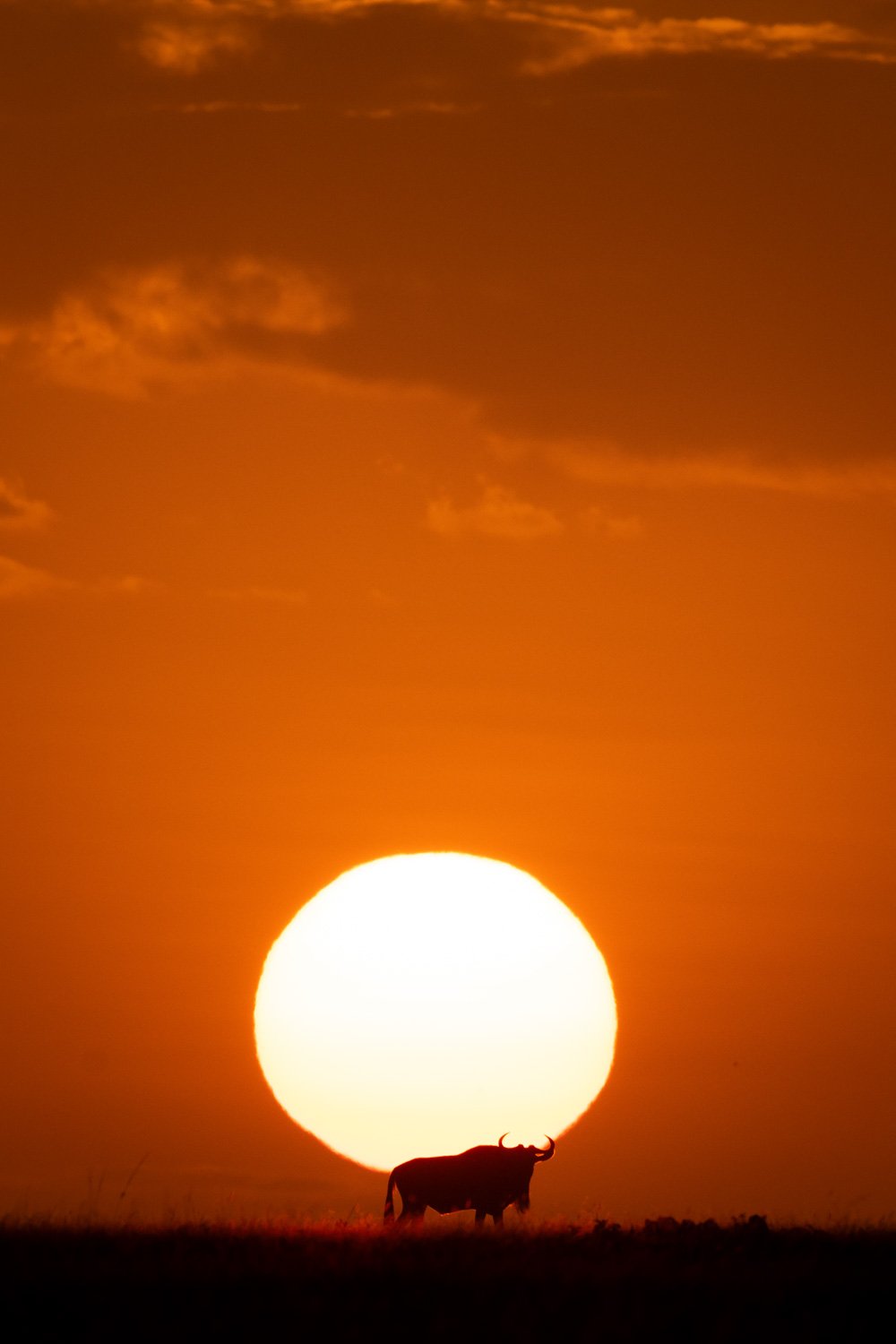
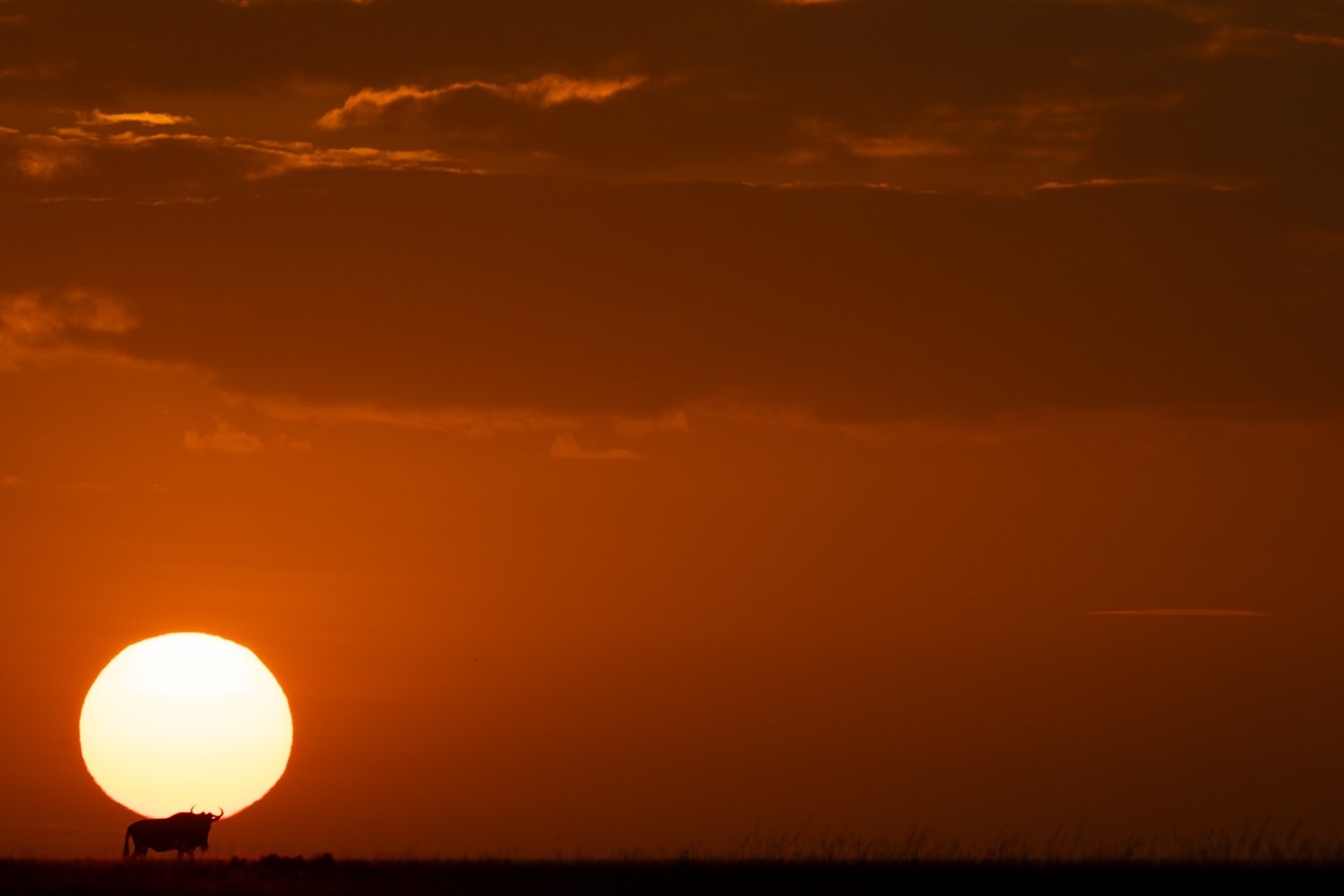
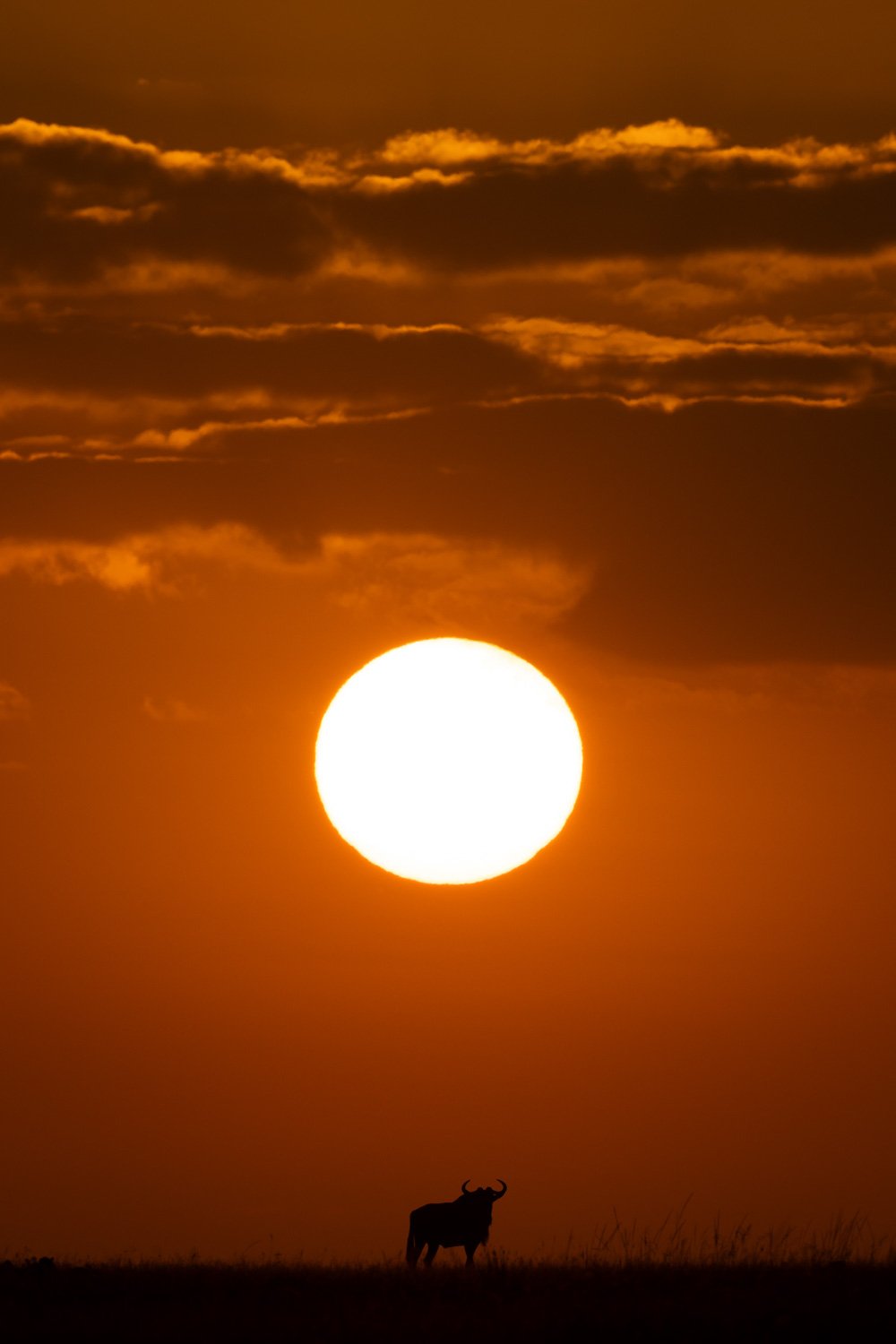
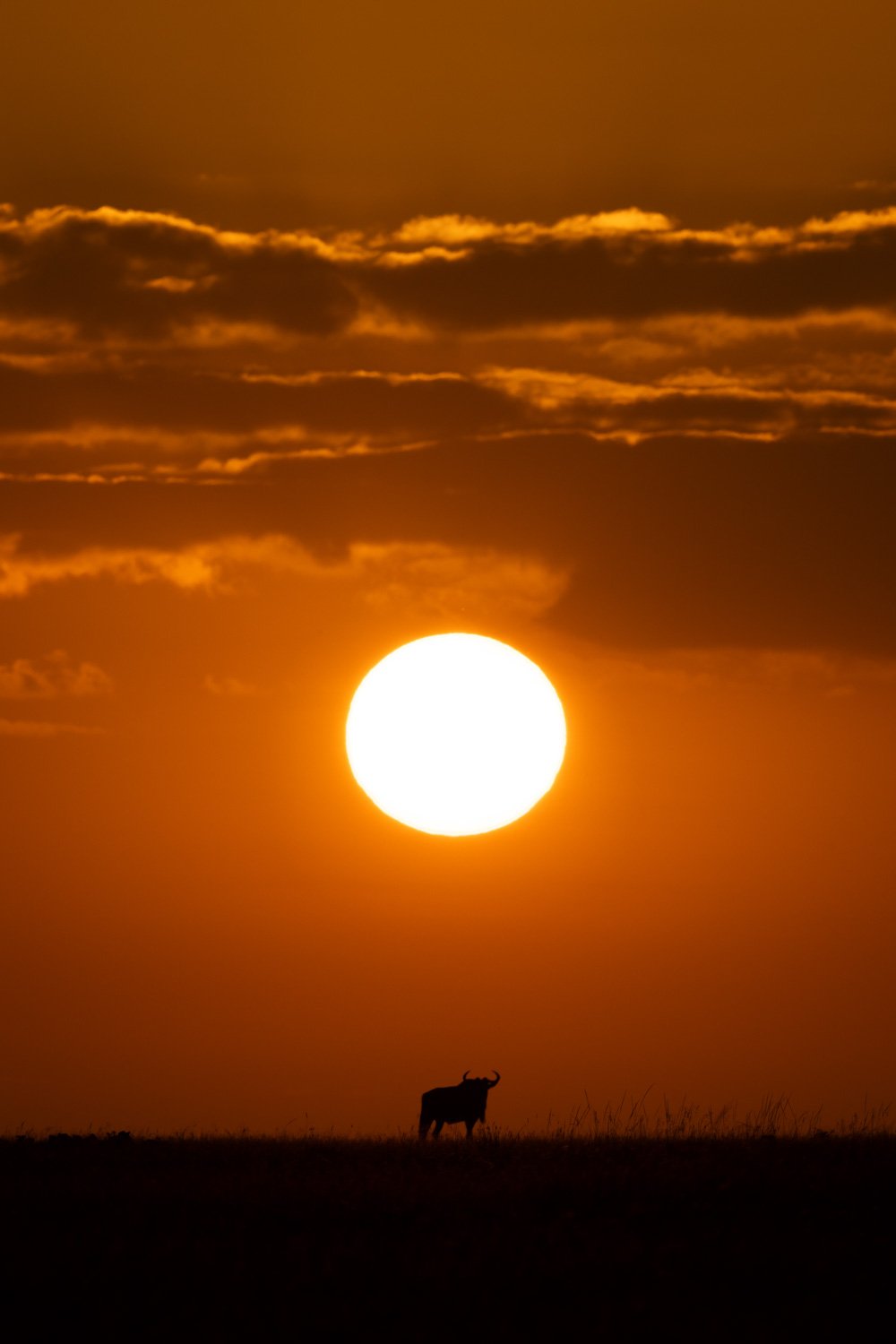

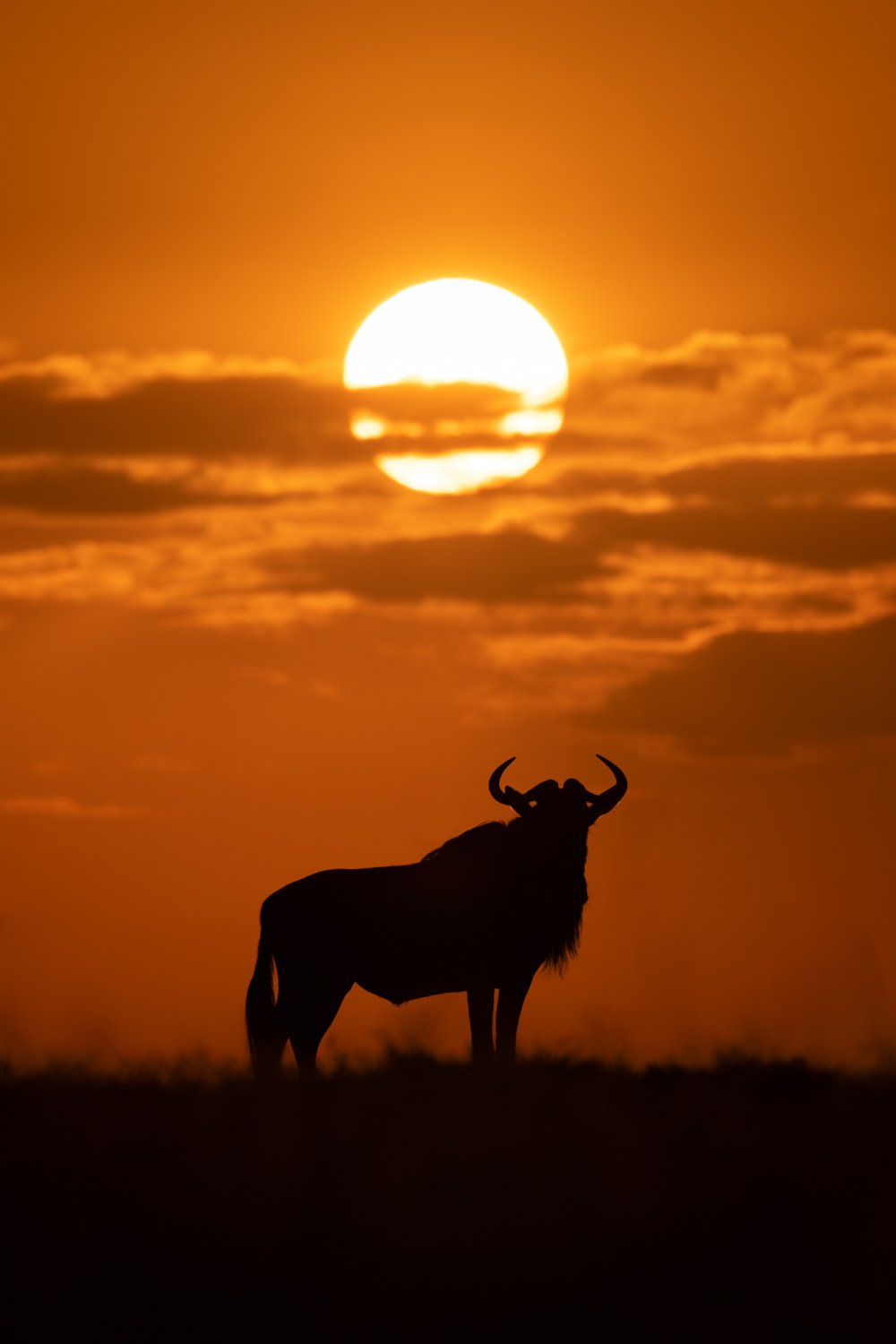
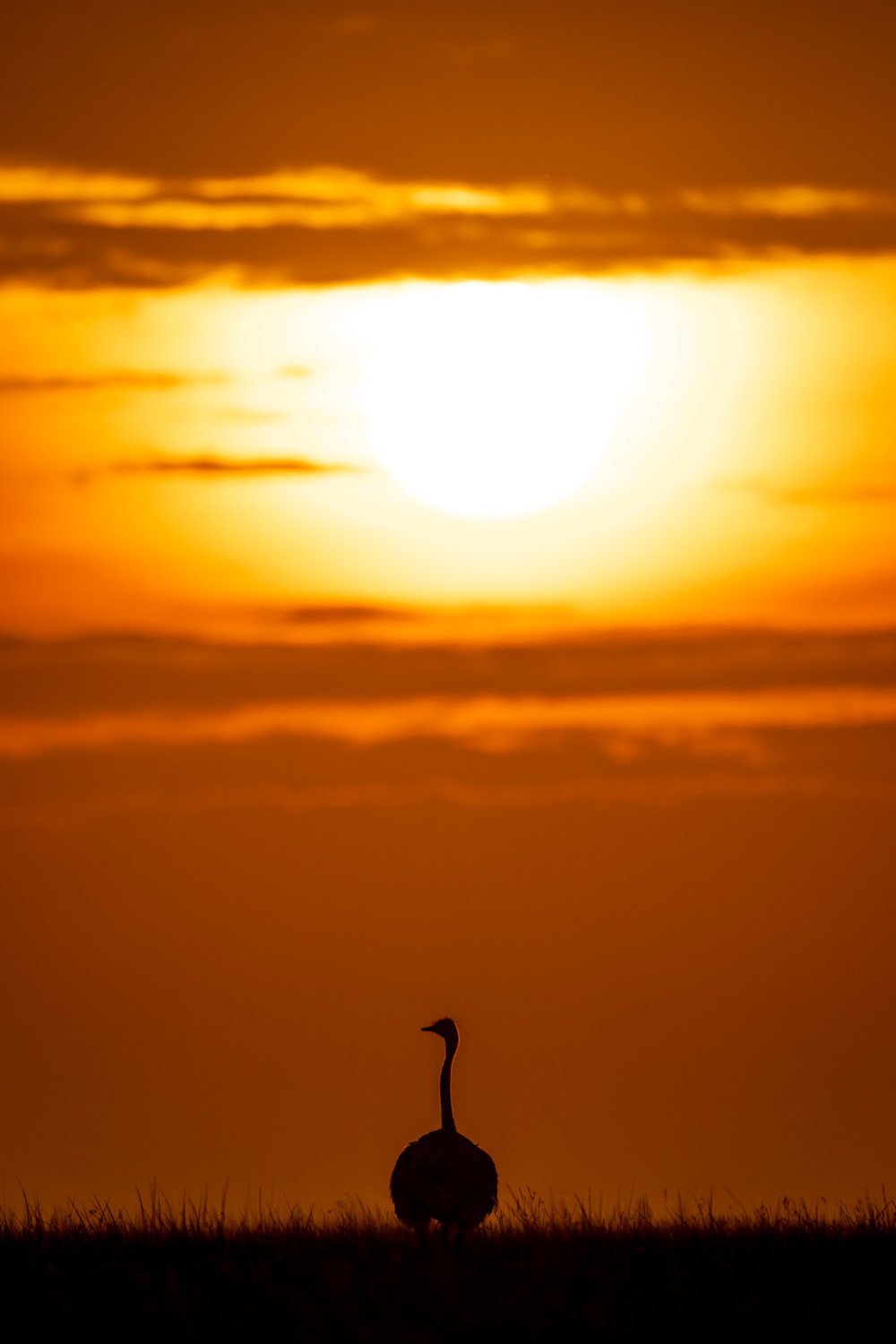
The only other time I was able to take decent shots at dawn was when we saw three male lions walking along the road, apparently looking for intruders. We couldn’t see the sun much, but there was a short period when the light was glorious.
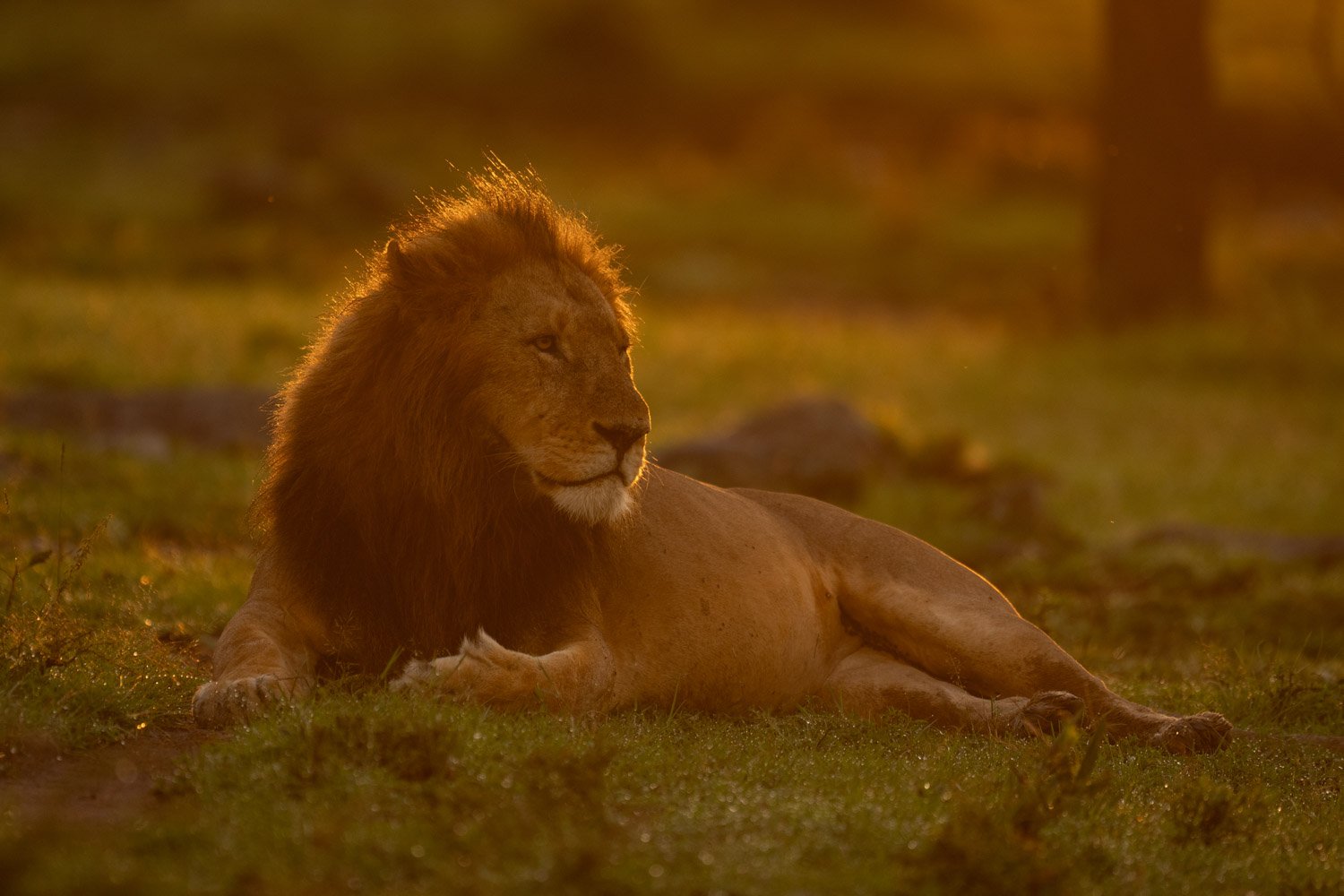
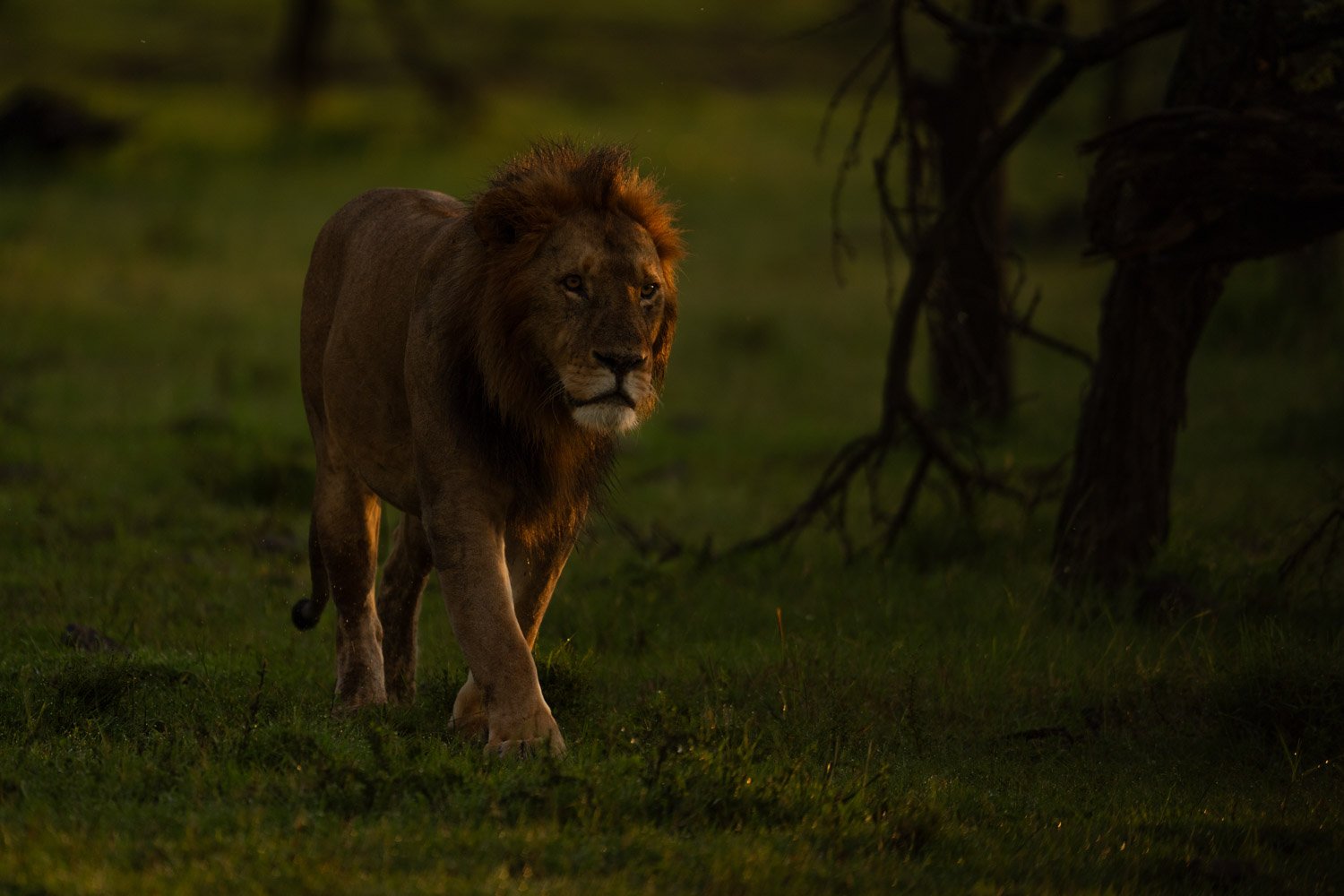
The other impact of the bad weather was the lack of spotted cats. I saw a few lions lying around the place, but they didn’t do much apart from cross a river.
In addition, I didn’t see a single cheetah or leopard in the first few days. As a result, I spent most of my time looking for birds. I took a few portraits of tawny and martial eagles and lilac-breasted rollers.
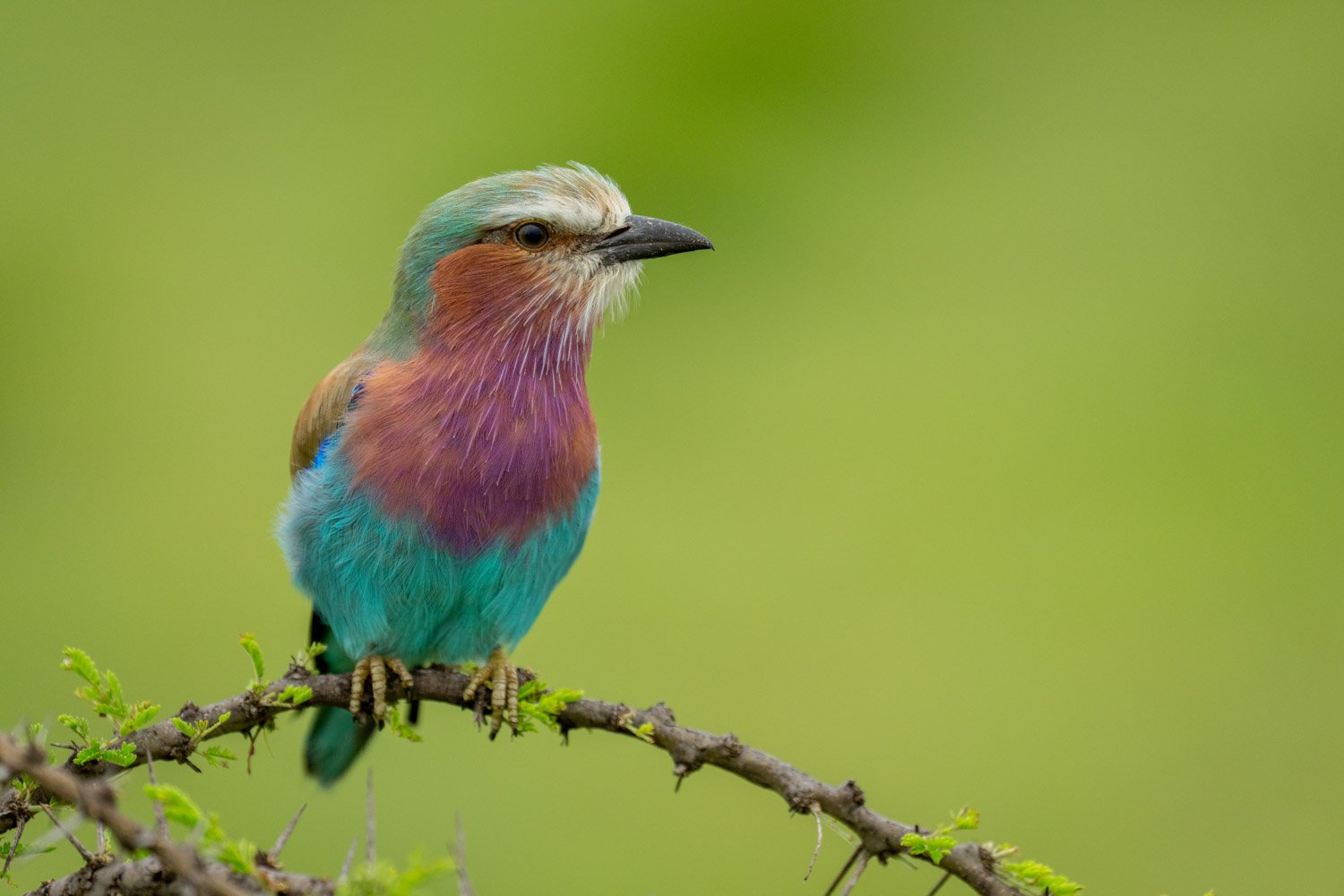
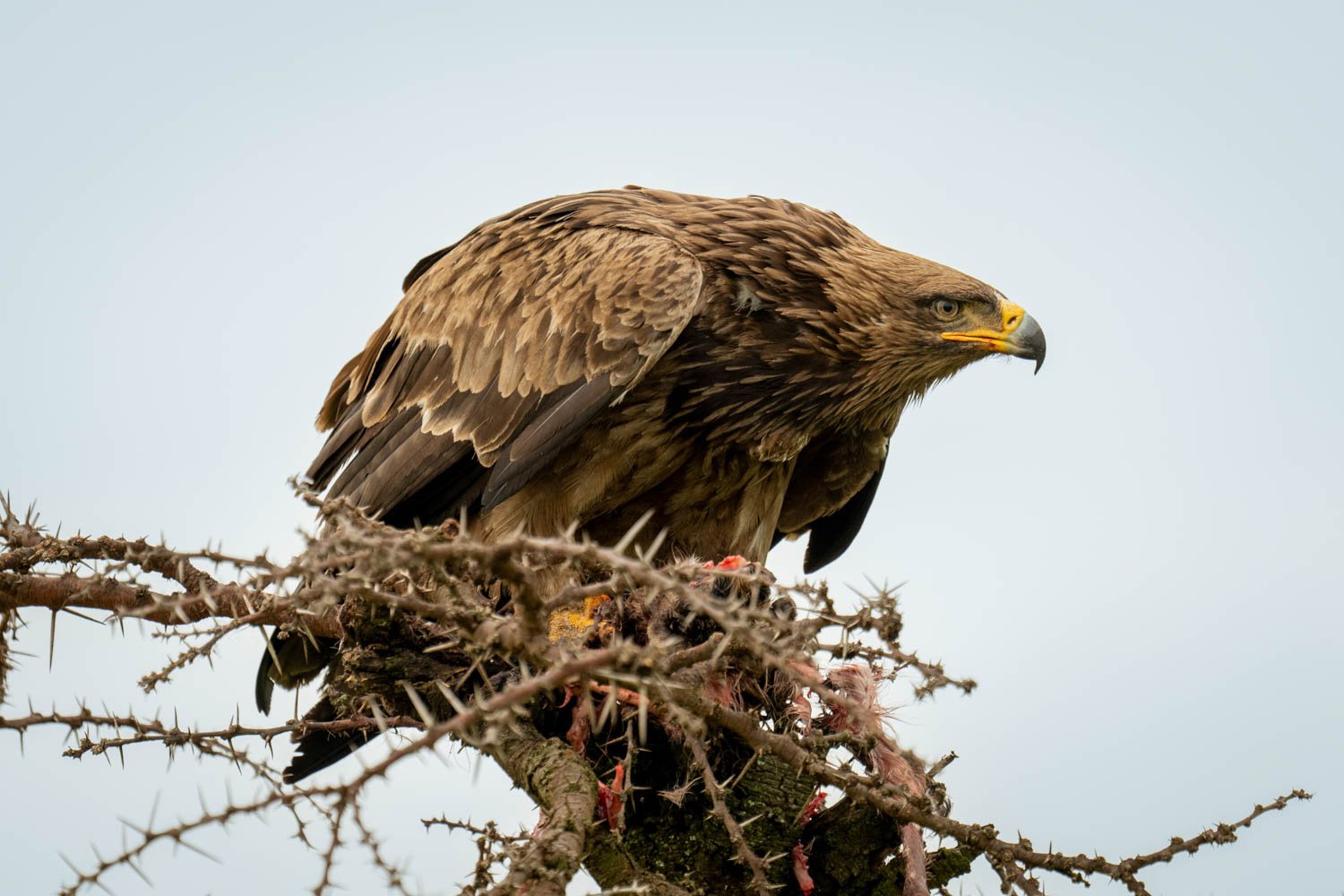
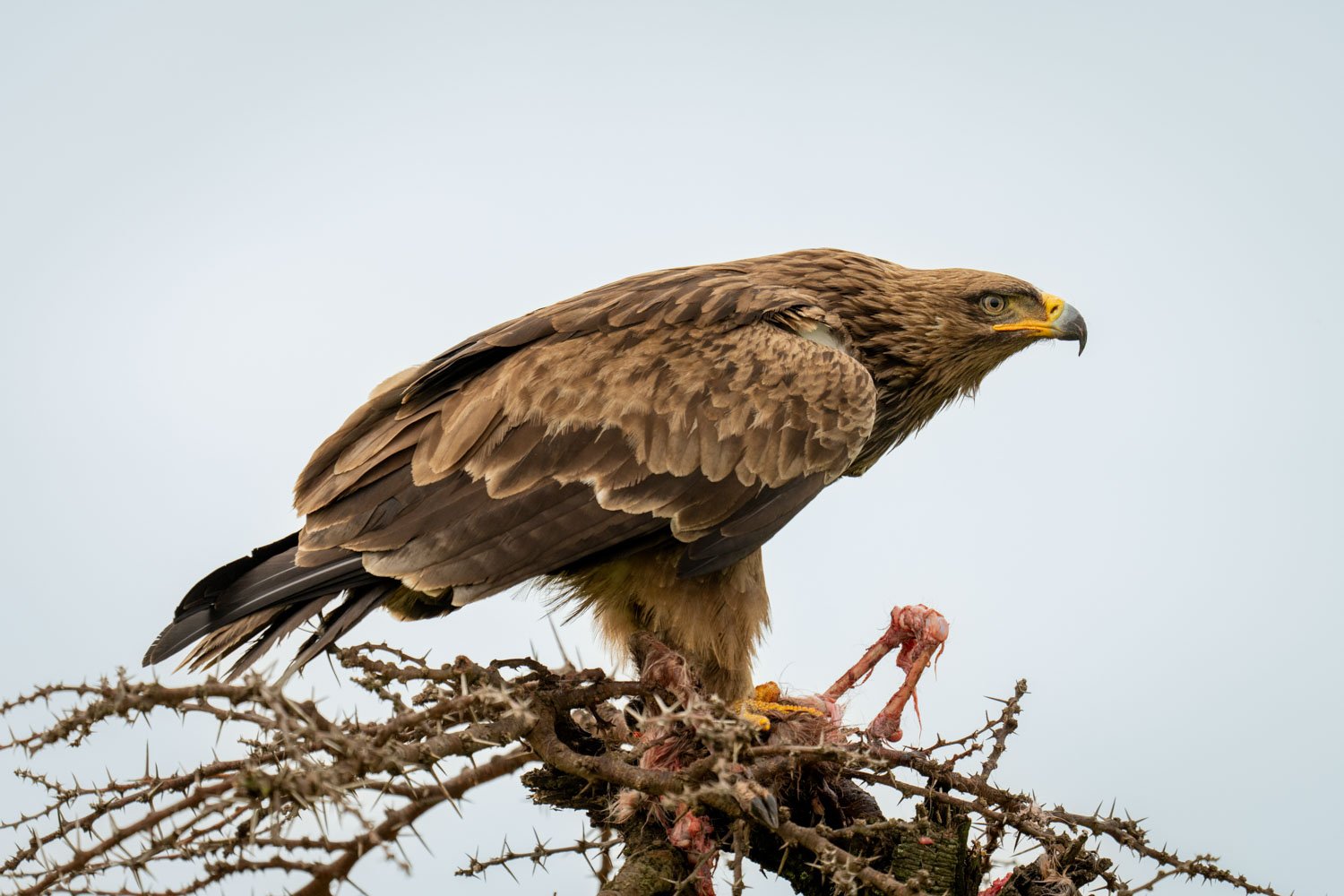
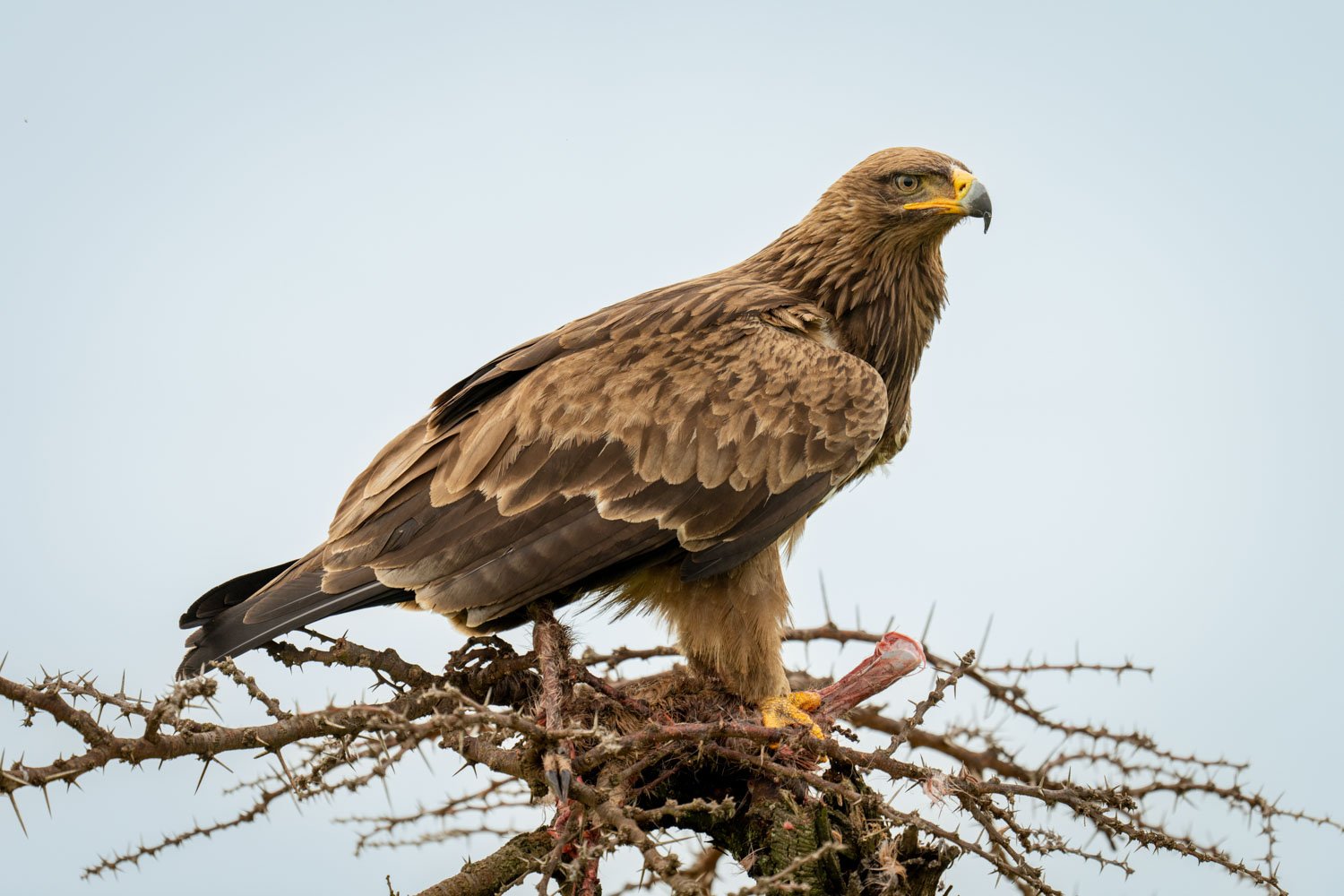
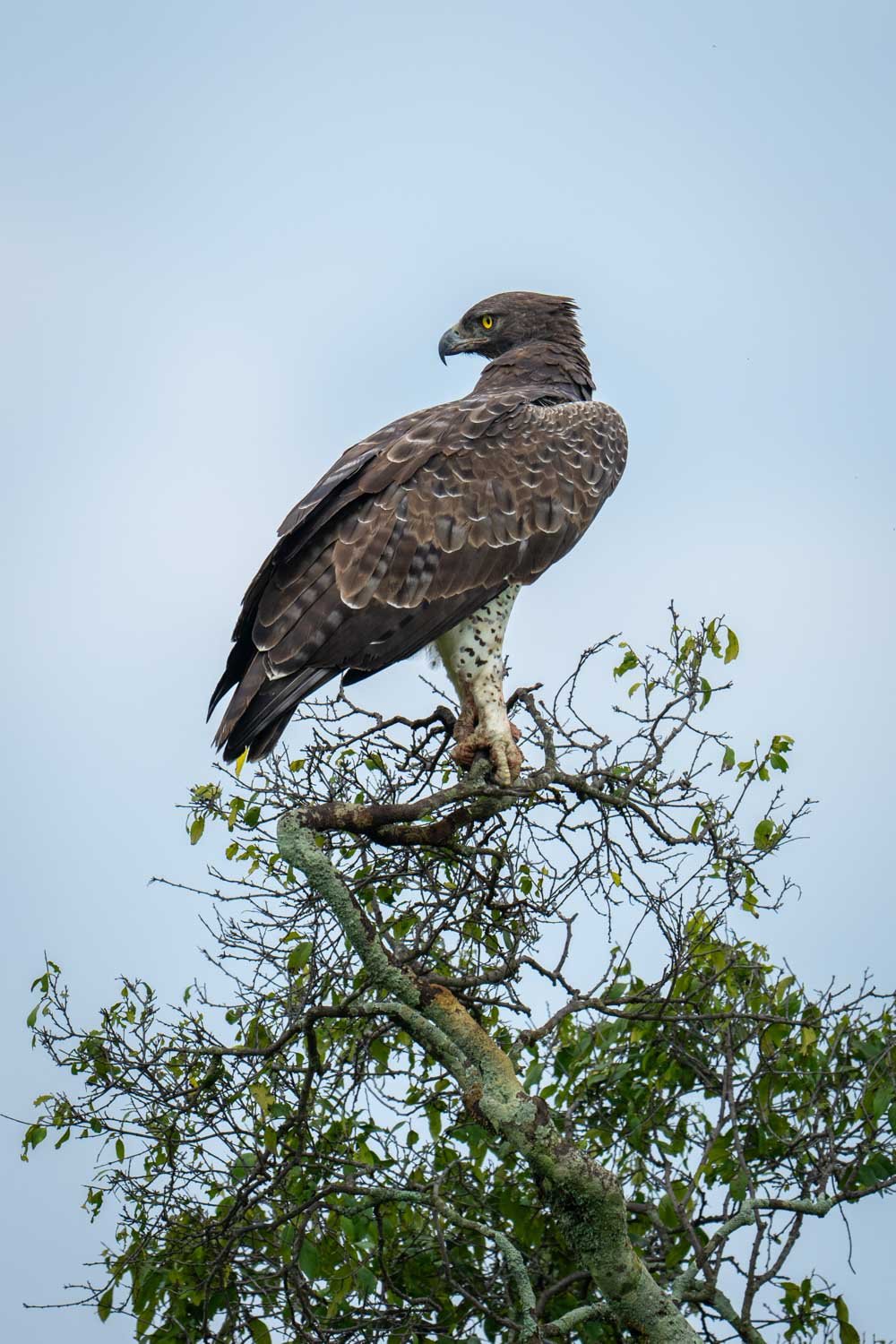
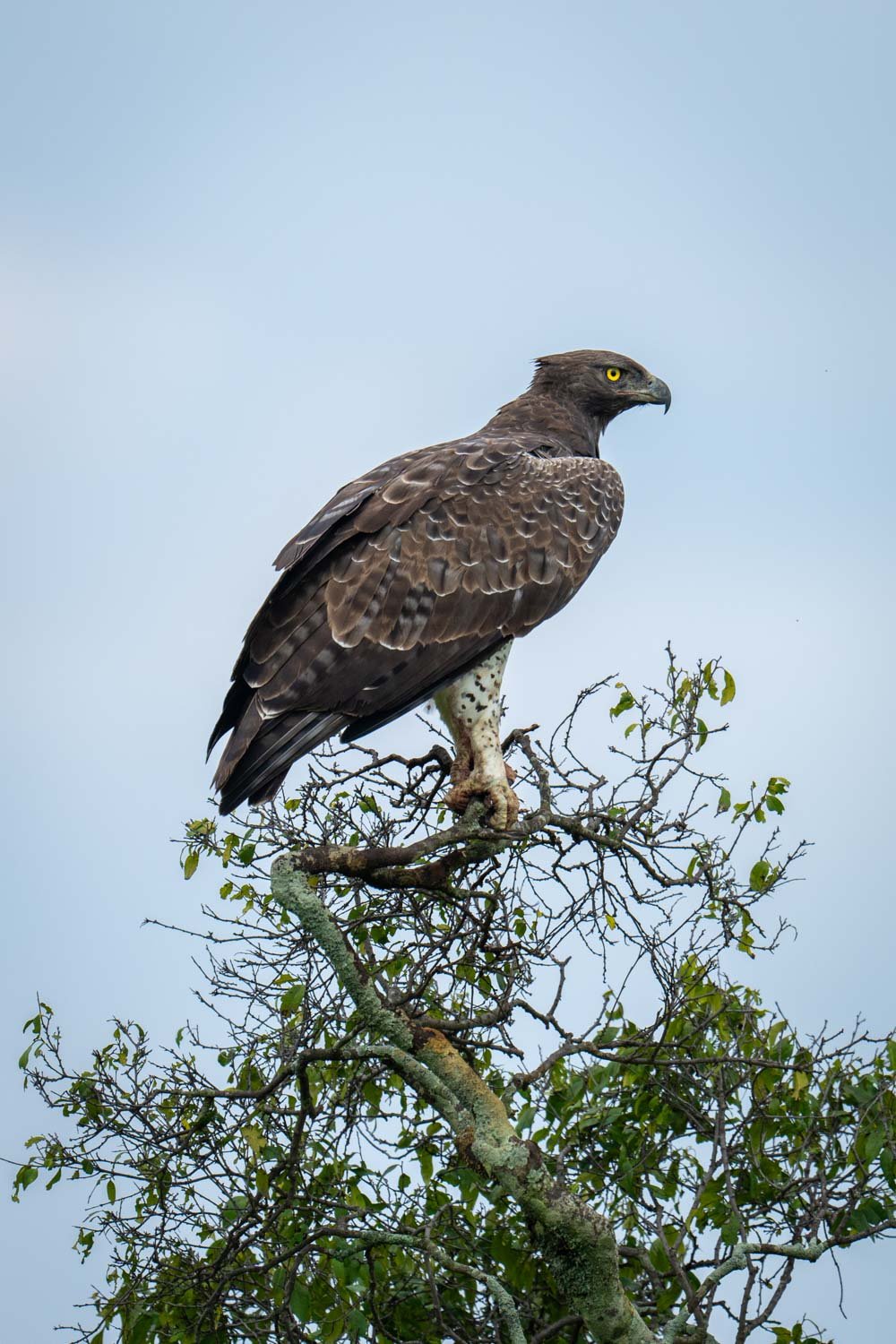
I also managed to catch a few birds in flight…
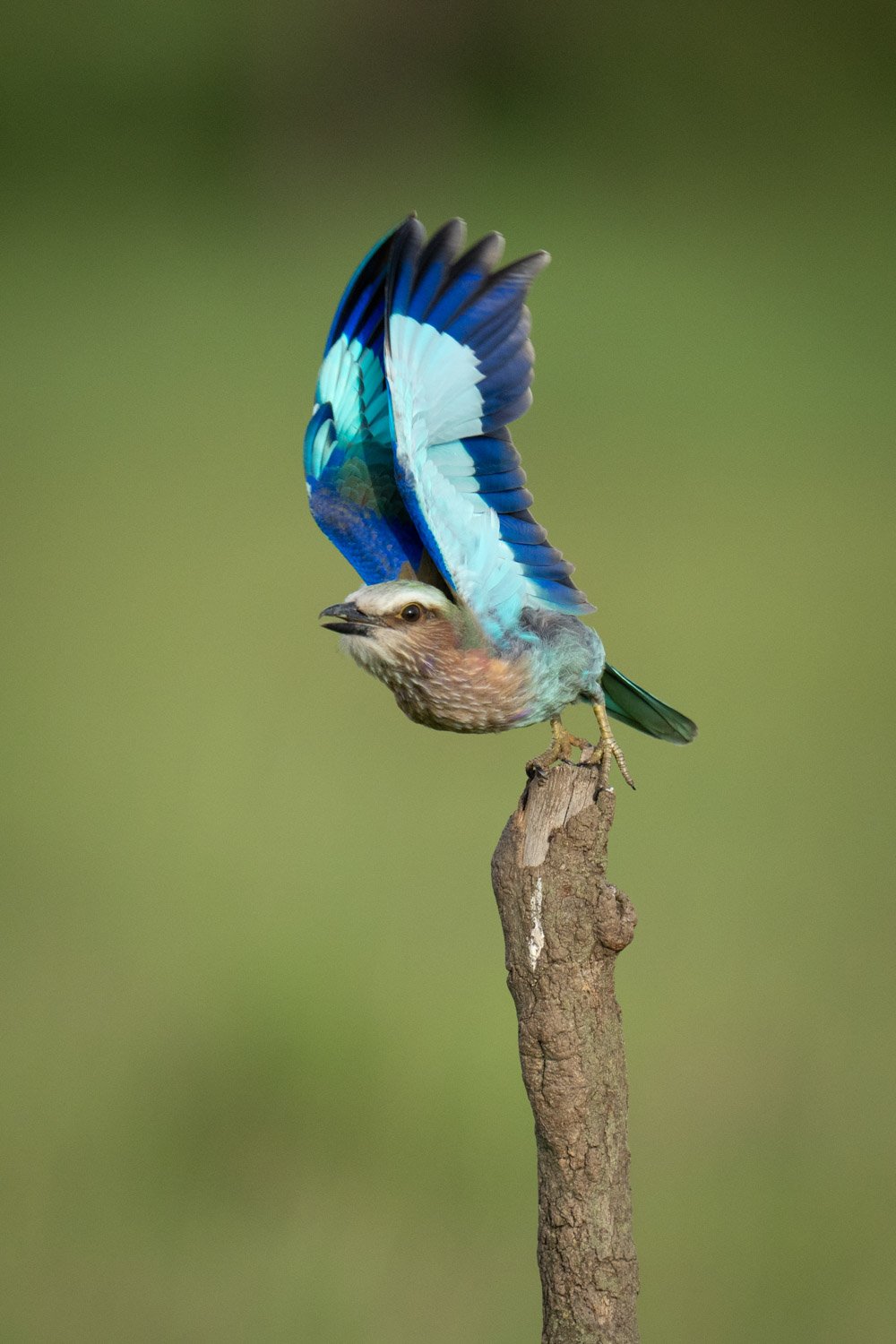
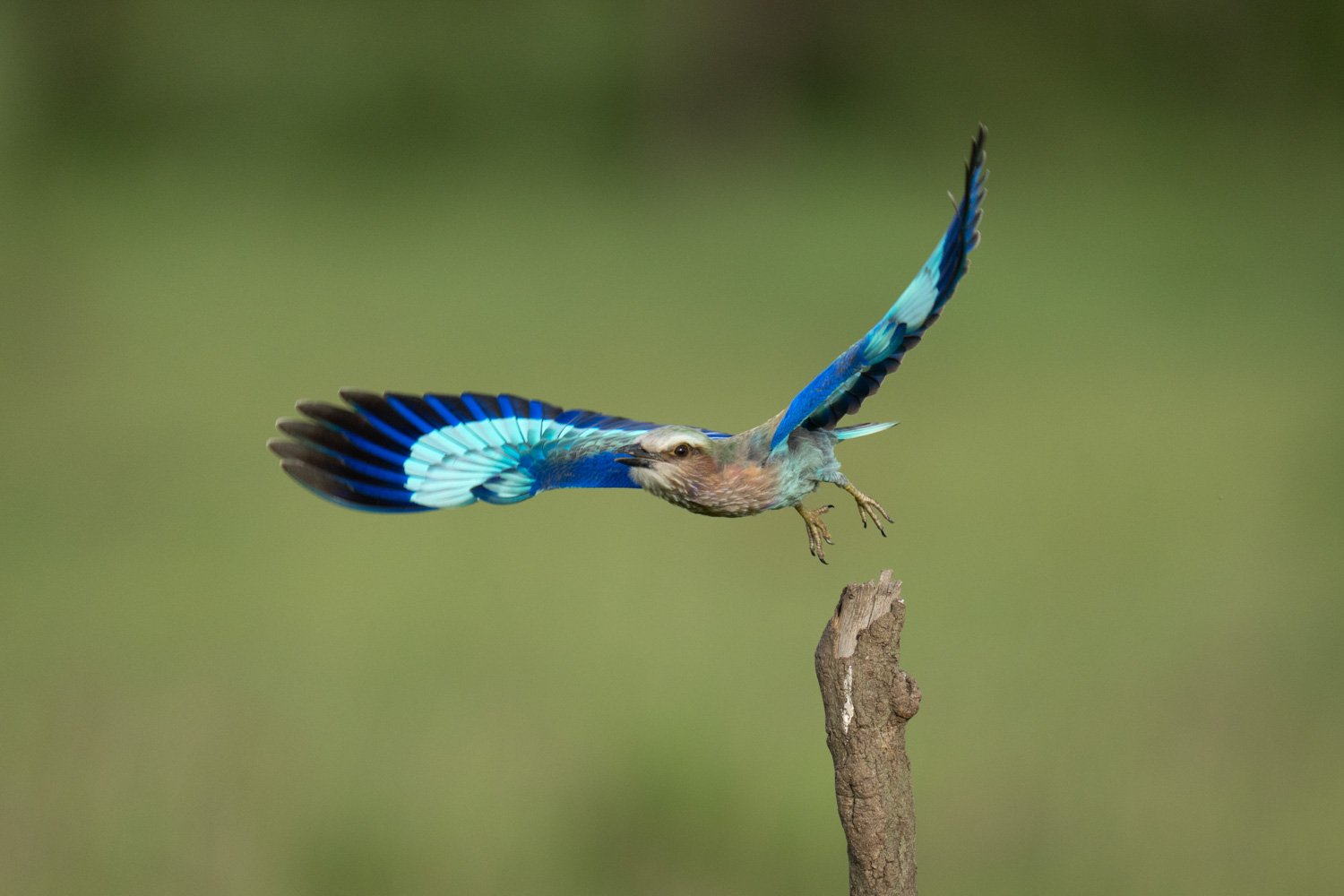
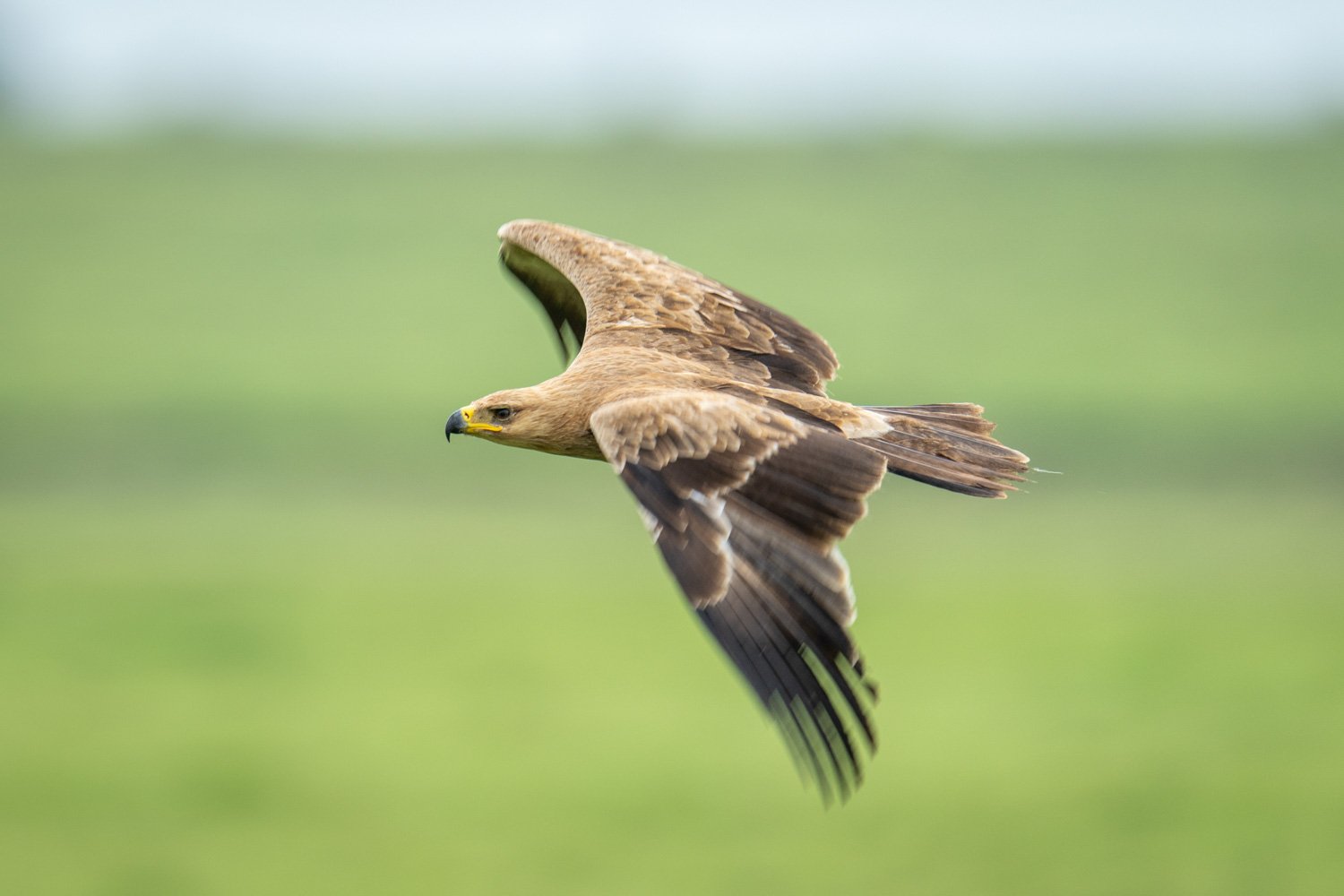
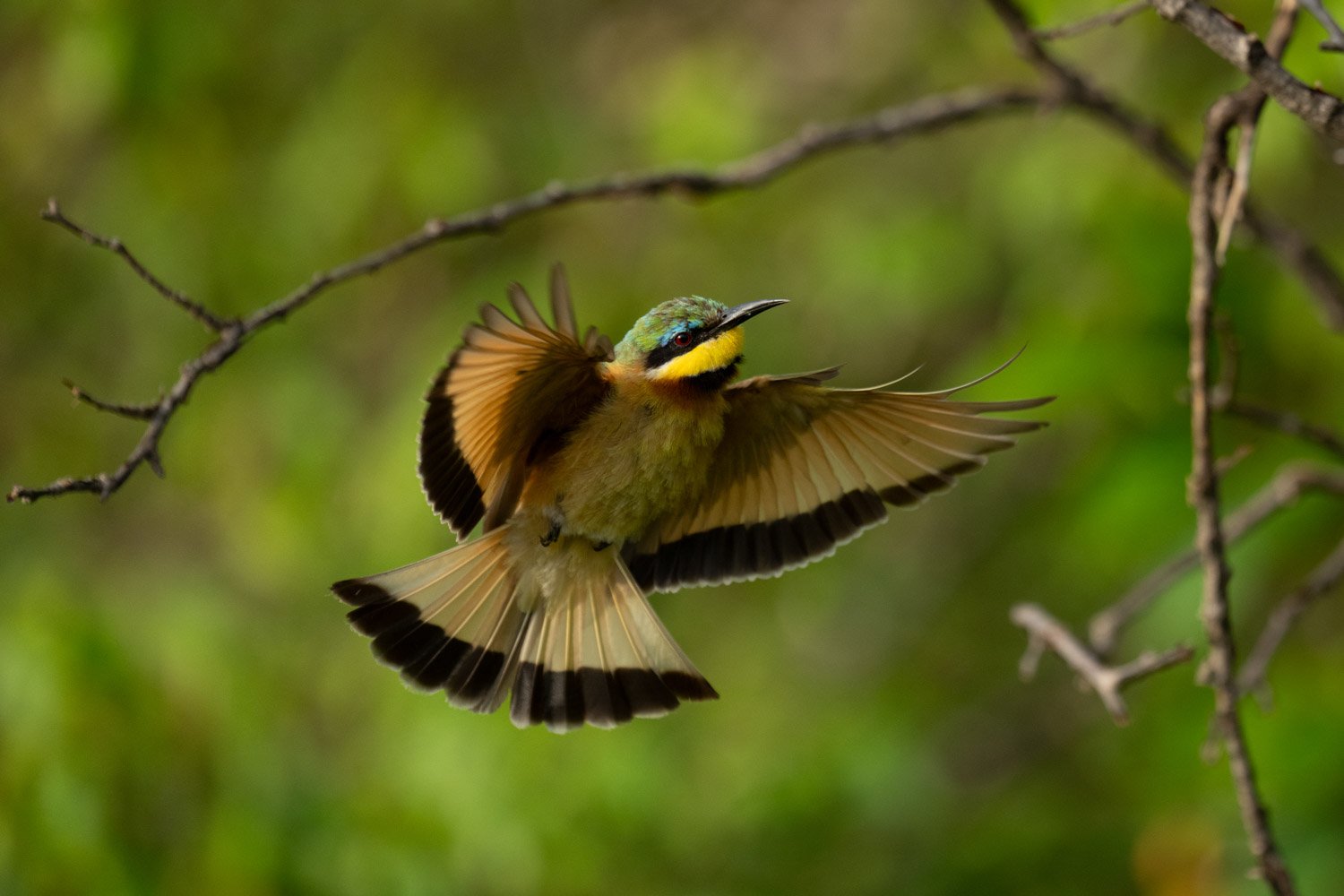
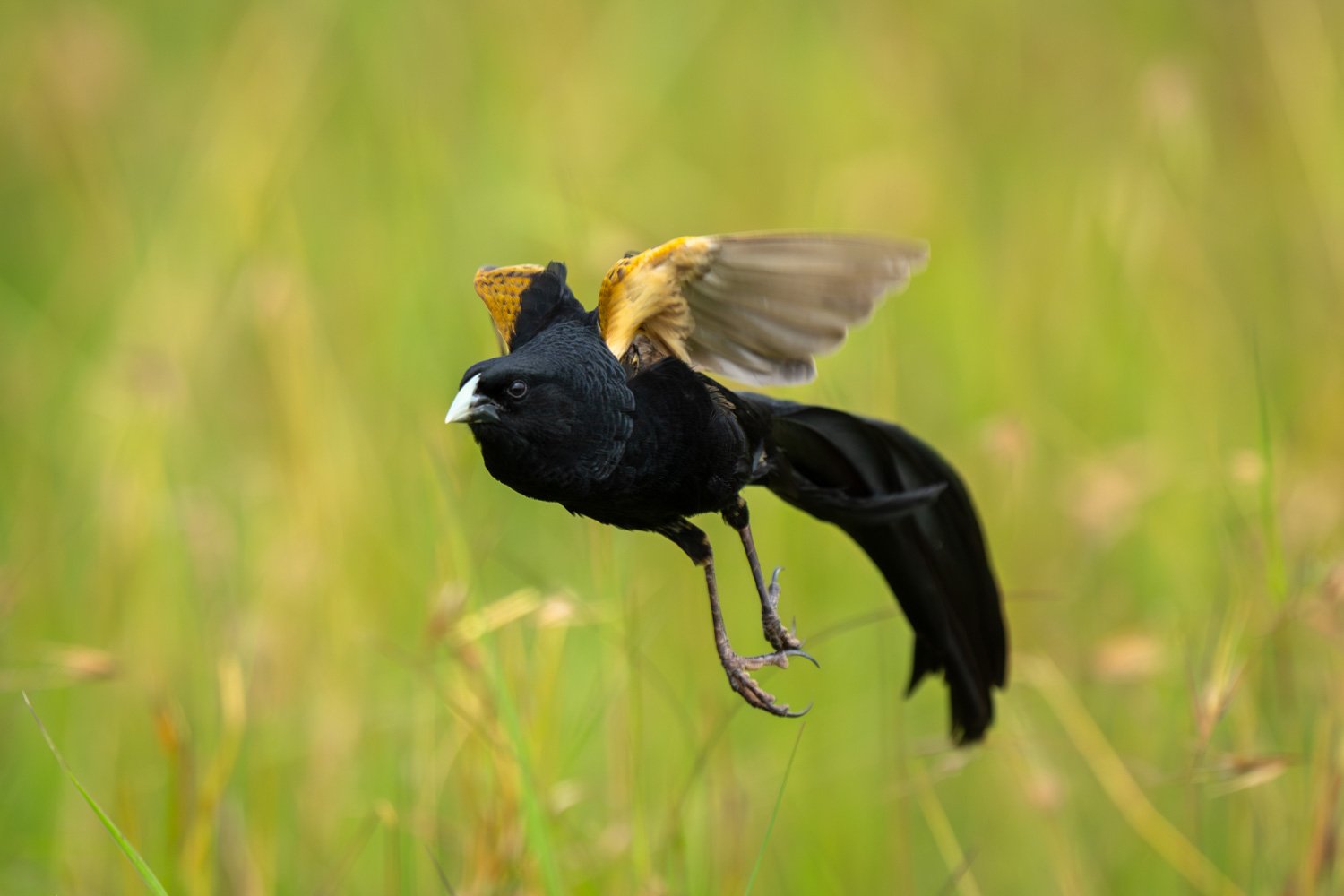
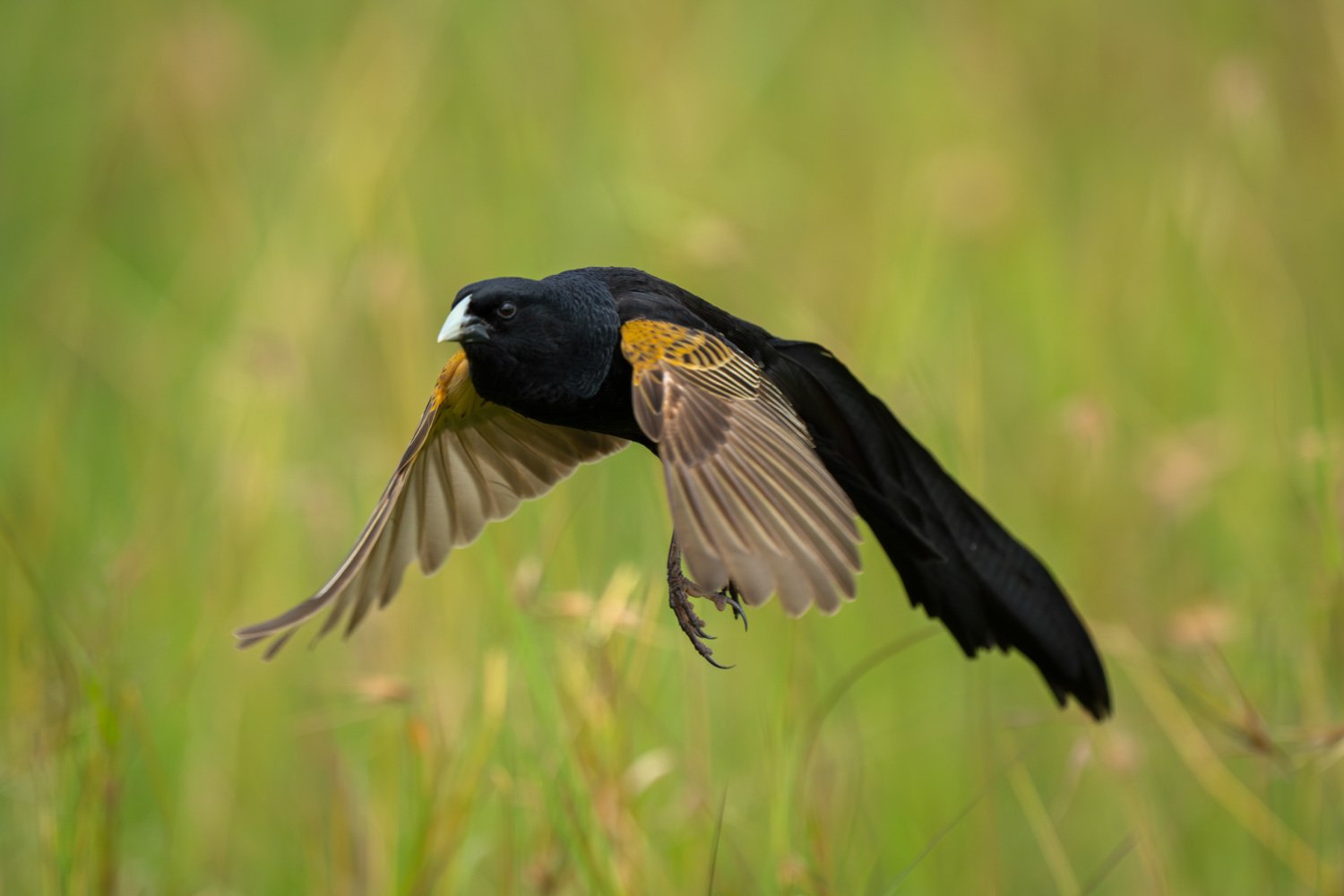
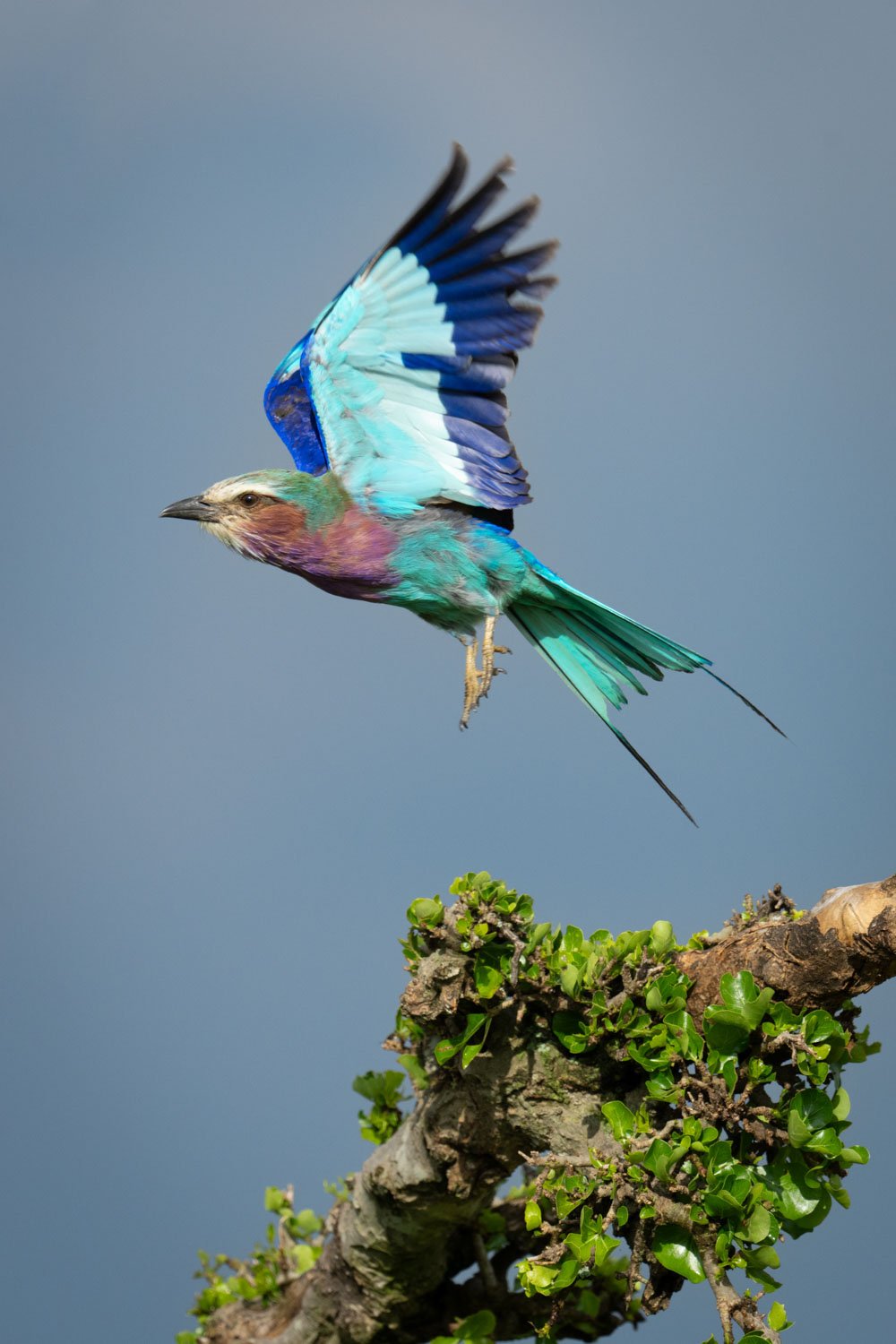
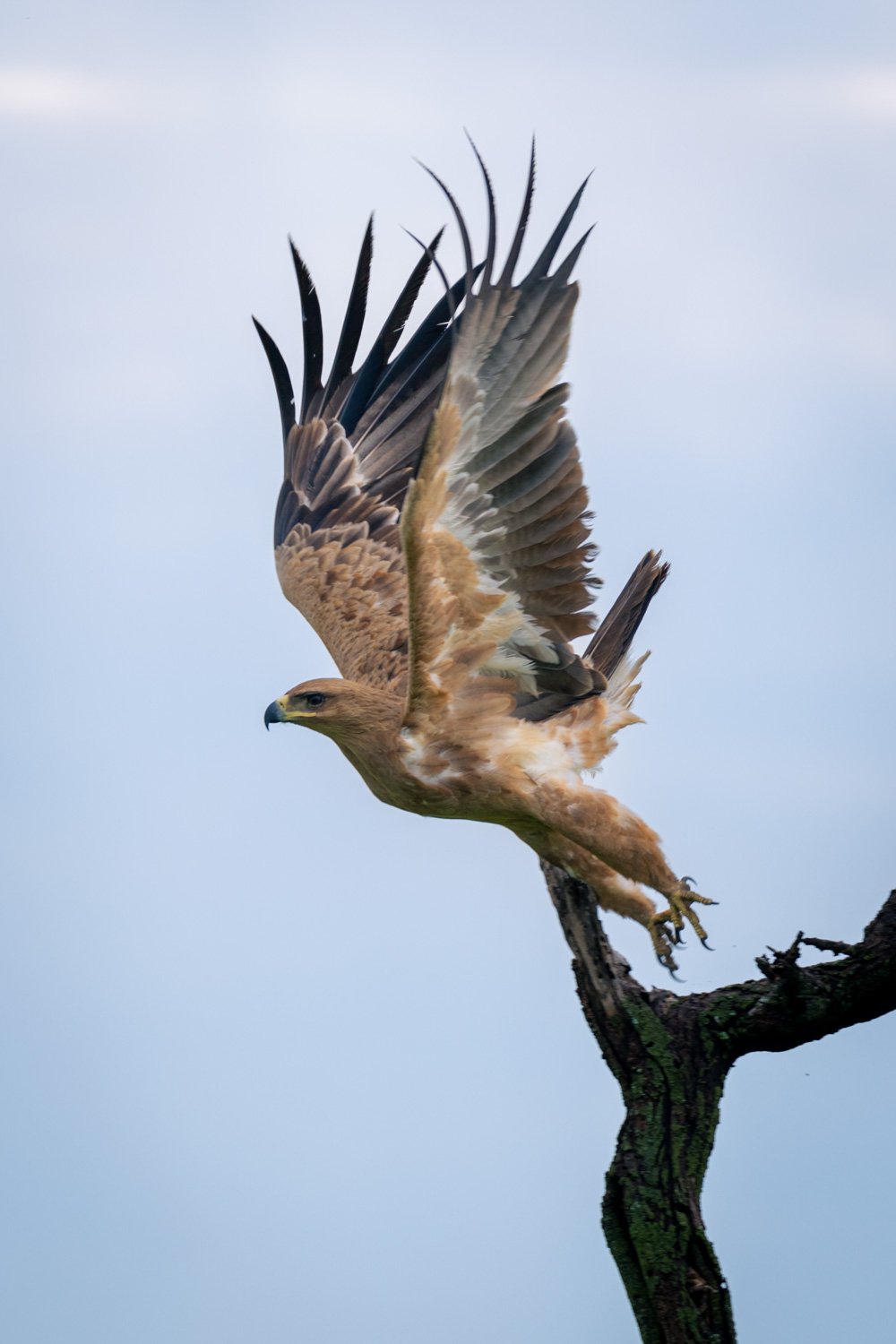
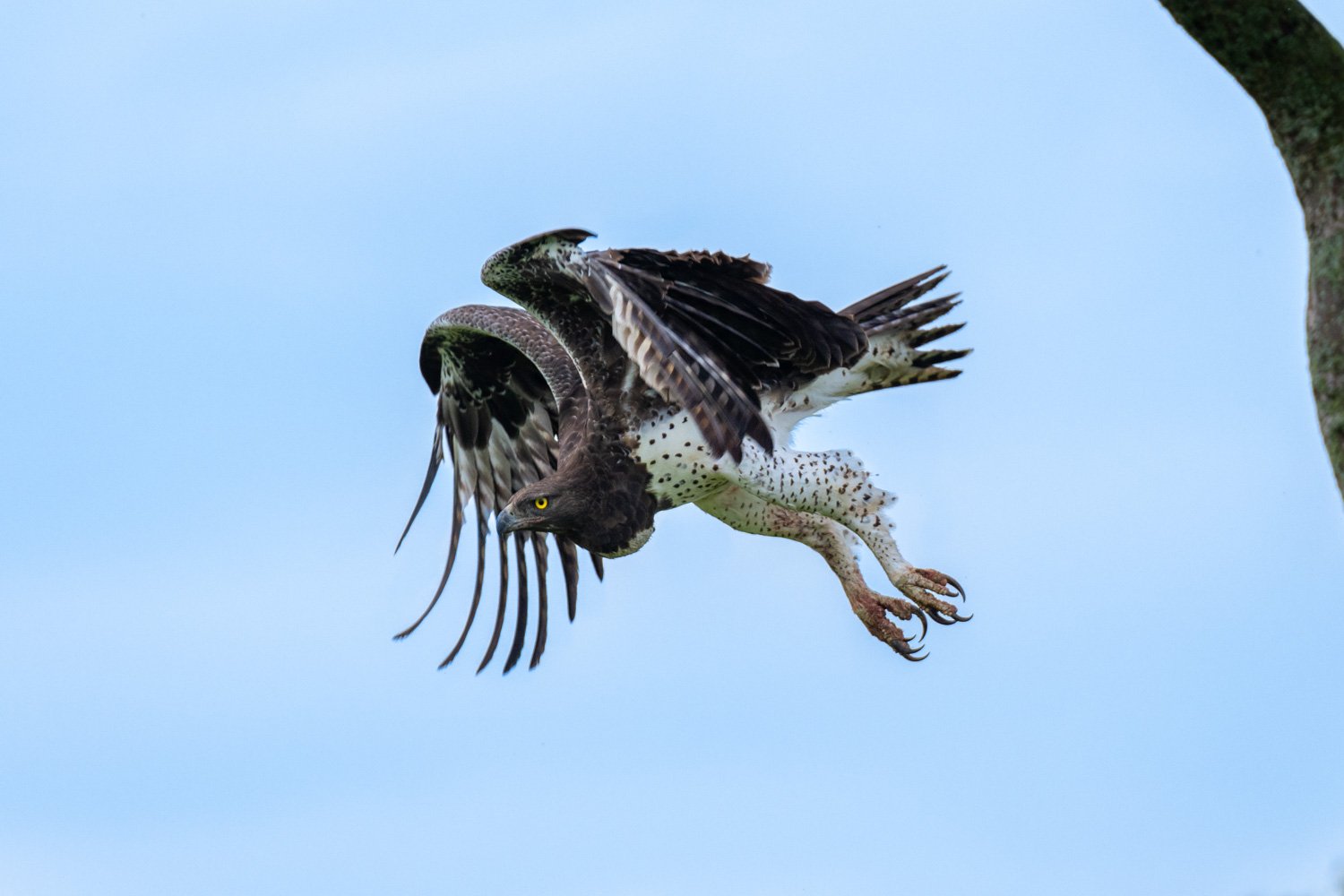
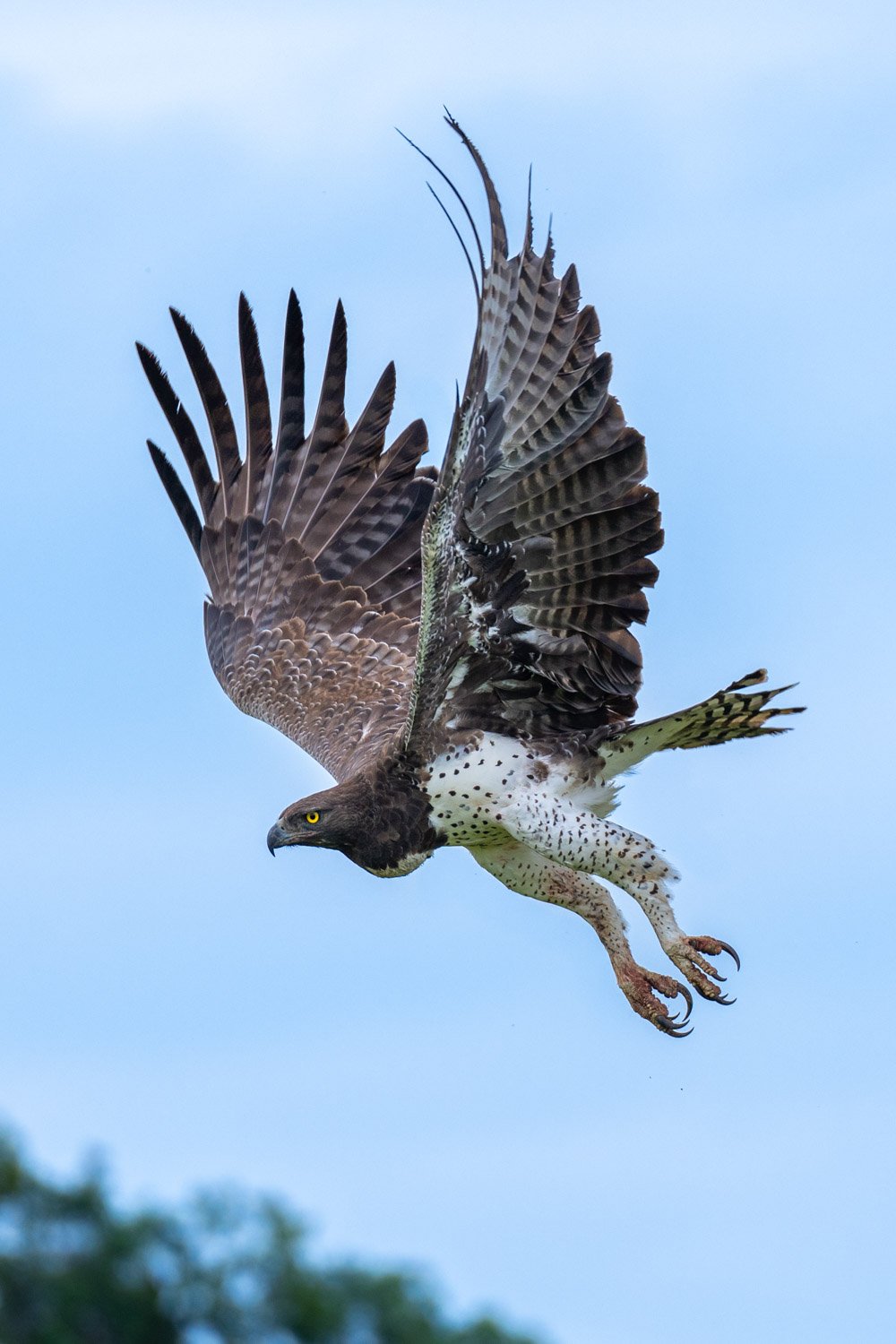
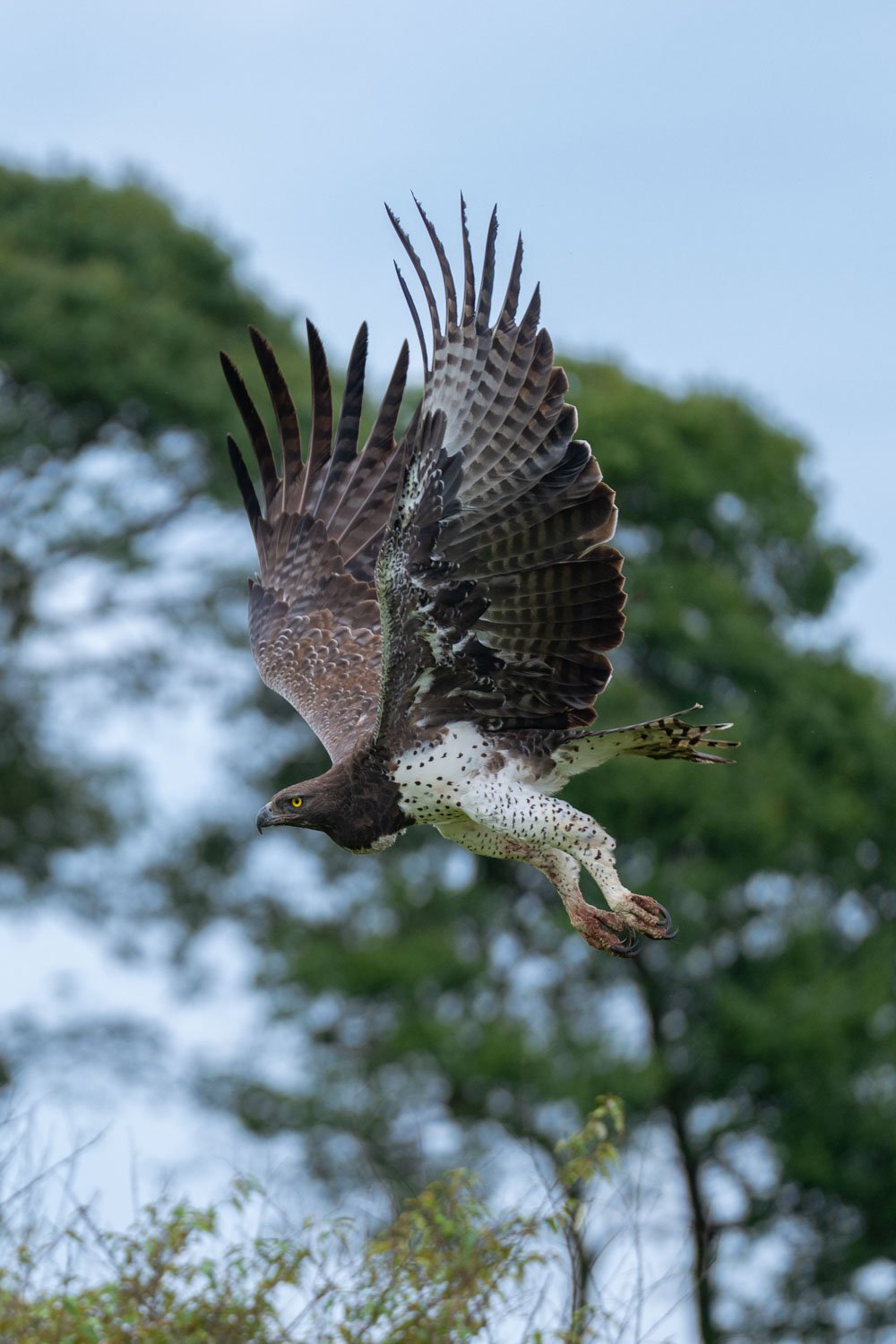
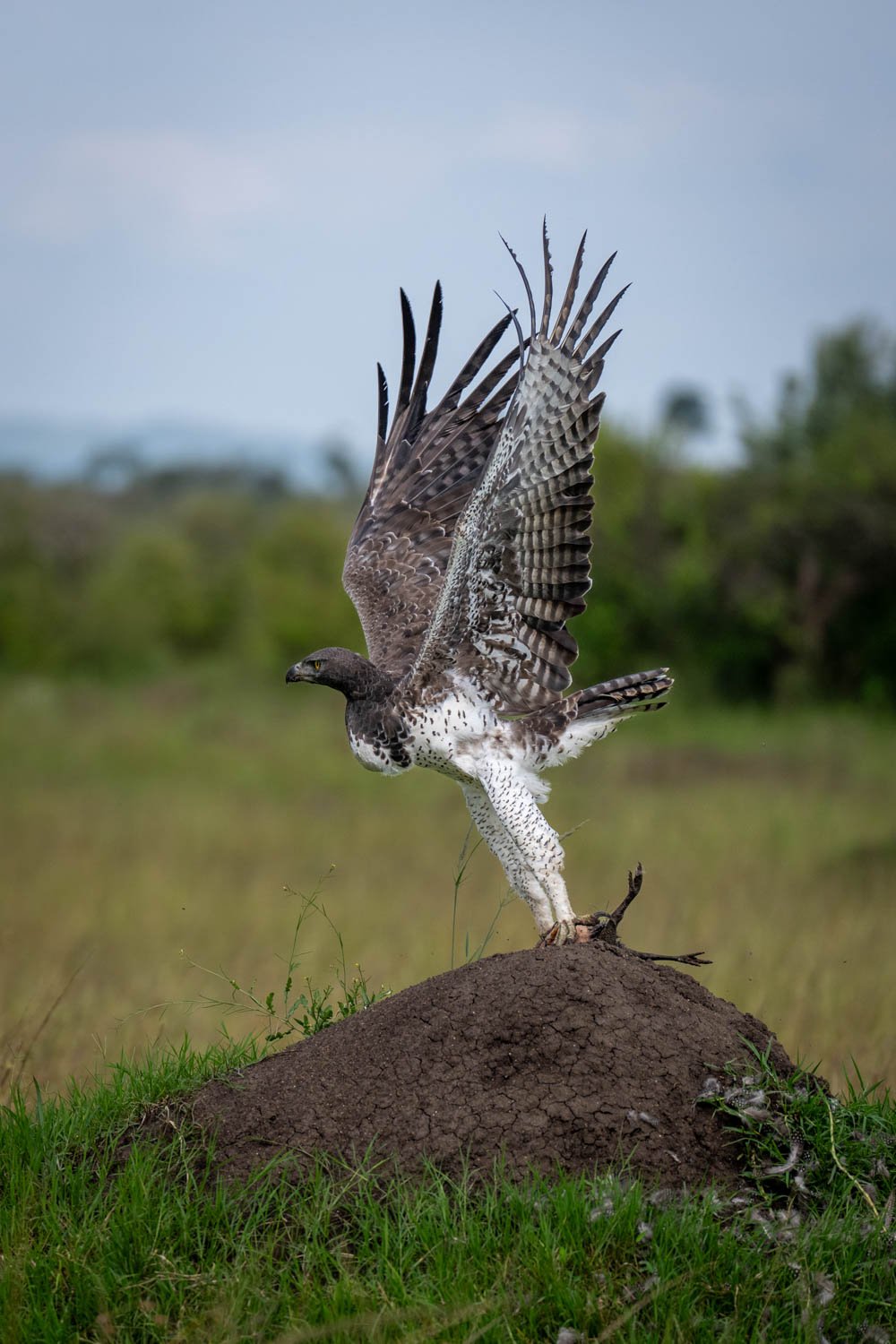
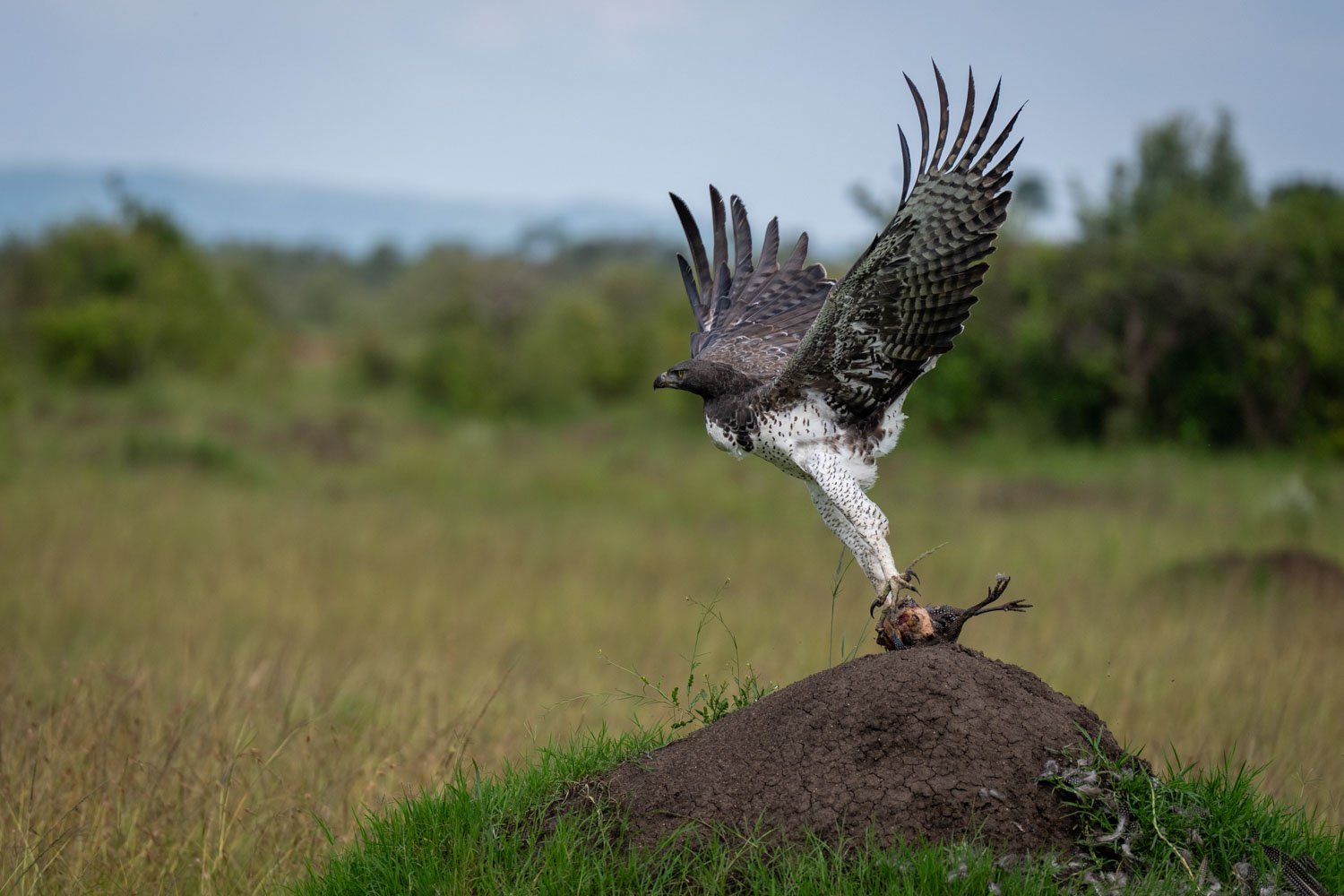
Things started to change for the better when Paul arrived on 11 January. After the electric vehicle broke down, I transferred to Paul’s truck, and I went out with him a few times during the rest of my stay.
The Exodus leg of the trip started on the 12th, but I spent most of the next few days with Patrick and Mary. Paul let them join up with us, and we ended up going on game drives together and sitting together at mealtimes. Paul even went out on a game drive with them—even though they weren’t part of his group!
The first real action happened when we saw two lions stalking and then chasing a topi. Paul positioned our vehicle right behind the prey, so we could line up both predator and prey. Unfortunately, my camera had accidentally slipped into single shot mode, so I only managed to take one picture!
That afternoon, we saw two lions mating three times, and on the following day, we had one especially good sighting of a pride of lions. We saw an impatient lioness that failed to wait for a zebra to cross the river towards her and had to give up the chase. We also saw a lioness jump on one of her sisters and then a male lion sharpening its claws on a tree. In 11 years of being a wildlife photographer, I’d never seen any of those things before…!
Here are a few of my favourite lion shots—including a slow pan in Paul’s honour!
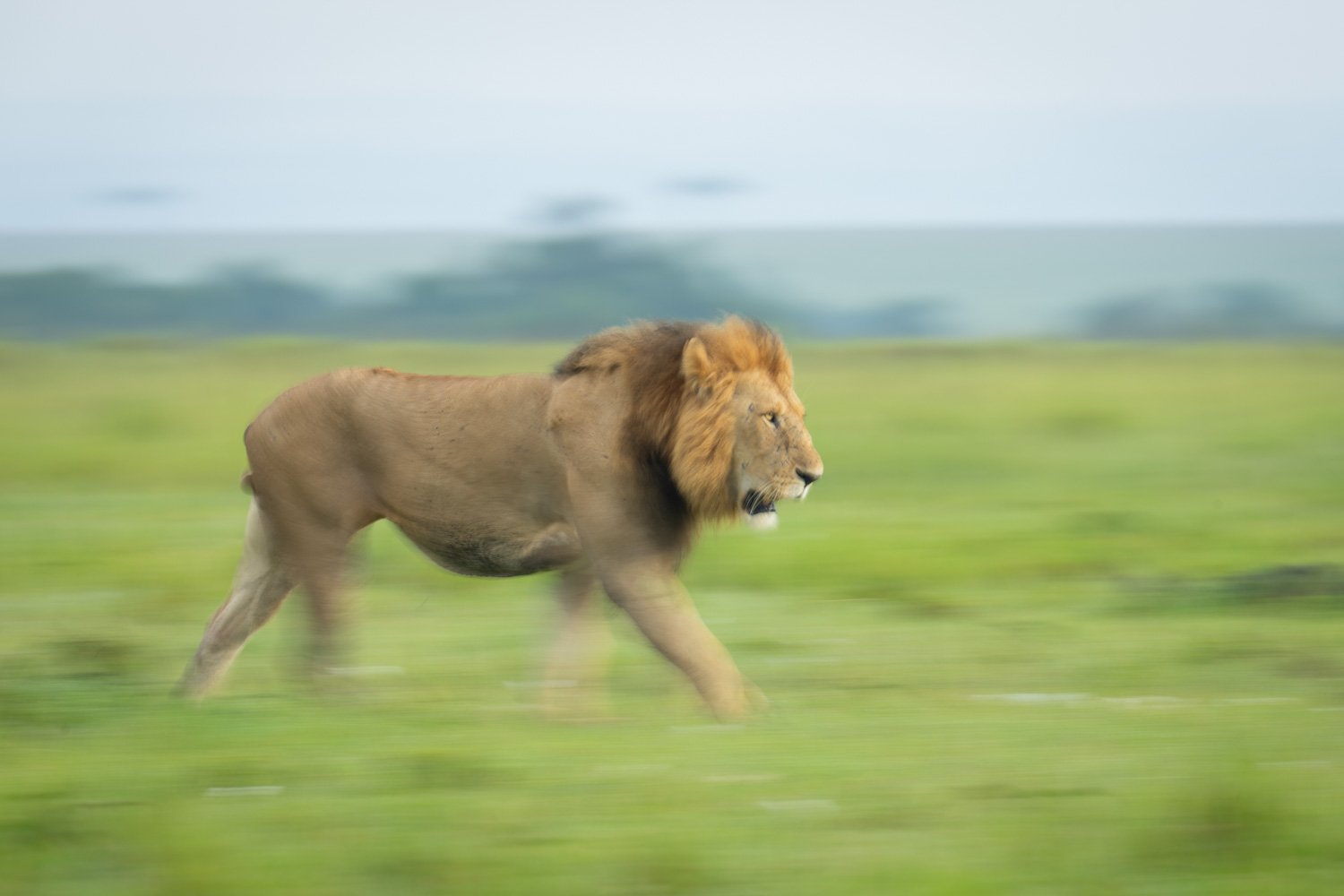
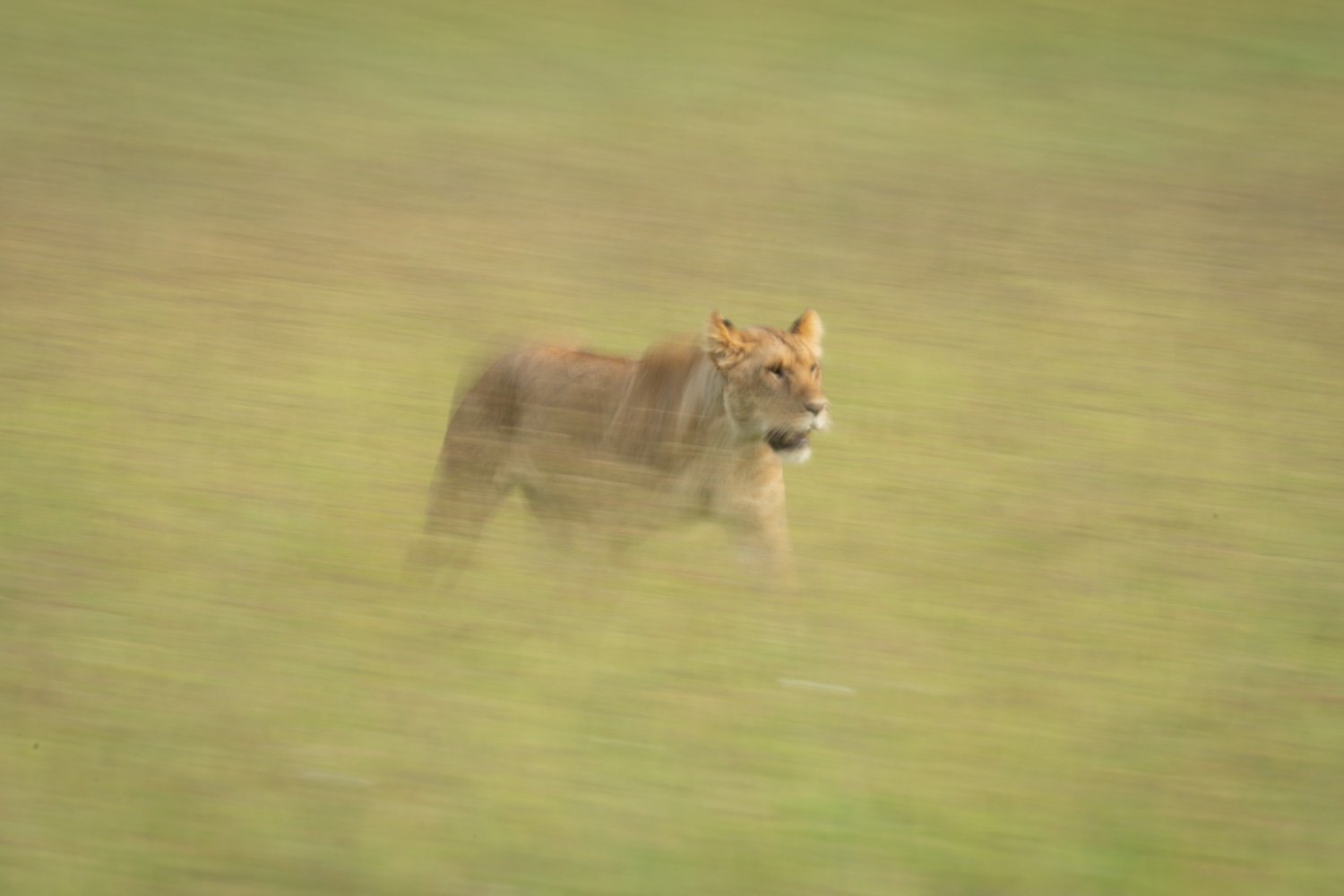
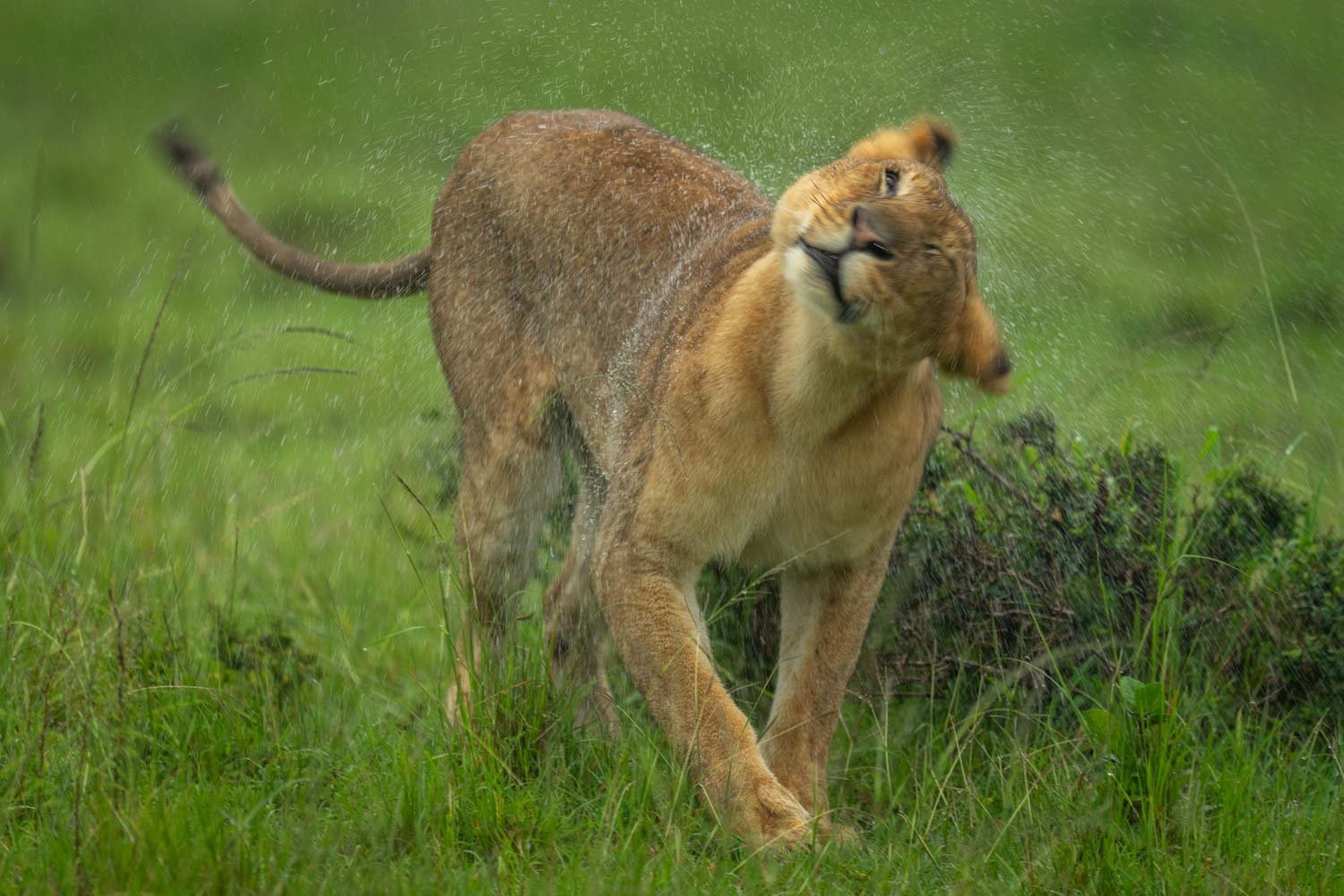
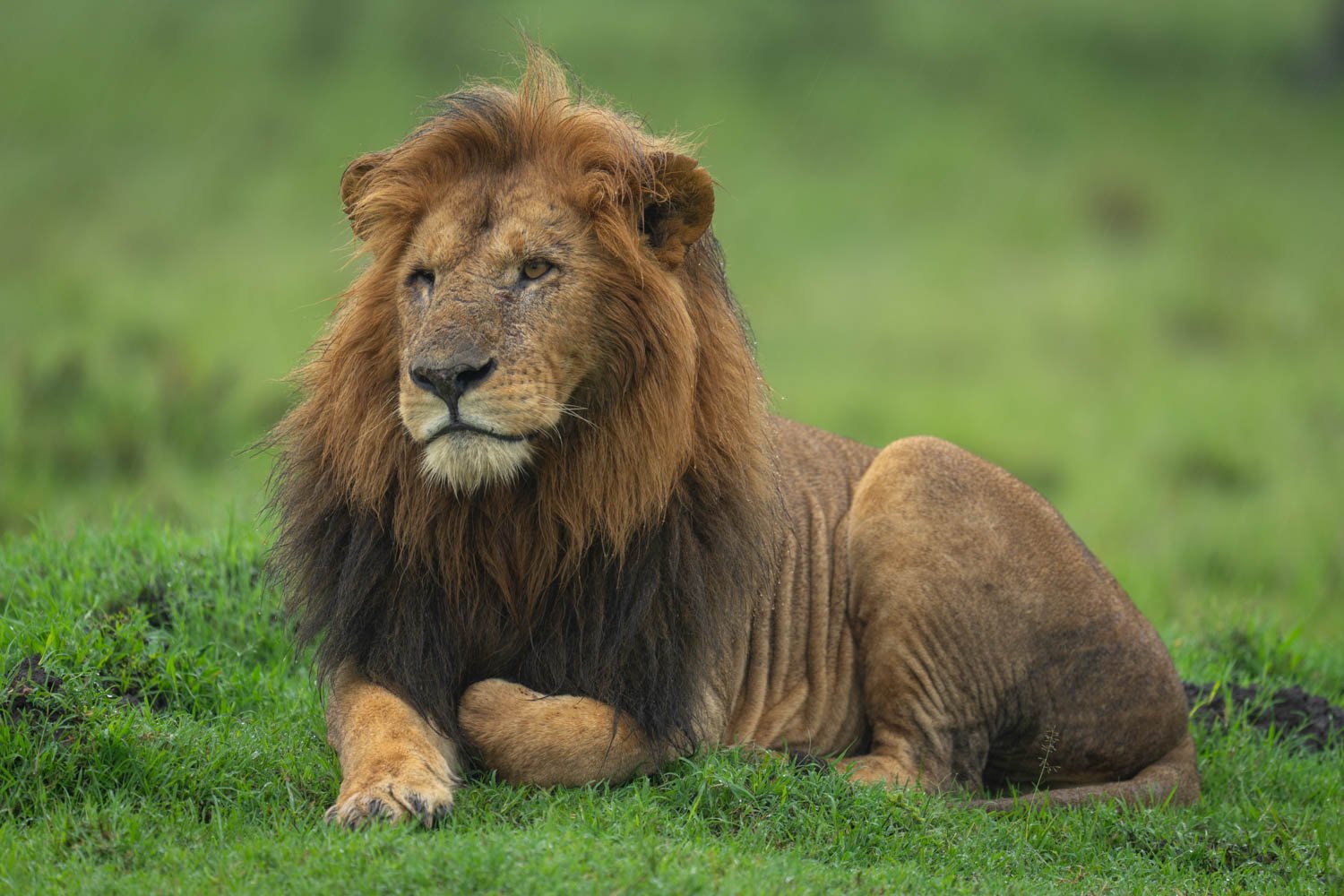
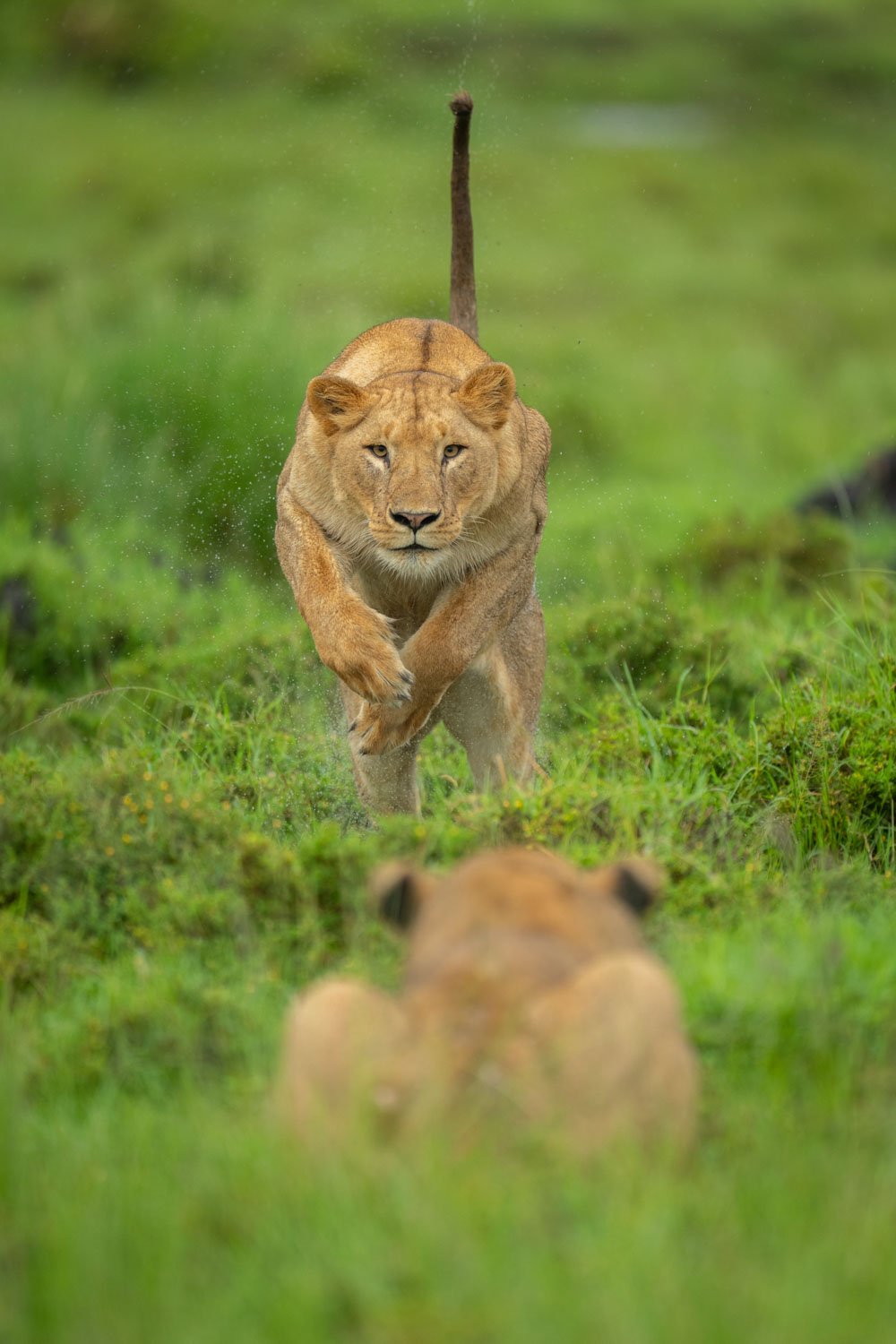
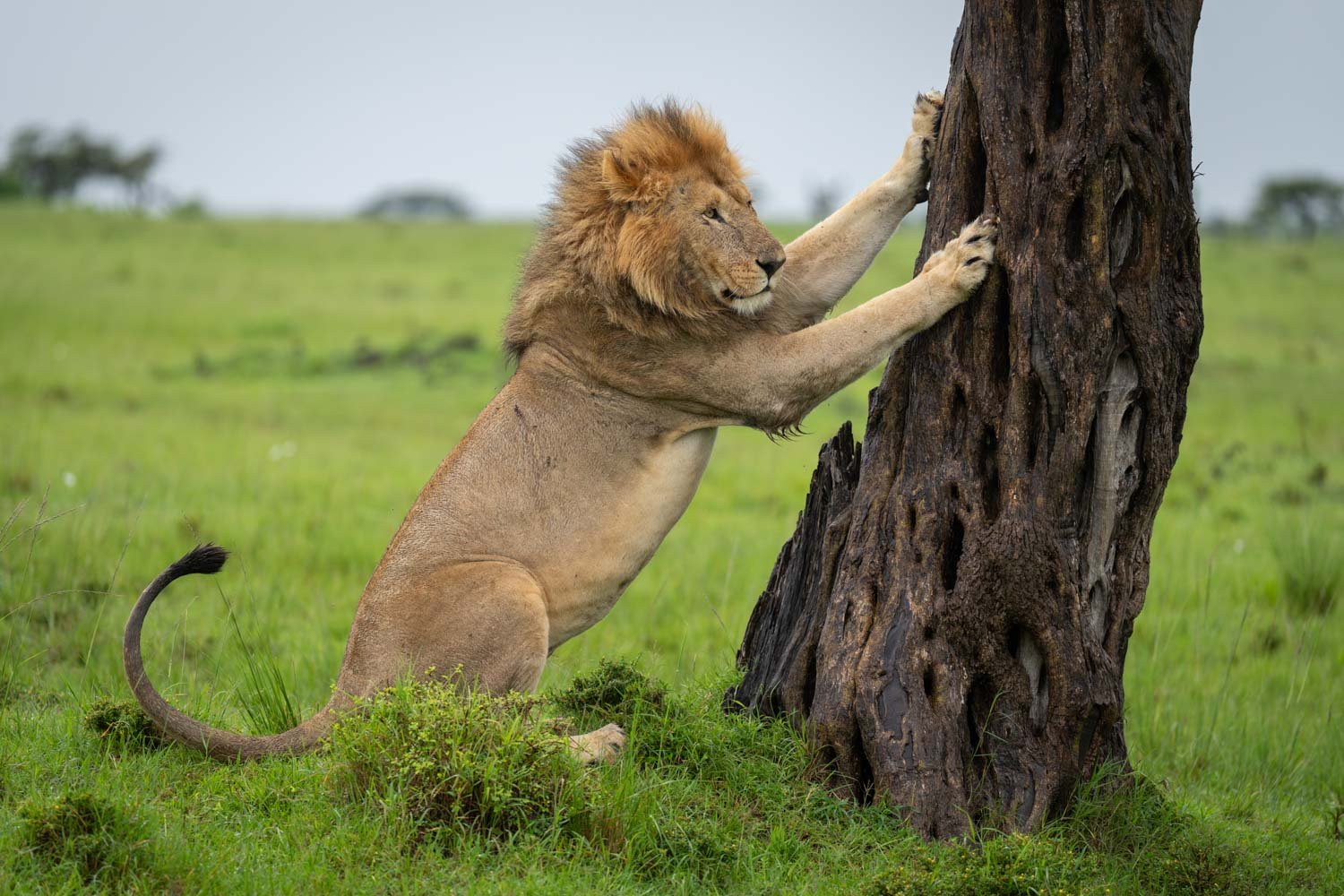
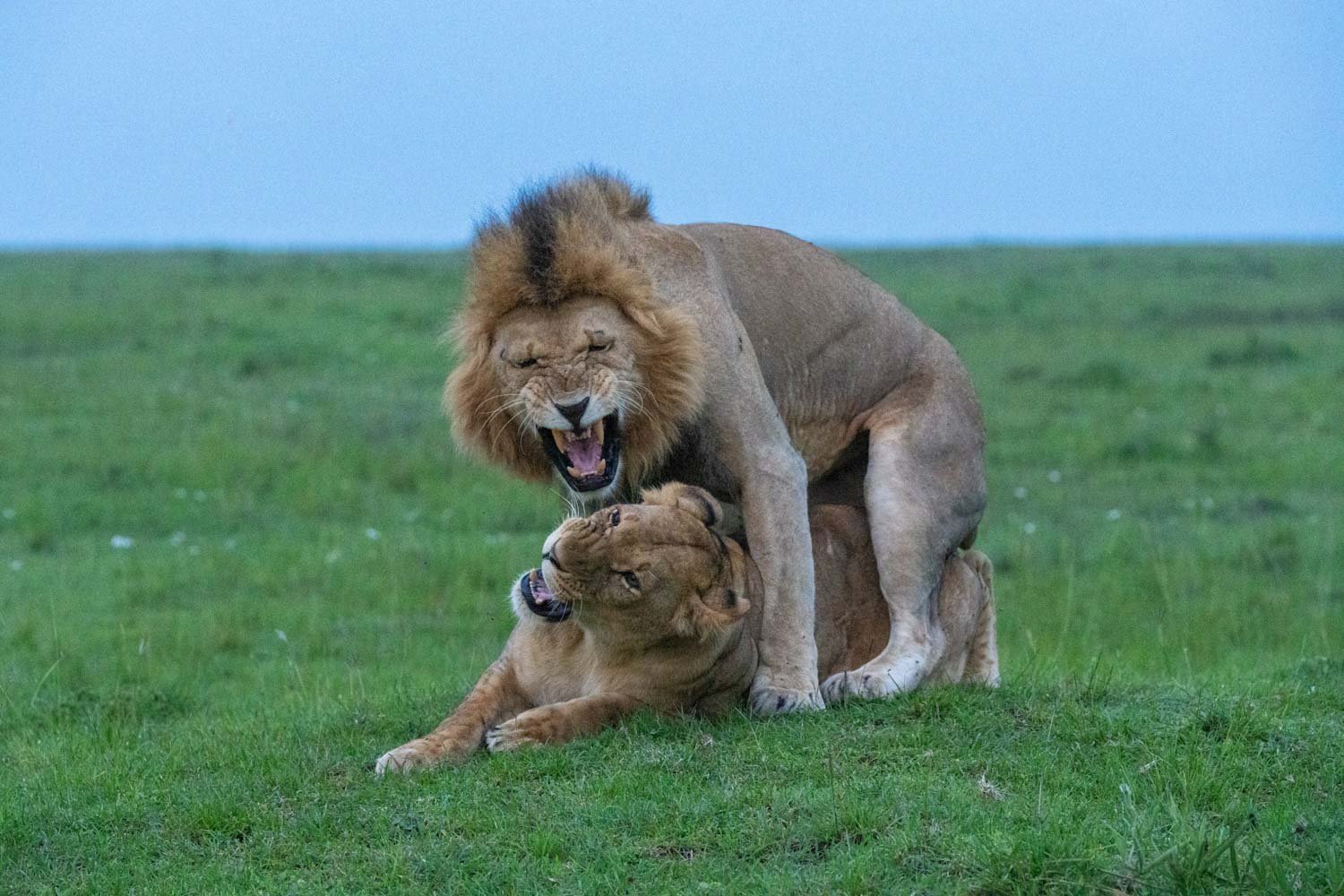
The rest of the trip was all about cheetahs, leopards and one glorious sunset.
We saw two cheetahs and their families: Namunyak (or ‘Bless’) with six cubs at Mara Camp and Nashipae (or ‘Happy’) with four cubs at Valley. The first photo op was in the rain (obvs!). I managed to get a few portraits of the cubs and one of the mother walking through long grass.
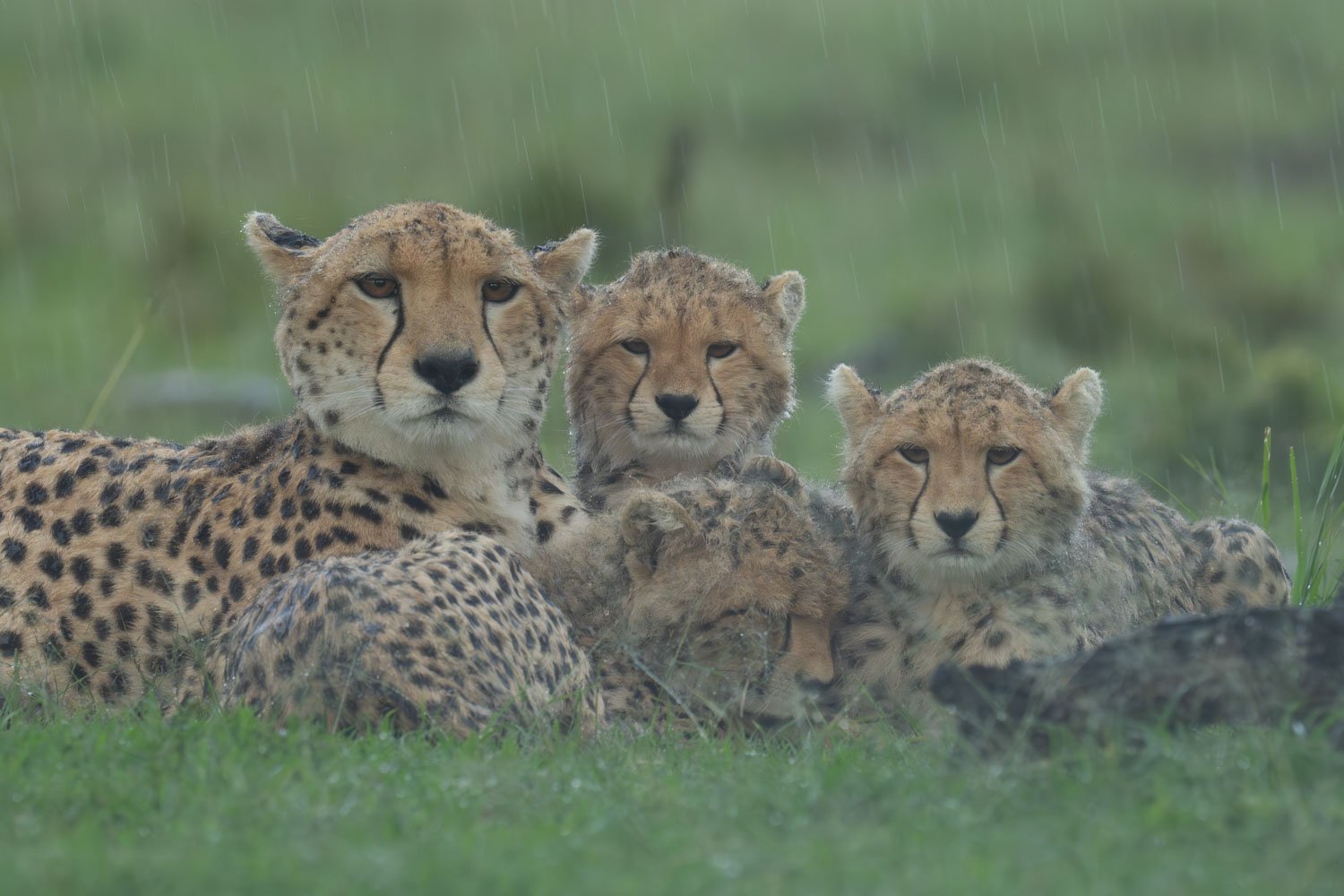
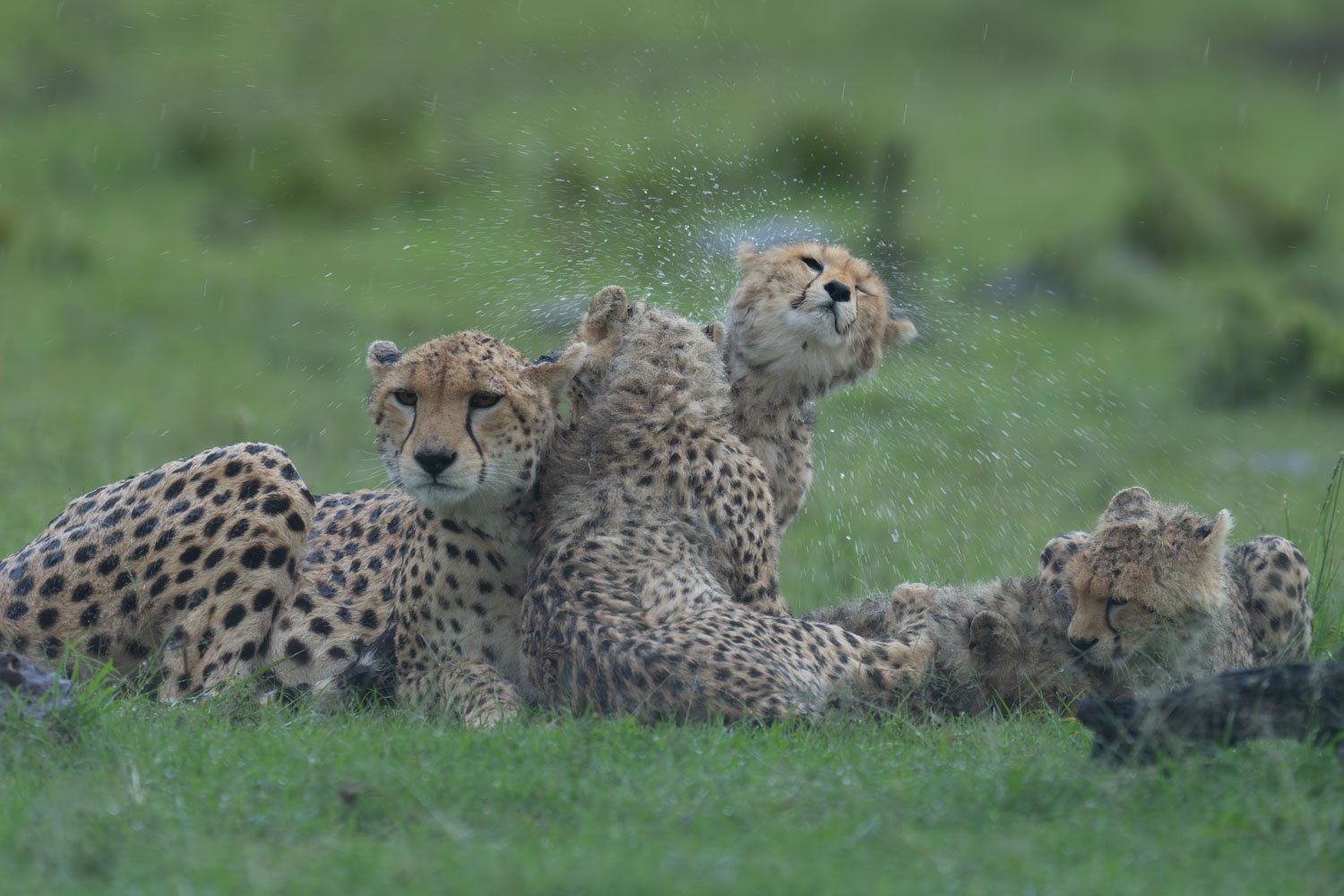
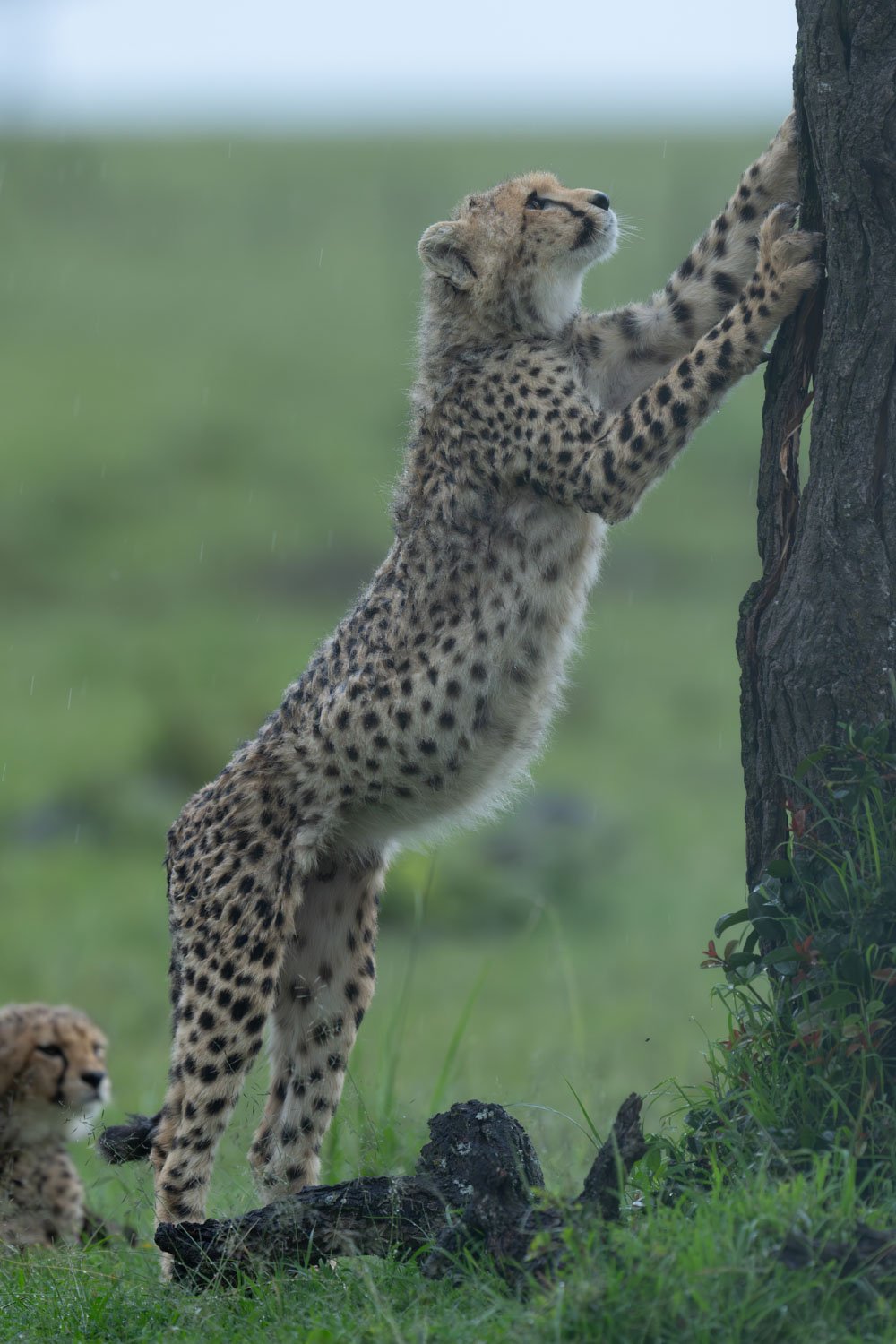
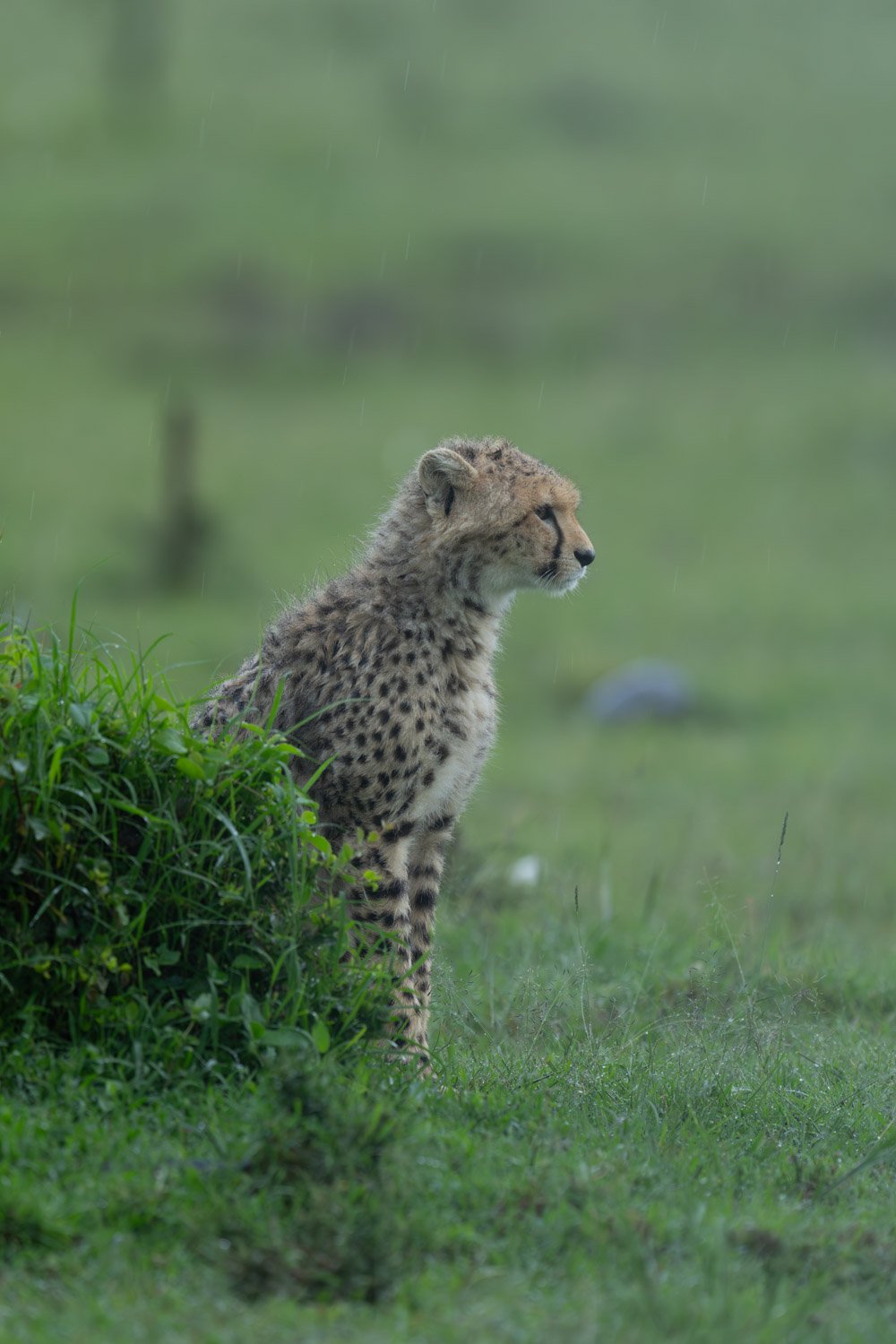
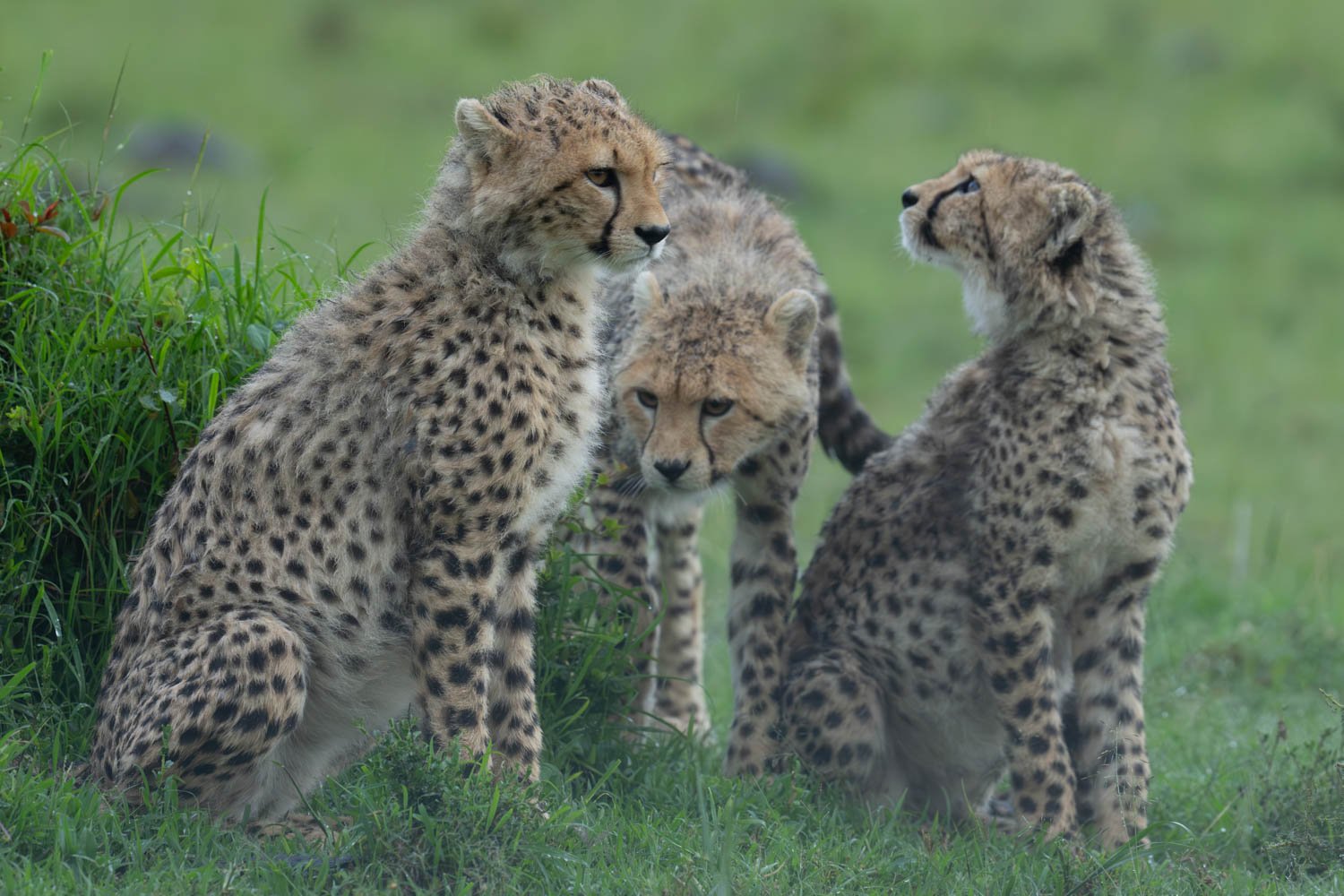
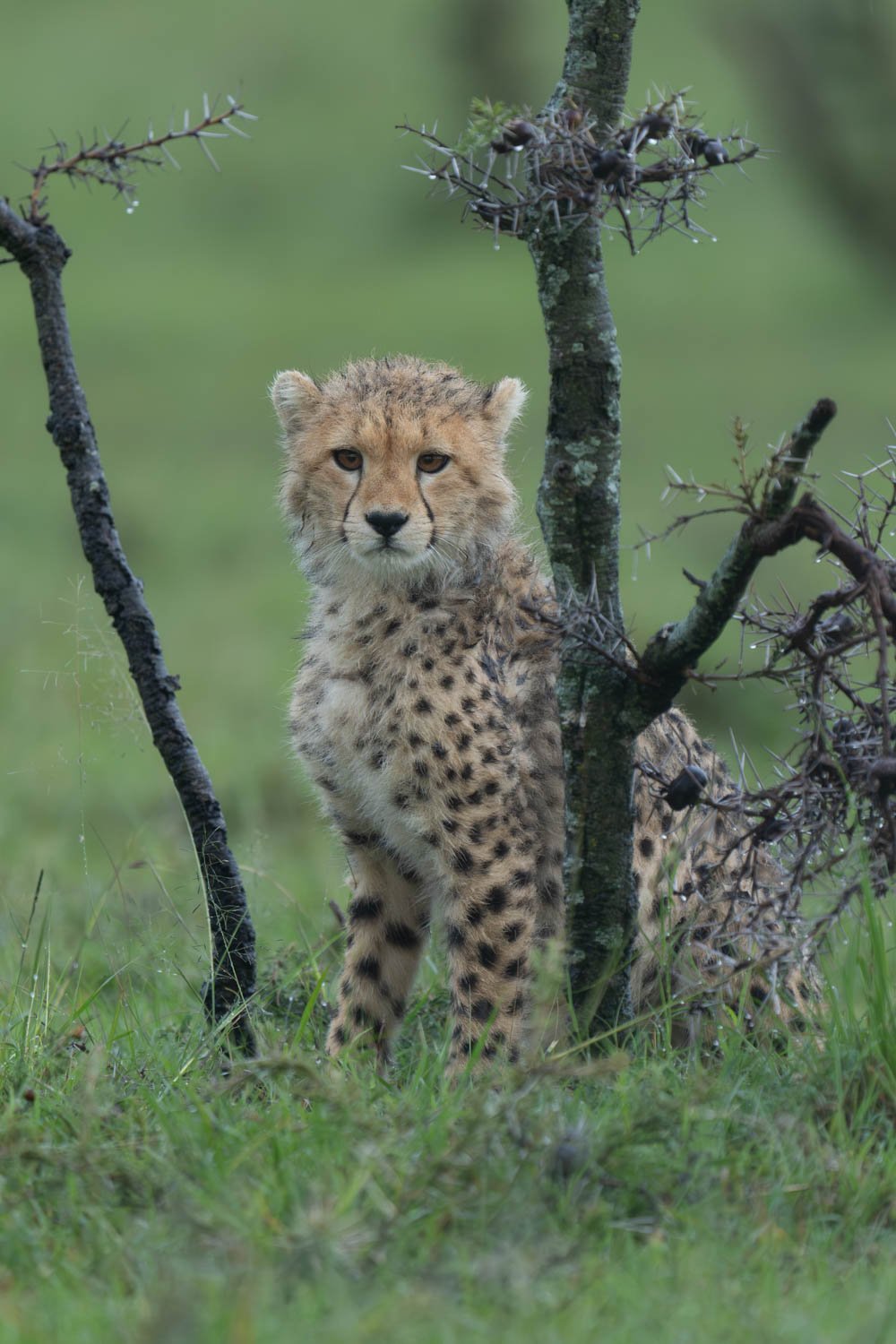
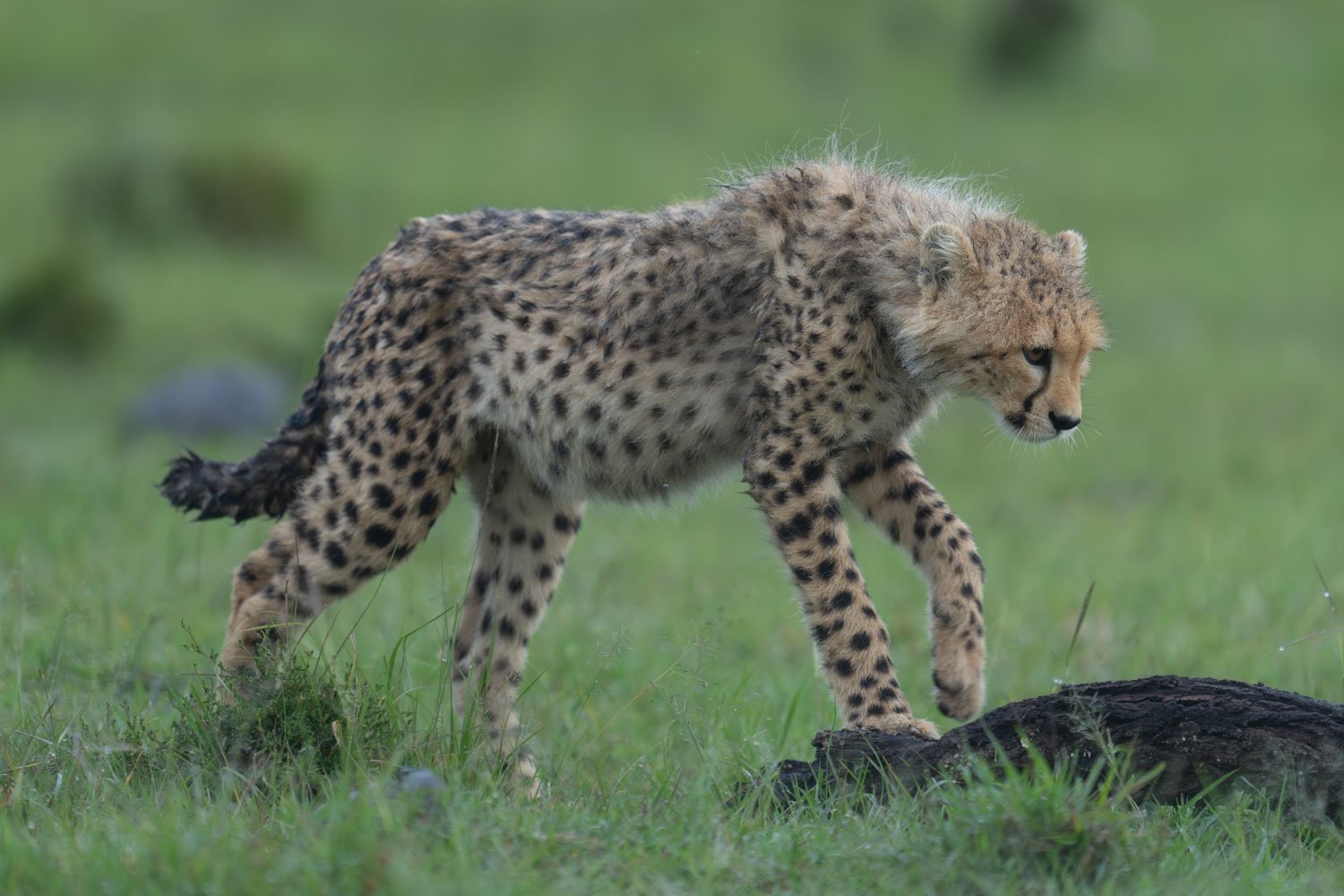
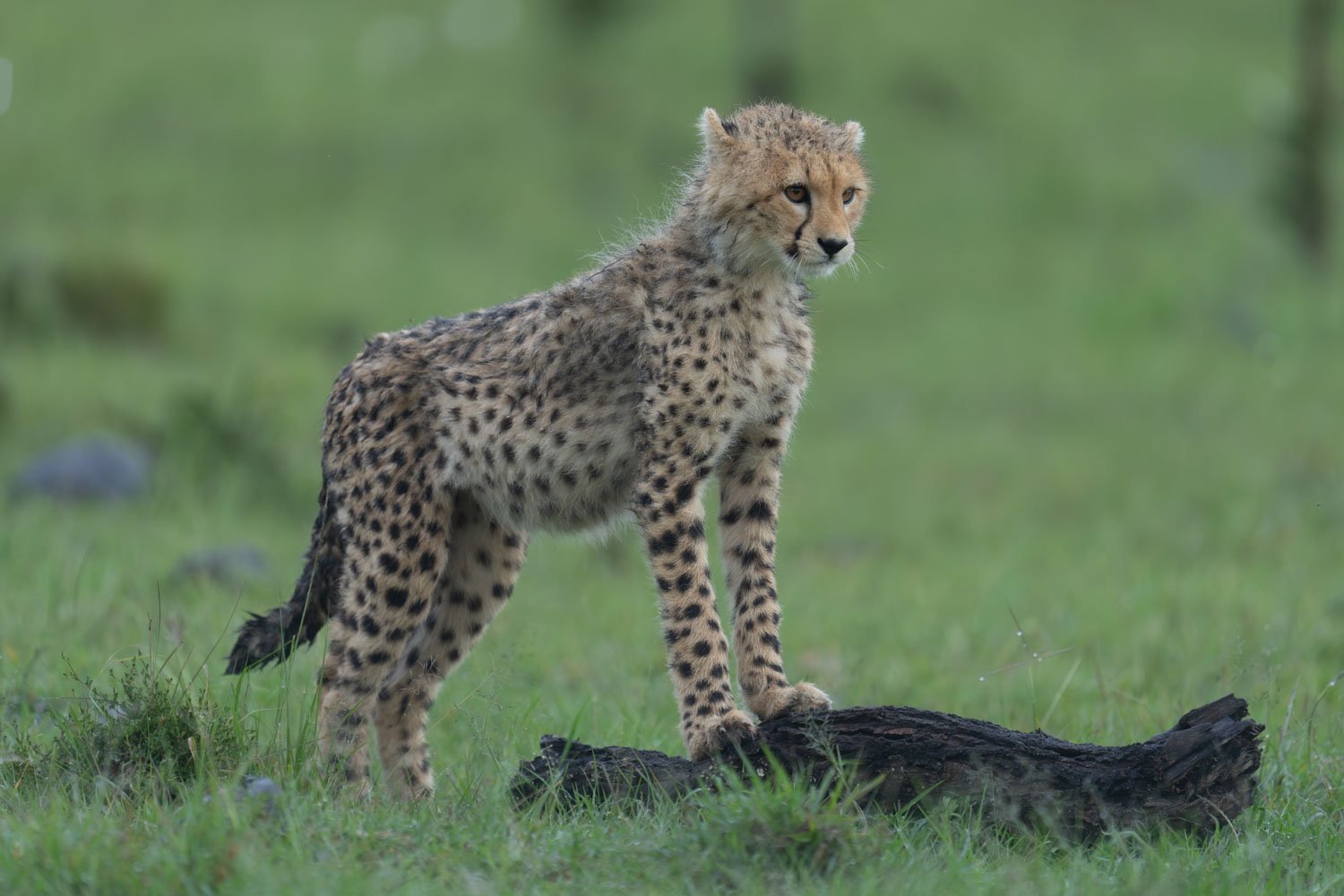
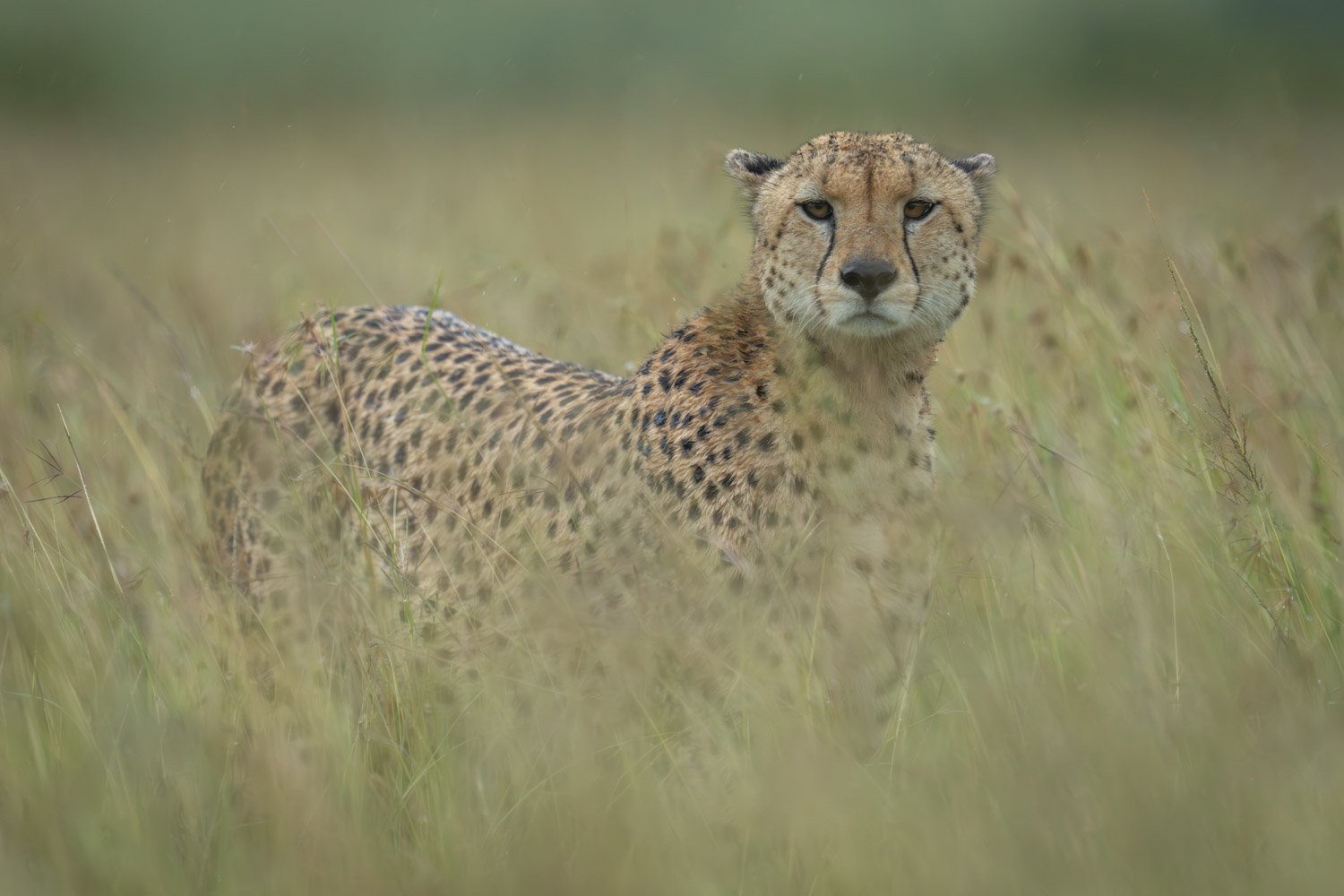
Next came the main event. I’d come to Kicheche mainly to see cheetah hunts, and I wasn’t going to be disappointed. I was with Paul at the time, and we saw Nashipae chase four female impalas down a rocky slope and then take one down among the whistling thorns.
The thorn bushes were a nightmare, and I couldn’t even focus on the animals as they dashed between them, but I did manage to get a few shots of the chase down the hillside.
However, as Paul kindly pointed out, I should probably have stopped down to f/8 to keep both animals sharp. There’s always something…!
The first time I saw a cheetah kill with Paul, he told me exactly what settings to use. Not this time. Maybe he had too much confidence in both of us. I had the wrong aperture, and Chris’s shutter speed was only 1/400! At least he managed to get one decent shot of the chase…
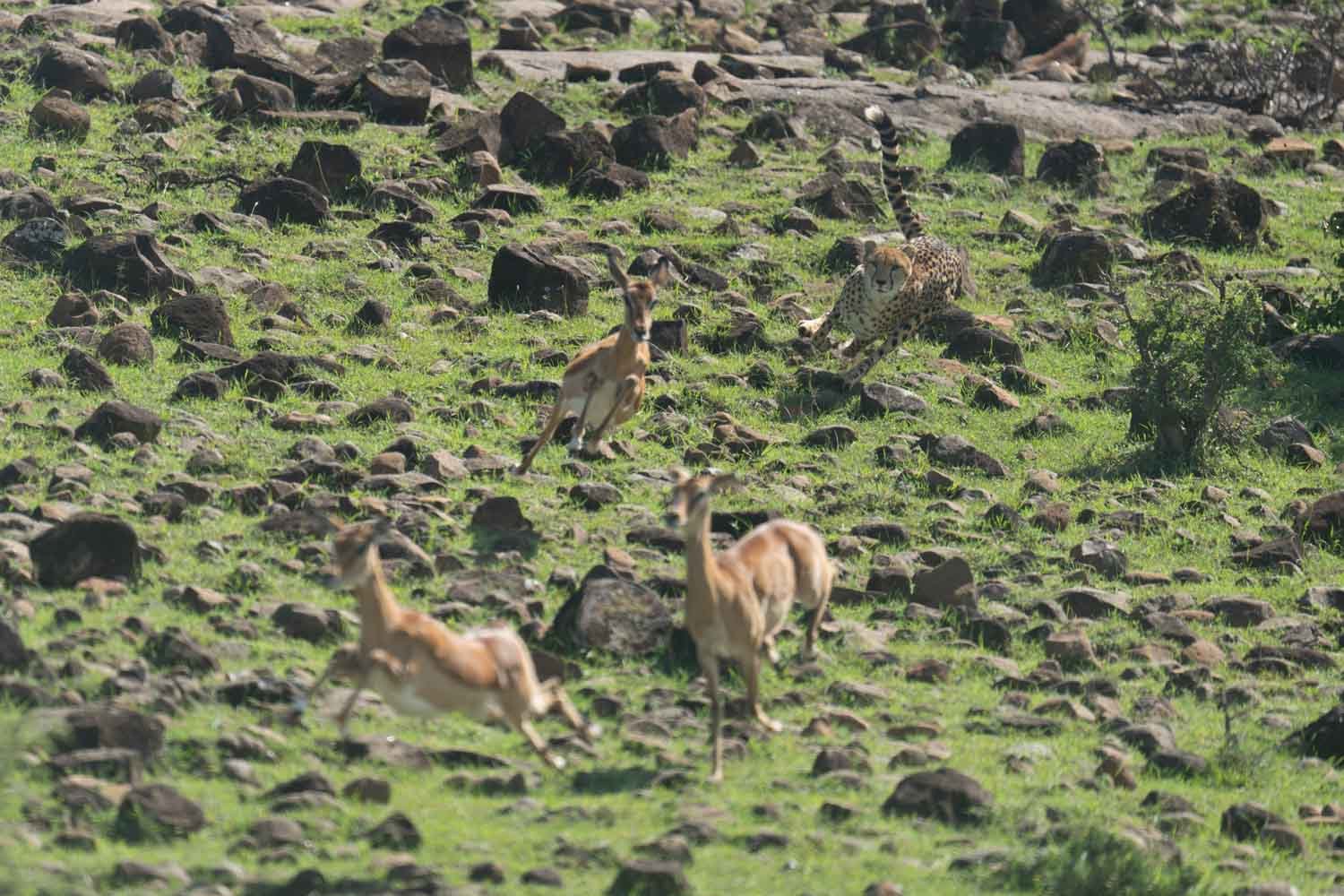
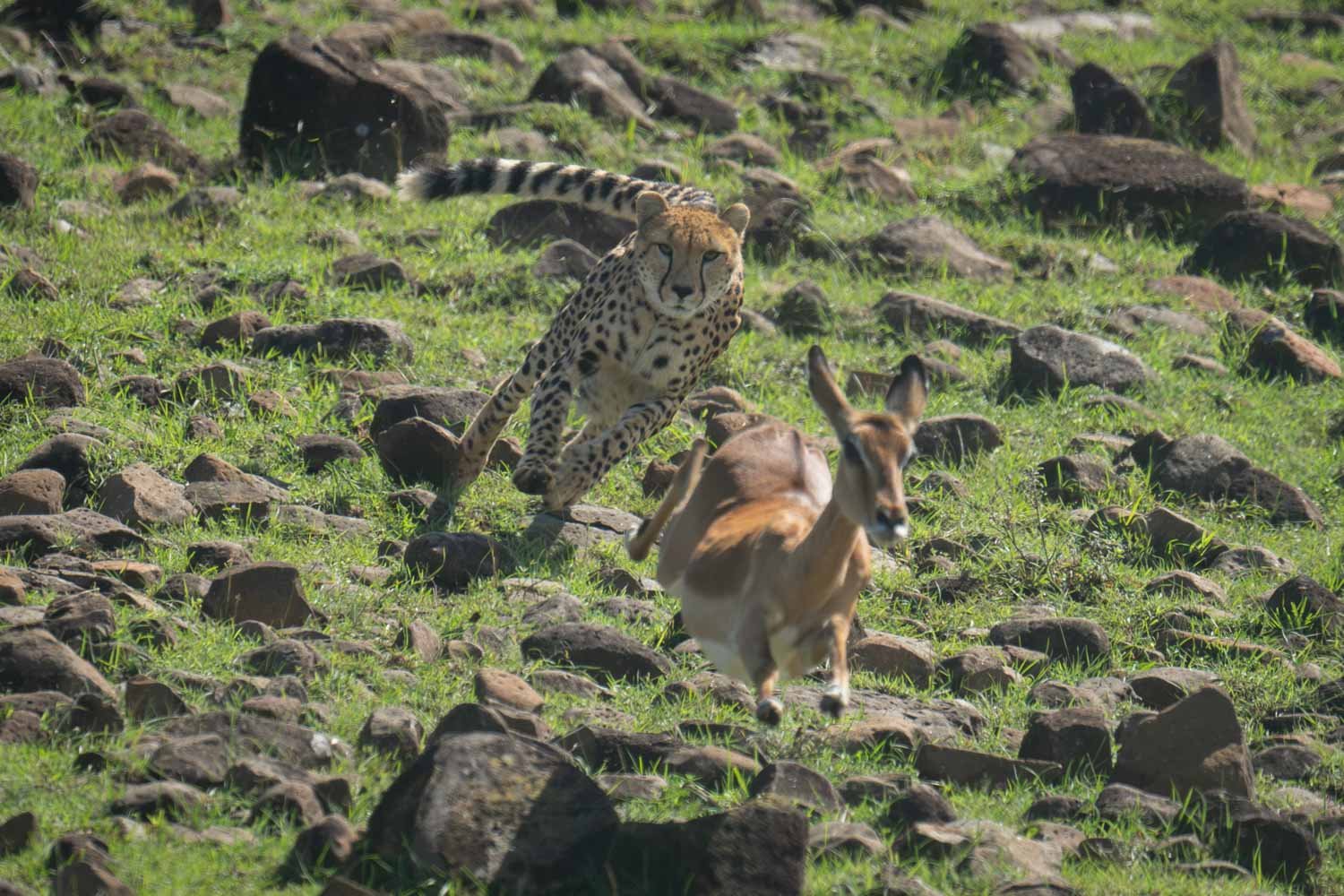
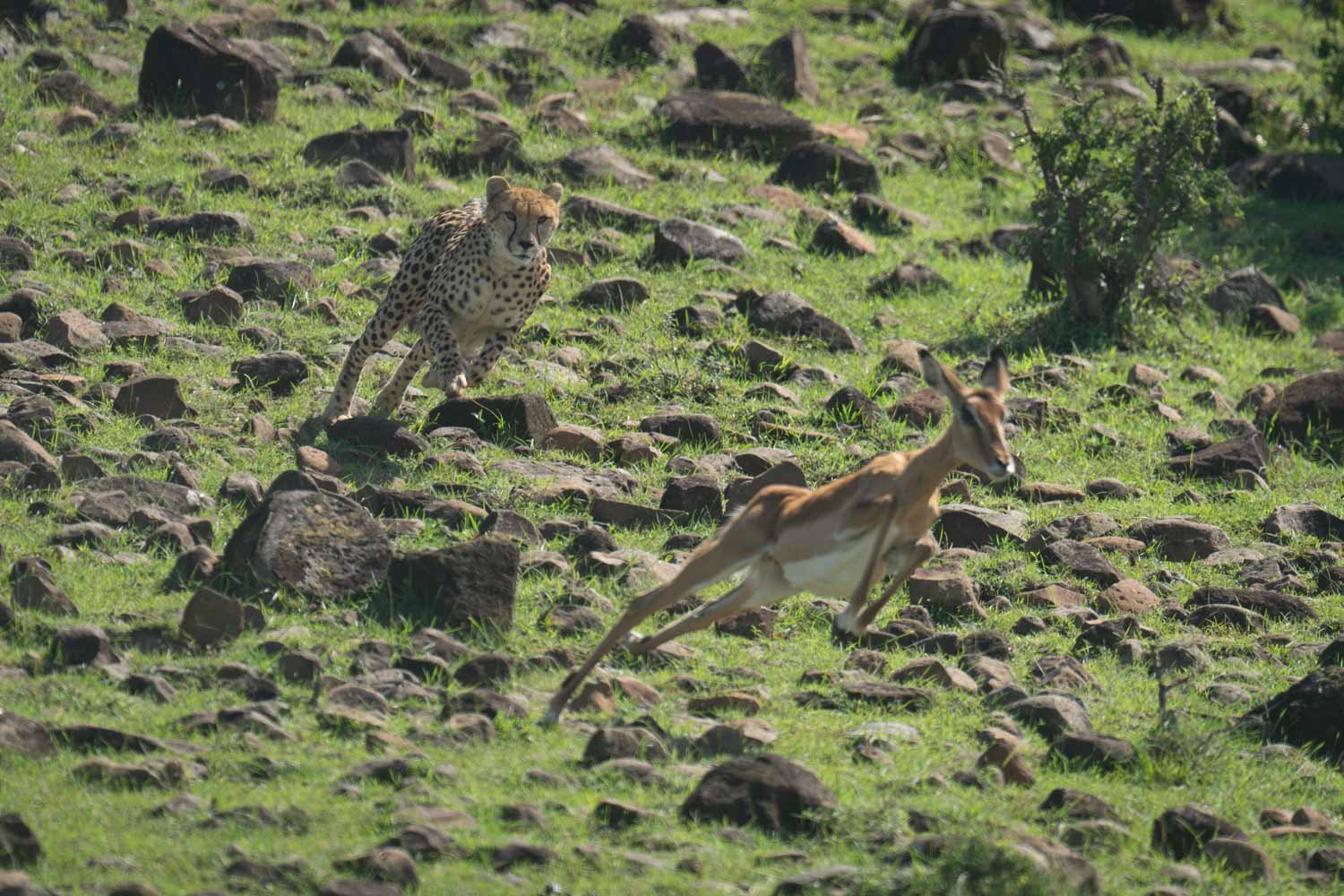

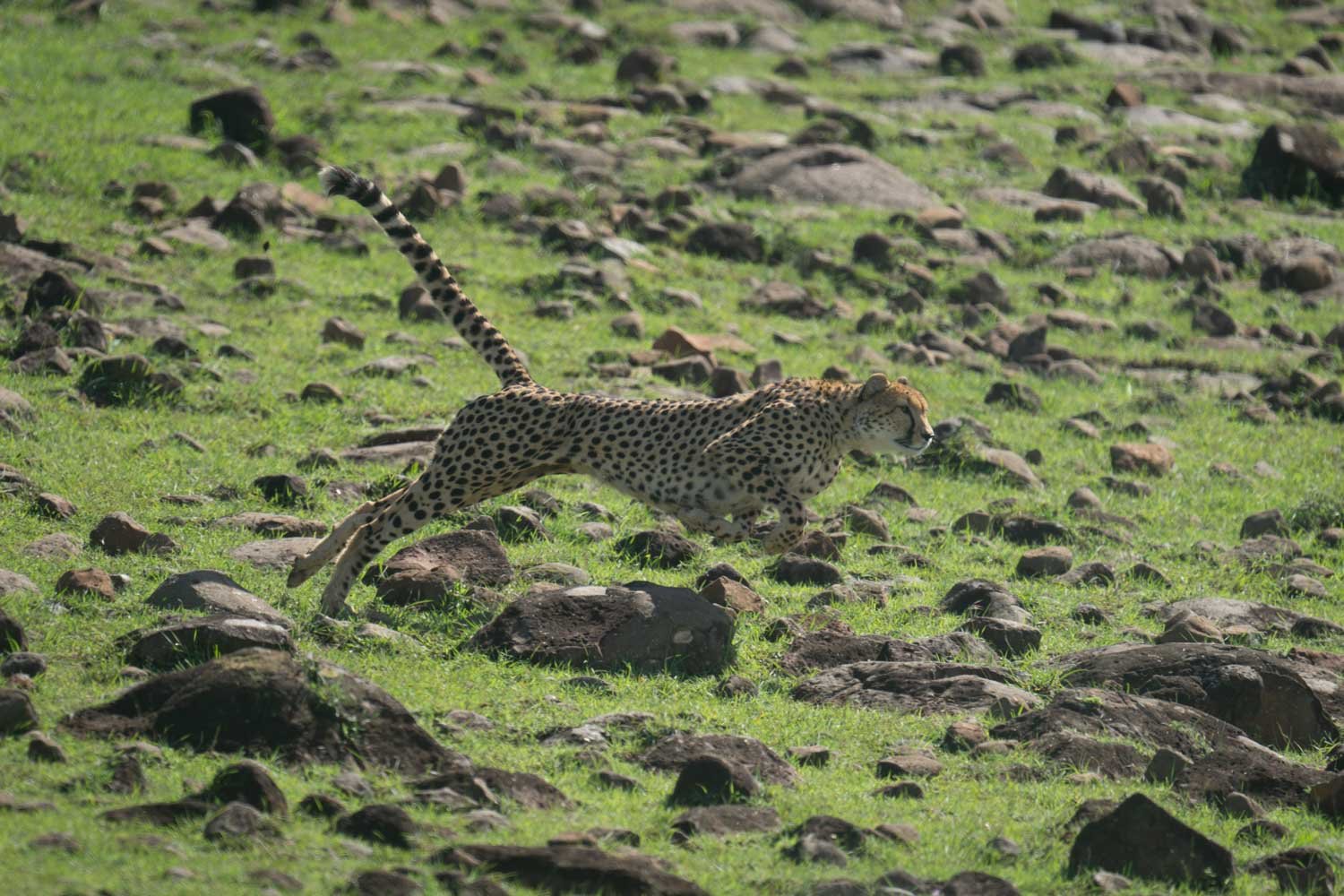
“That’s not bad, is it? Ten cheetahs before 10 o’clock!”
We spent a lot of time with the cheetahs over the next couple of days…
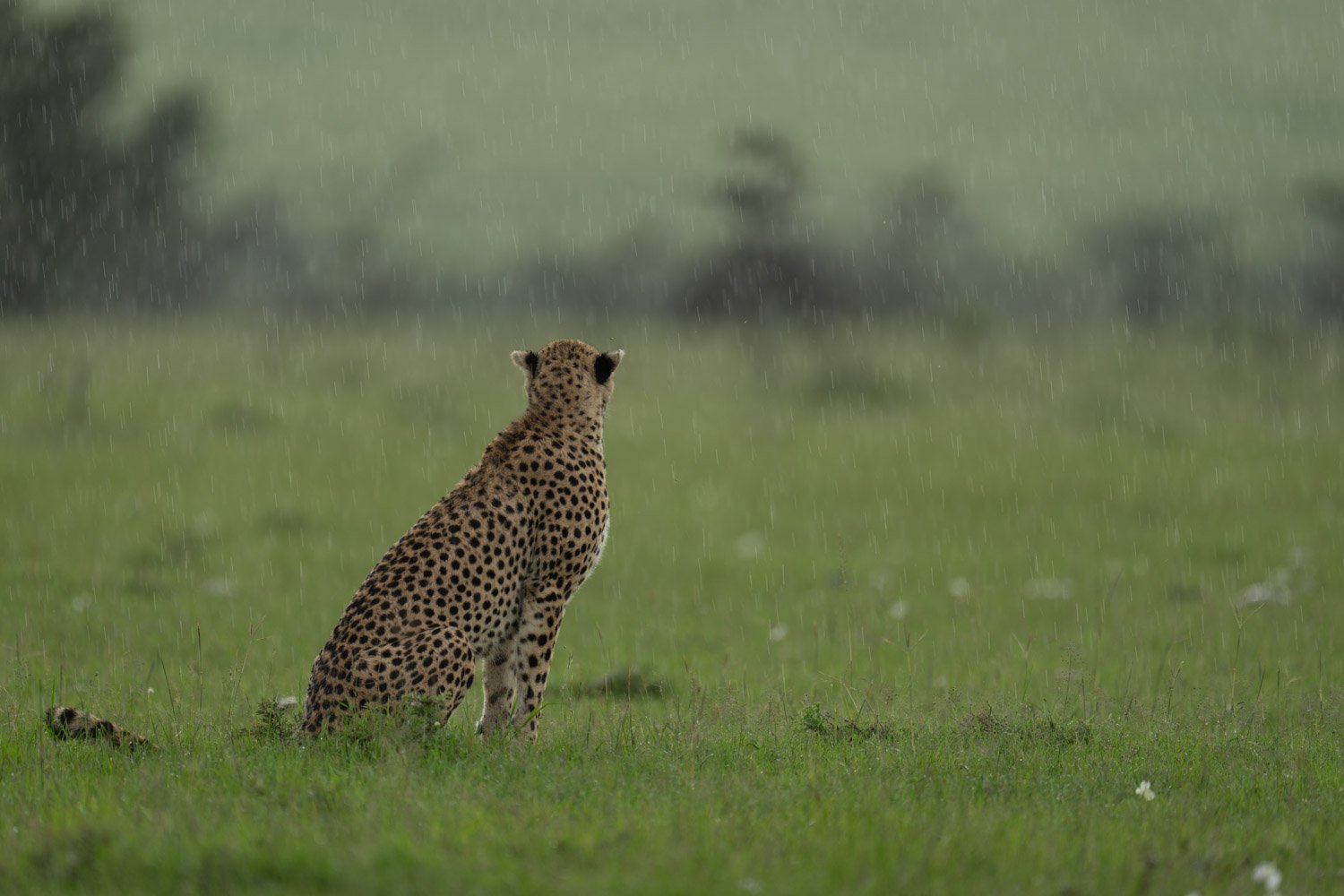
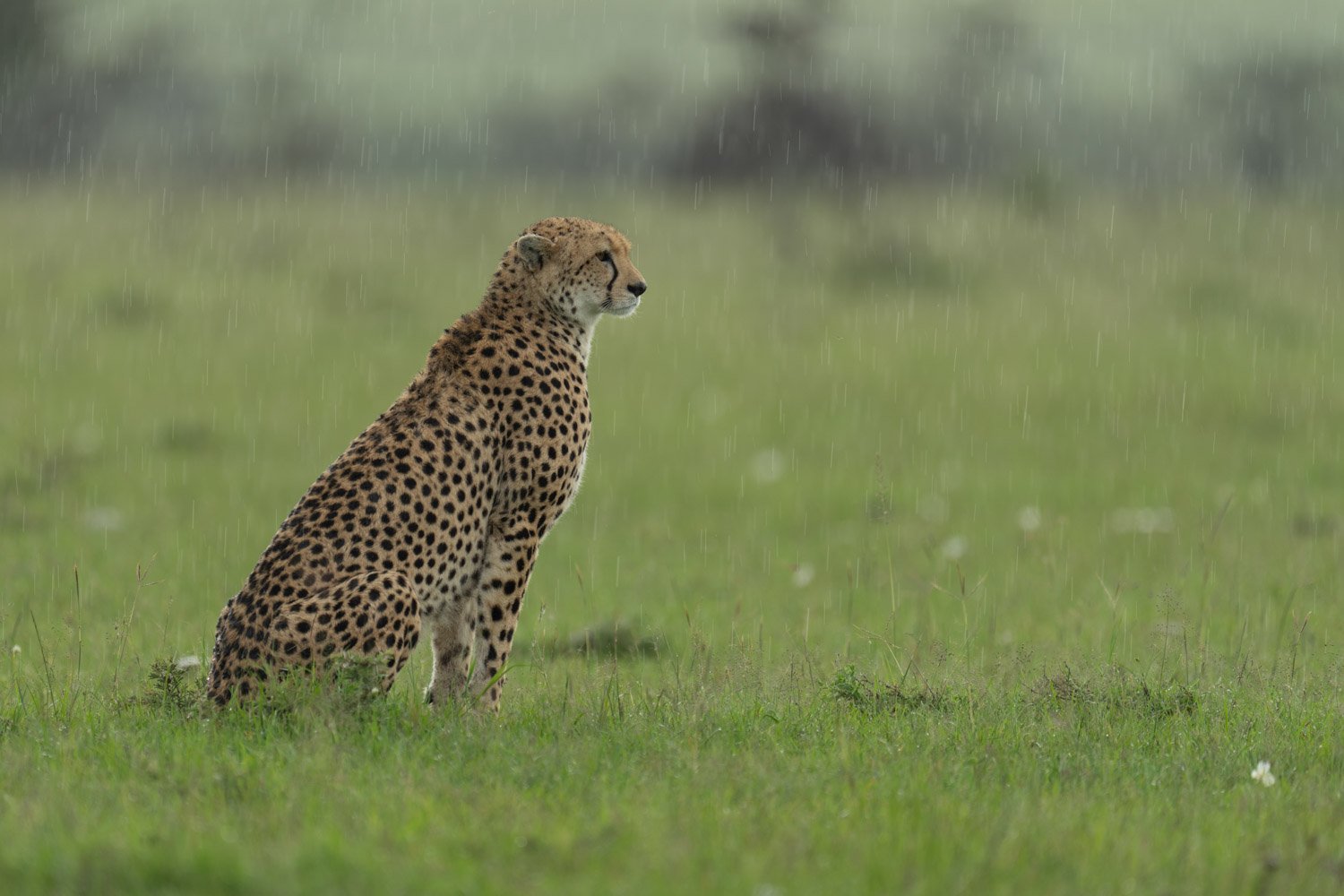
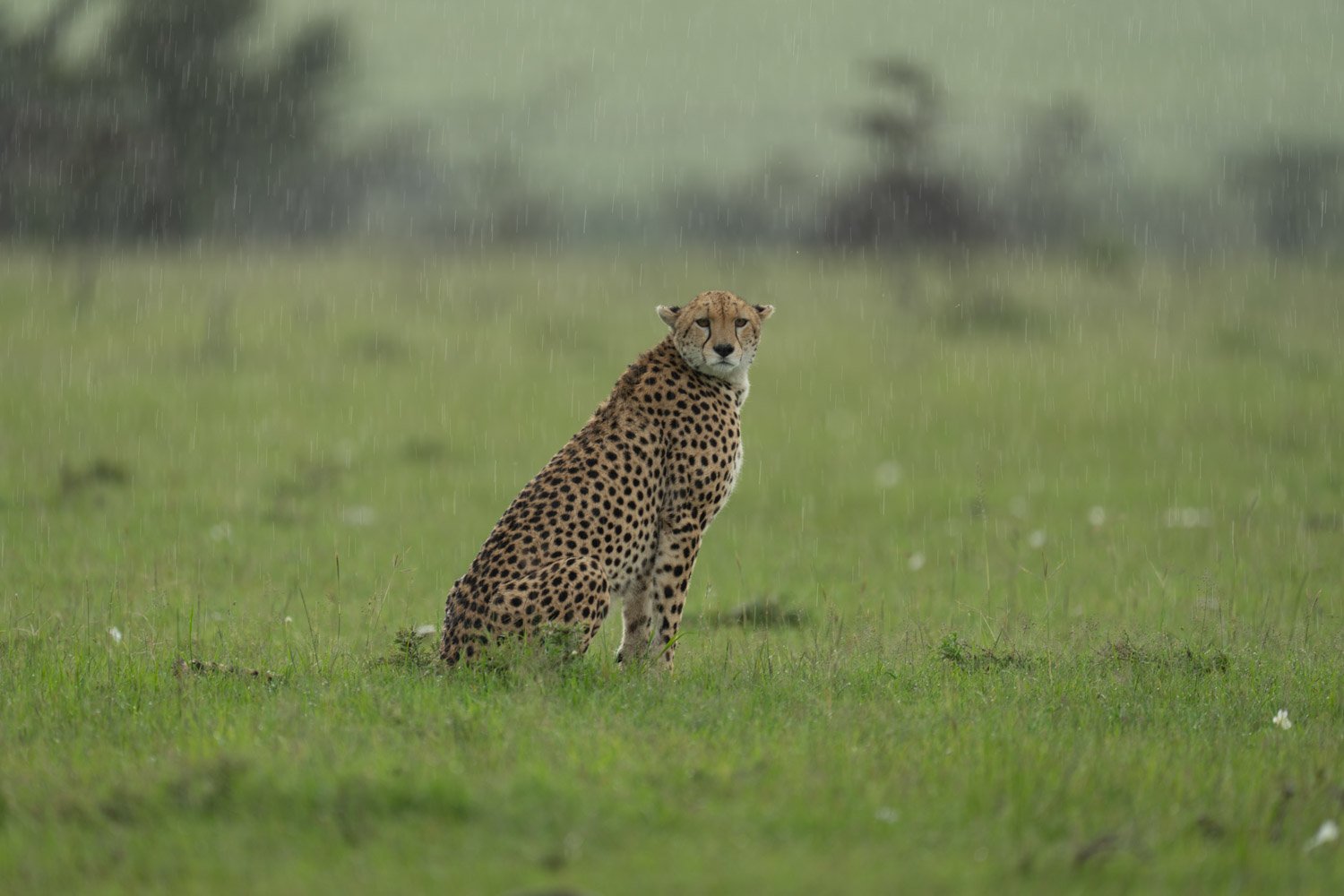
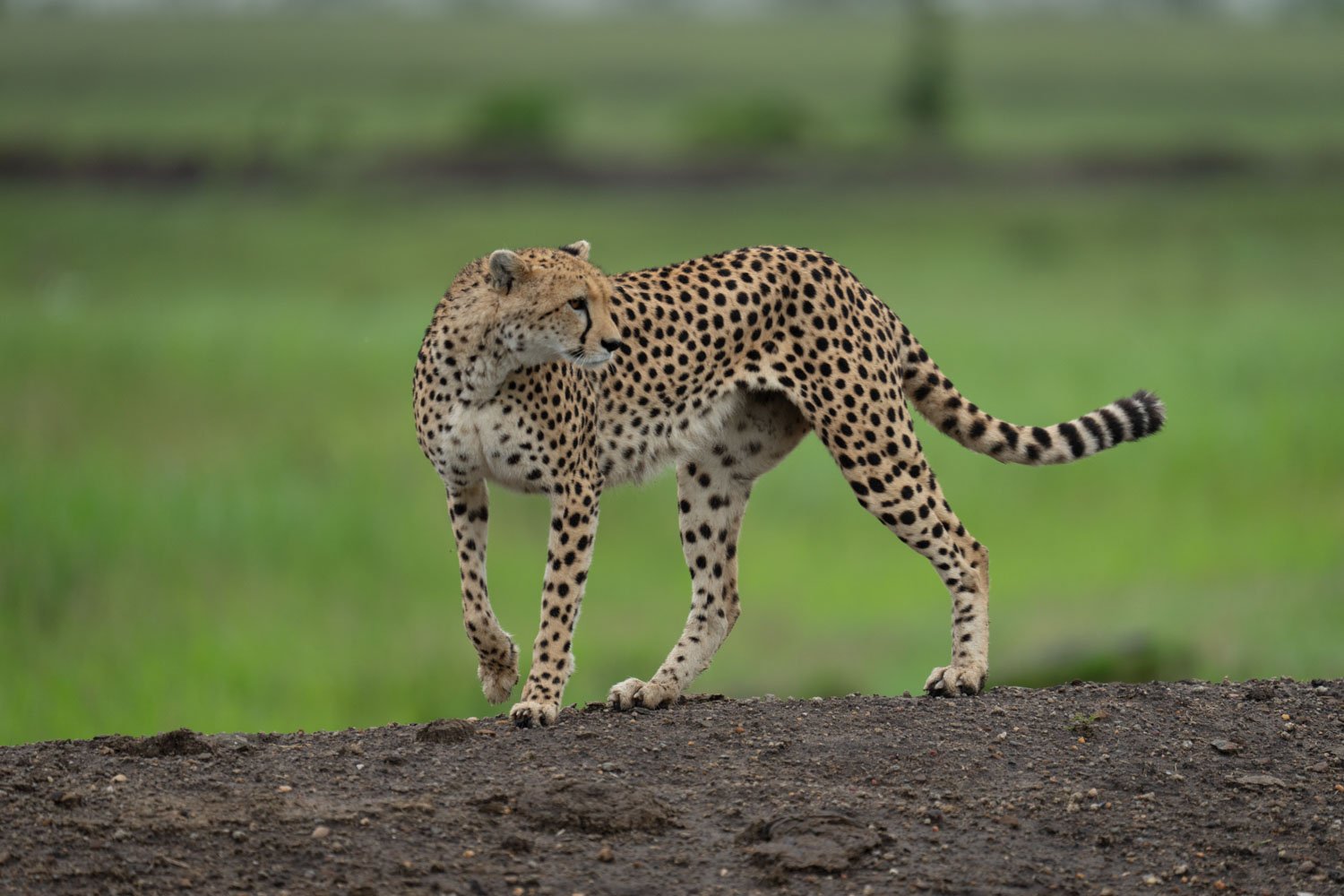
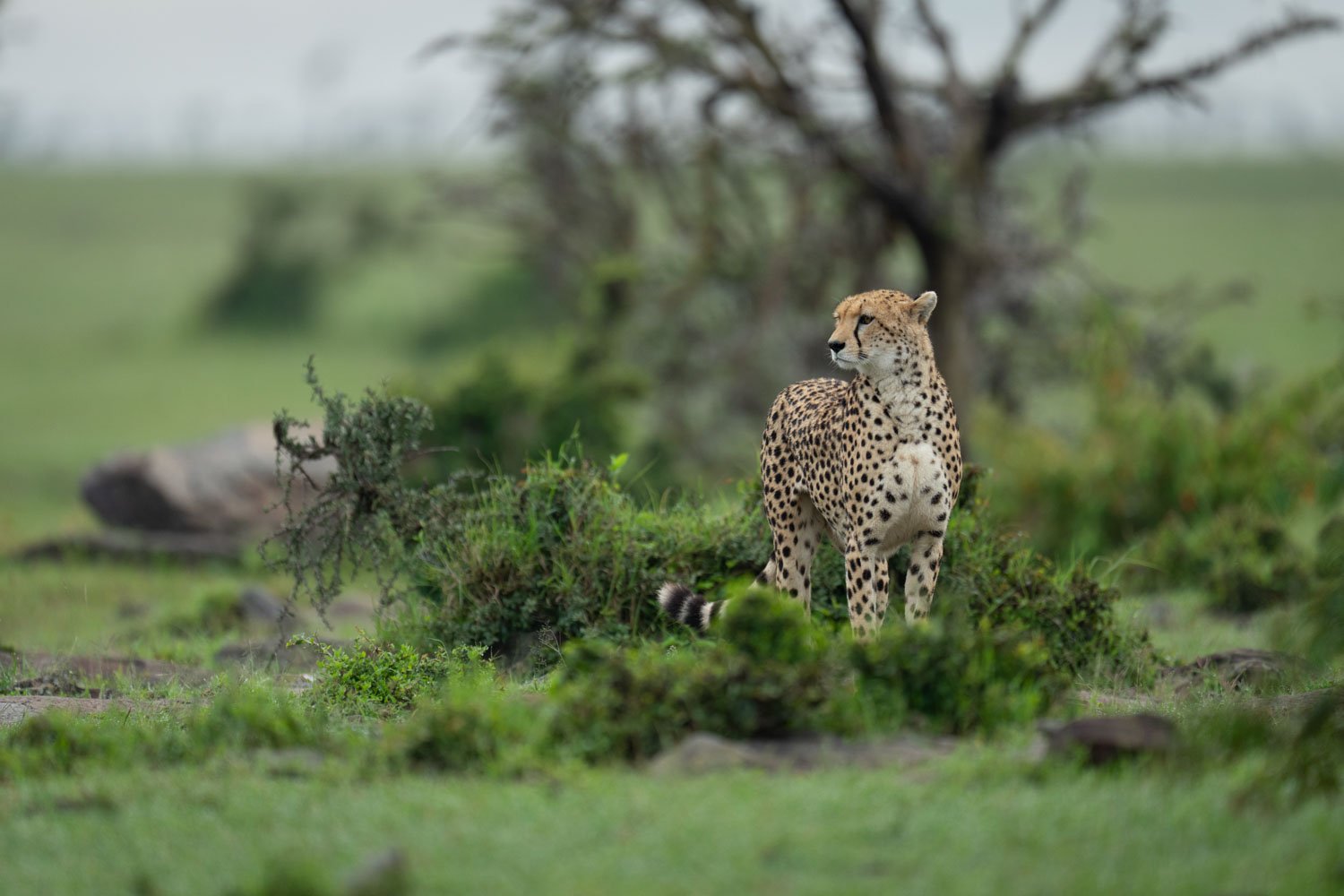
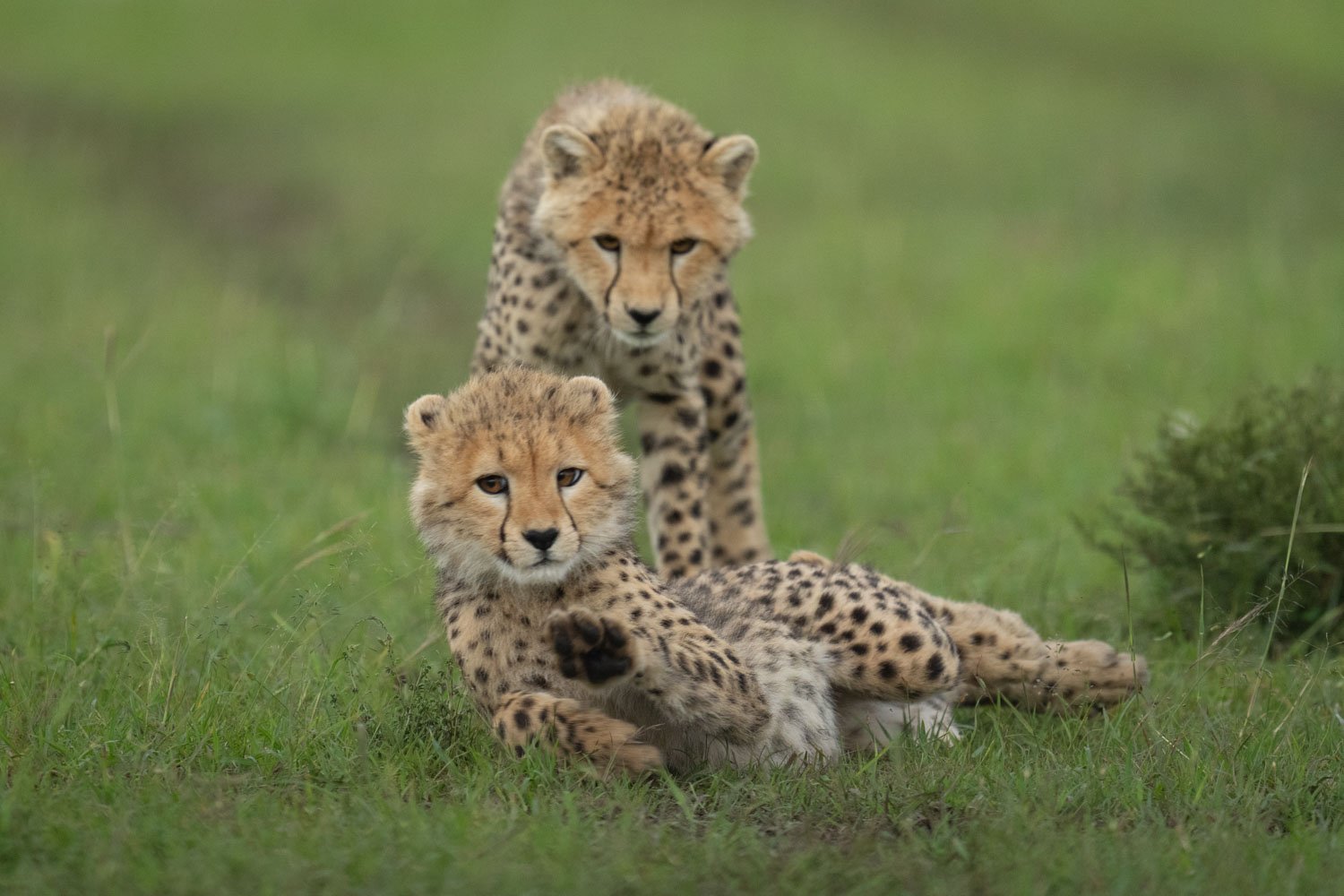
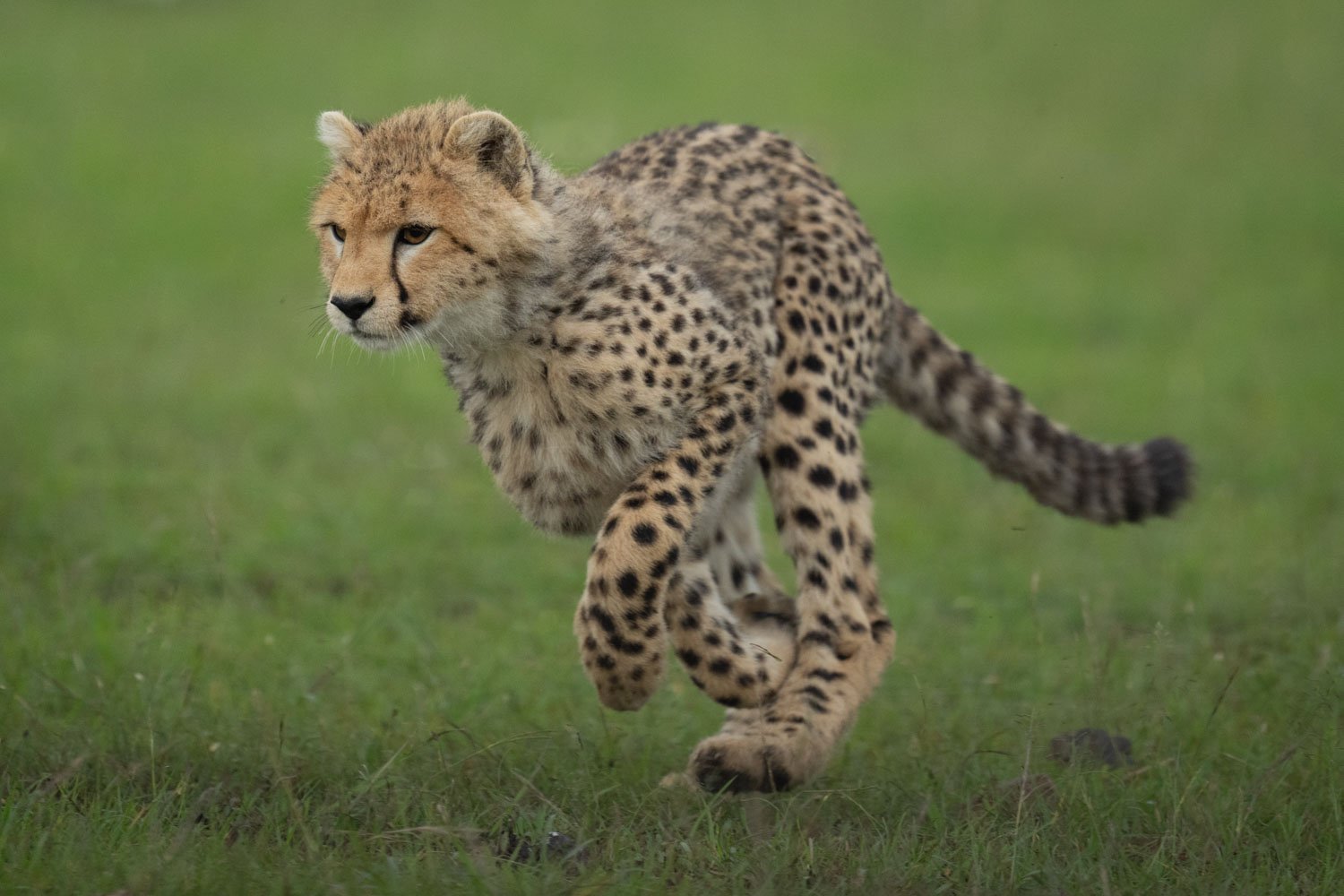
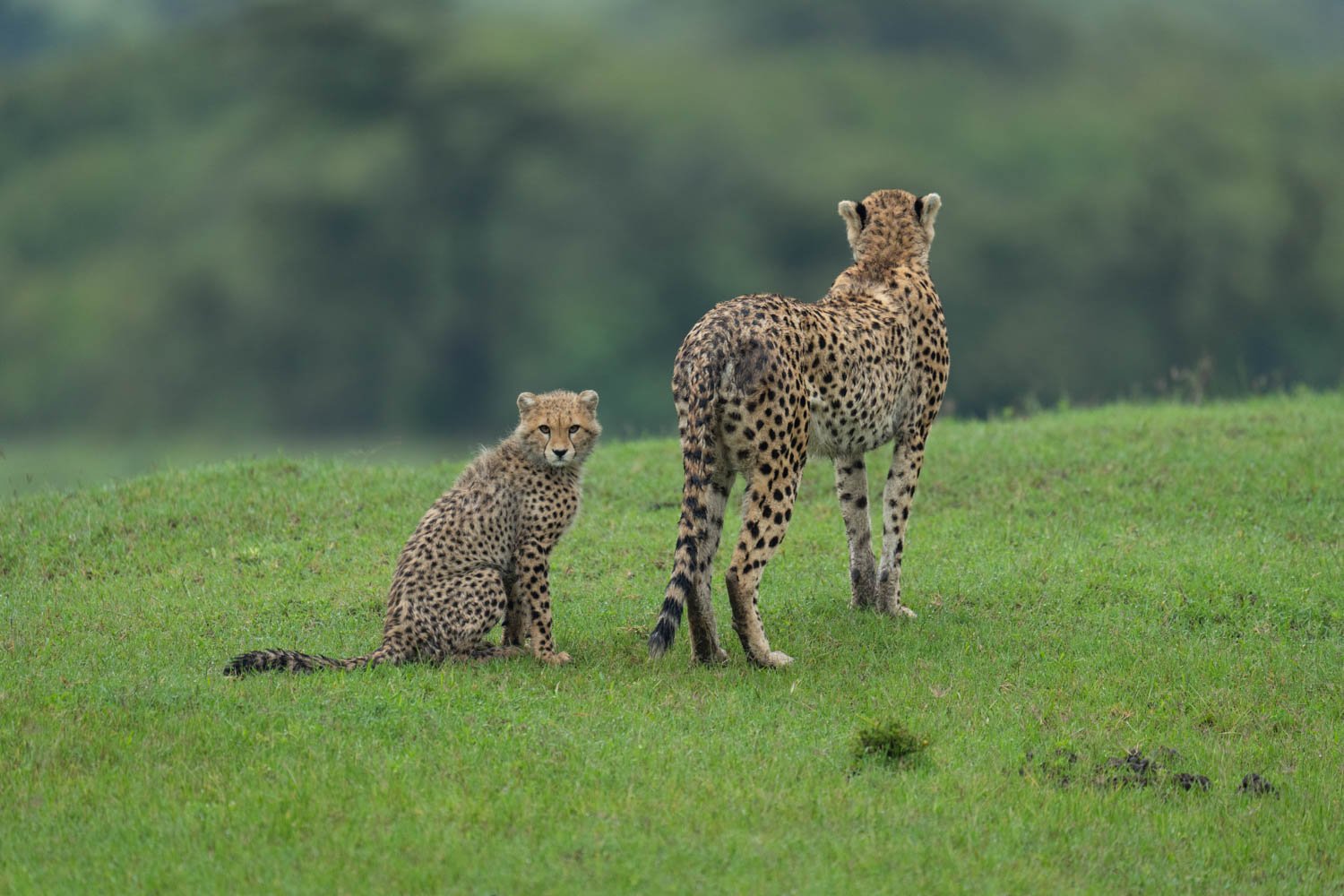
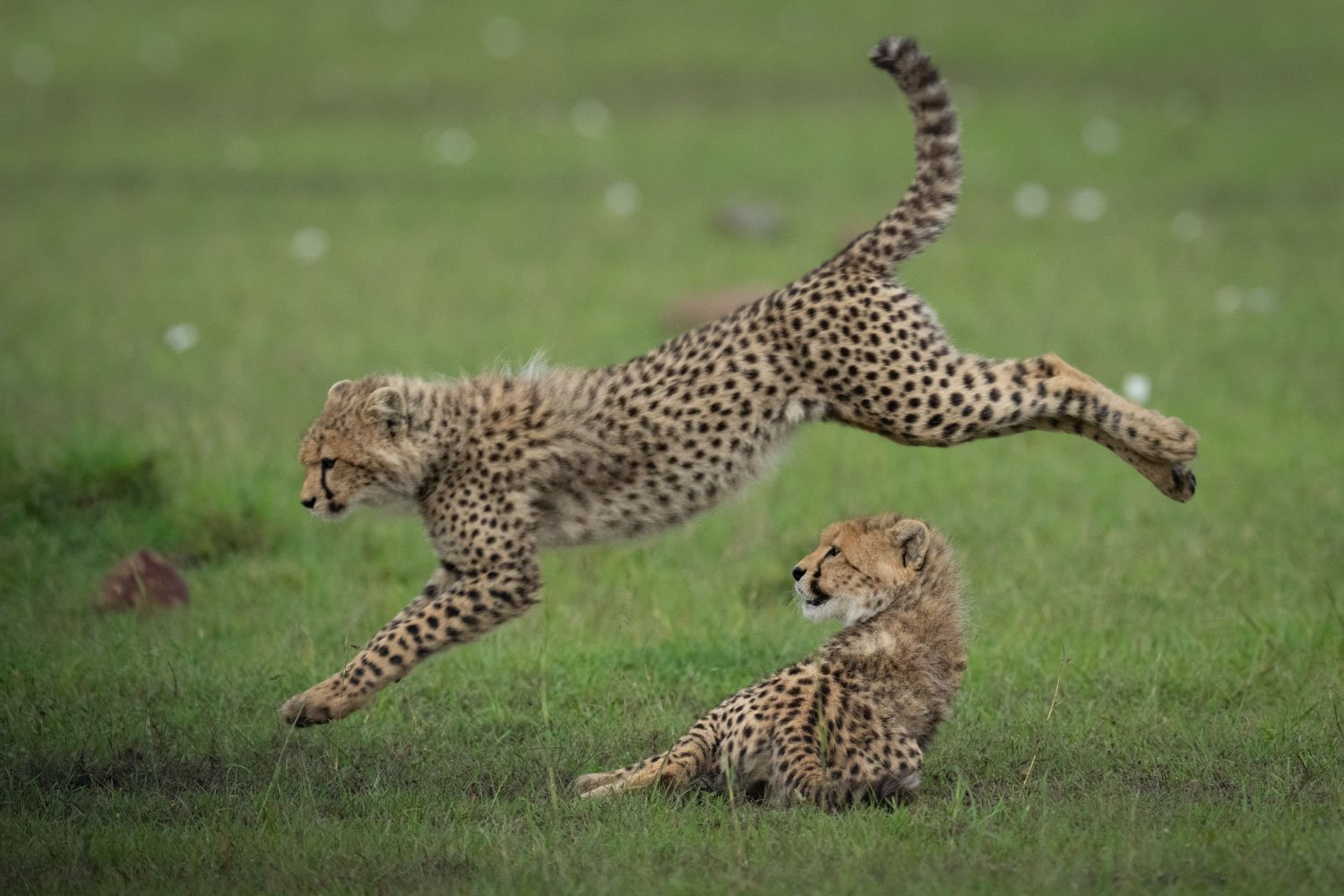
When we moved to Valley Camp, we were treated to another cheetah hunt, this one unsuccessful but still exciting!
It didn’t look too promising initially as there were so many whistling thorns in the area. In fact, I was happily ‘chimping’ (ie reviewing my images on the back of the camera), and I told Bernard, Russ and Julia that I didn’t think I could get any decent shots.
How wrong I was!
In between the thornbushes, I managed to bag a couple of all-action images showing Nashipae splashing through standing water at top speed.
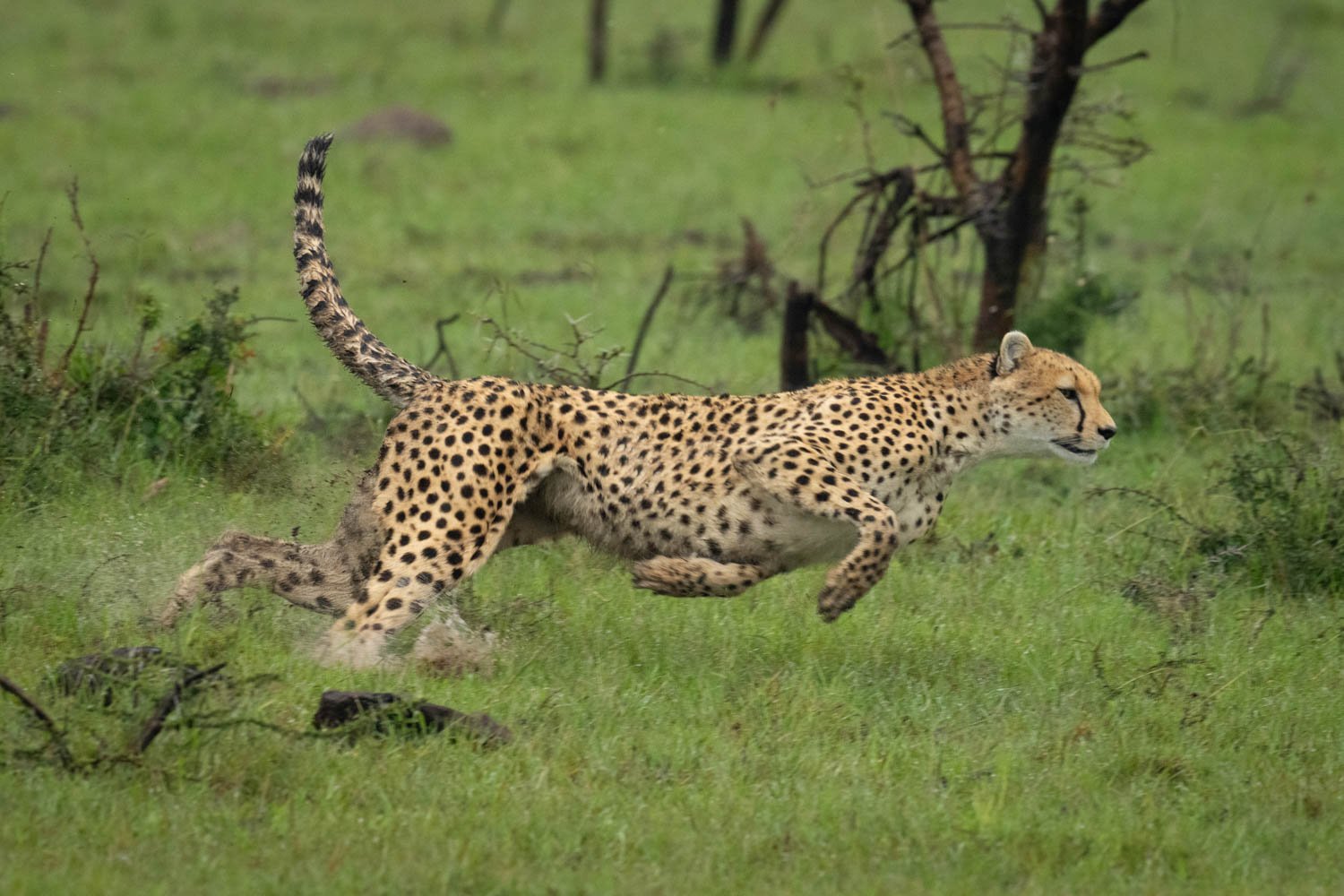
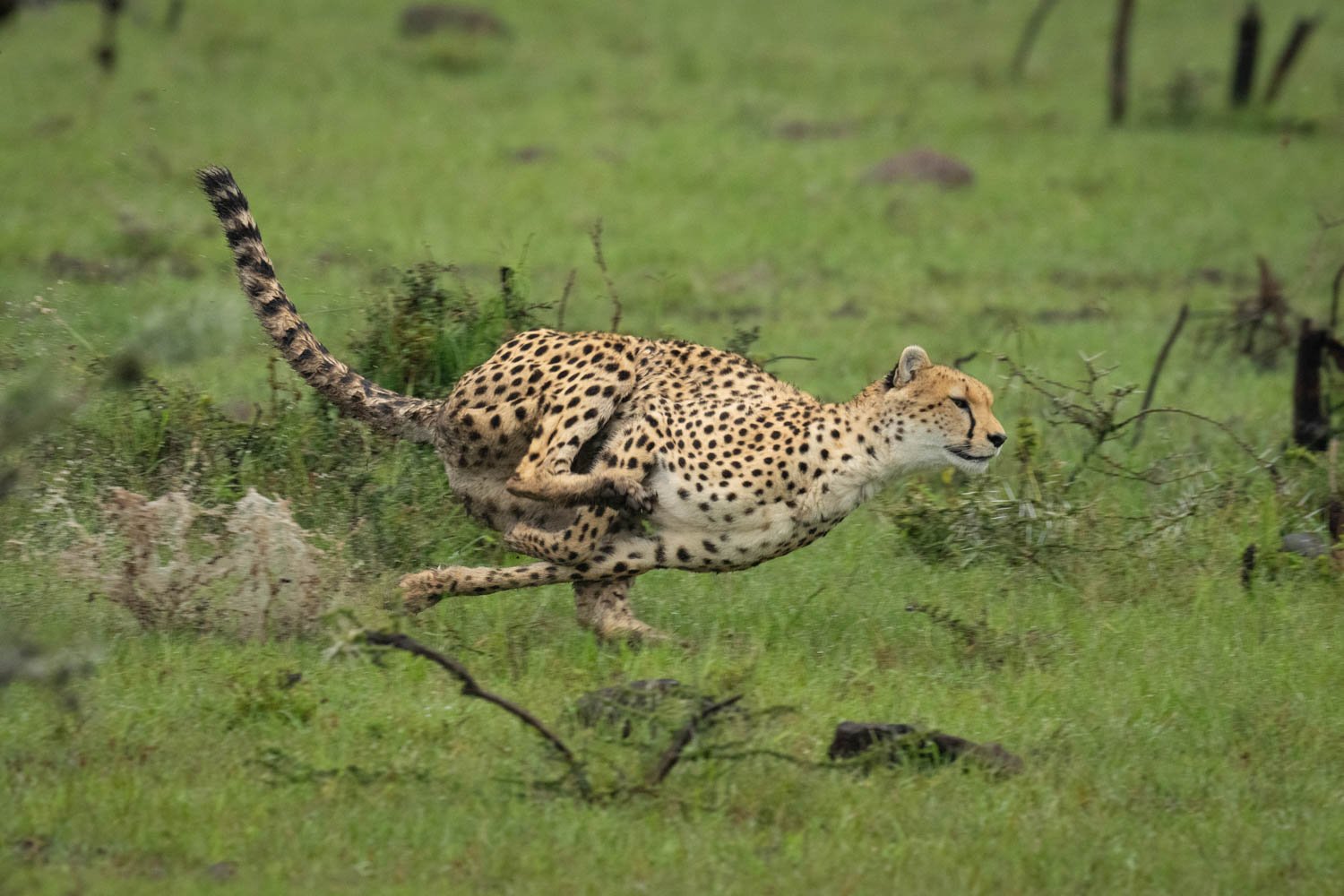
It was a great moment, and I was chuffed to bits to be able to capture the action—even though I’d forgotten to put the IS system in panning mode!
After that, the only animal left on my shot list was the leopard. And that’s exactly what we found in the afternoon! Over the next couple of days, we kept going back to the same tree, and we were treated to a feast of a performance from a female leopard and her young cub.
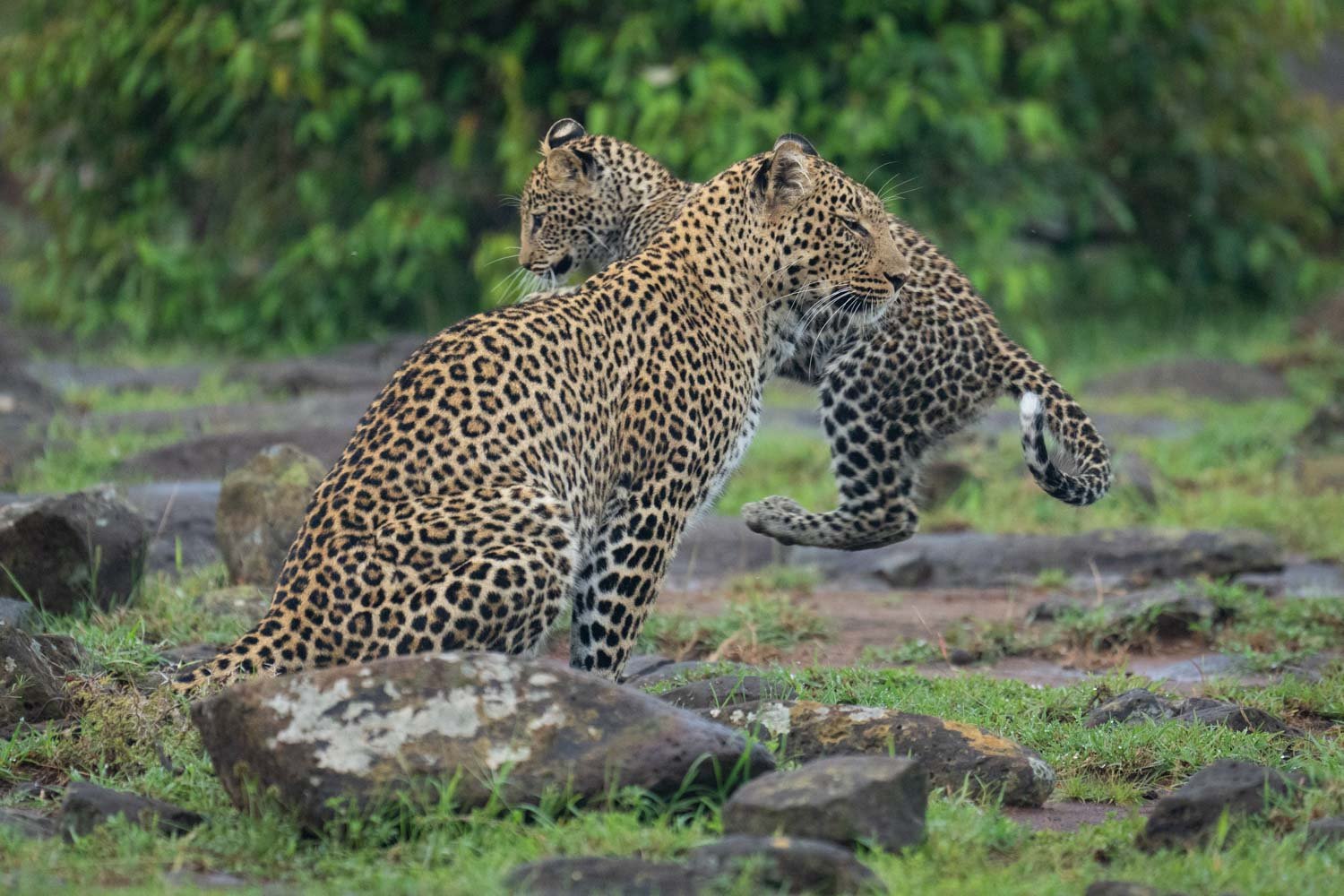
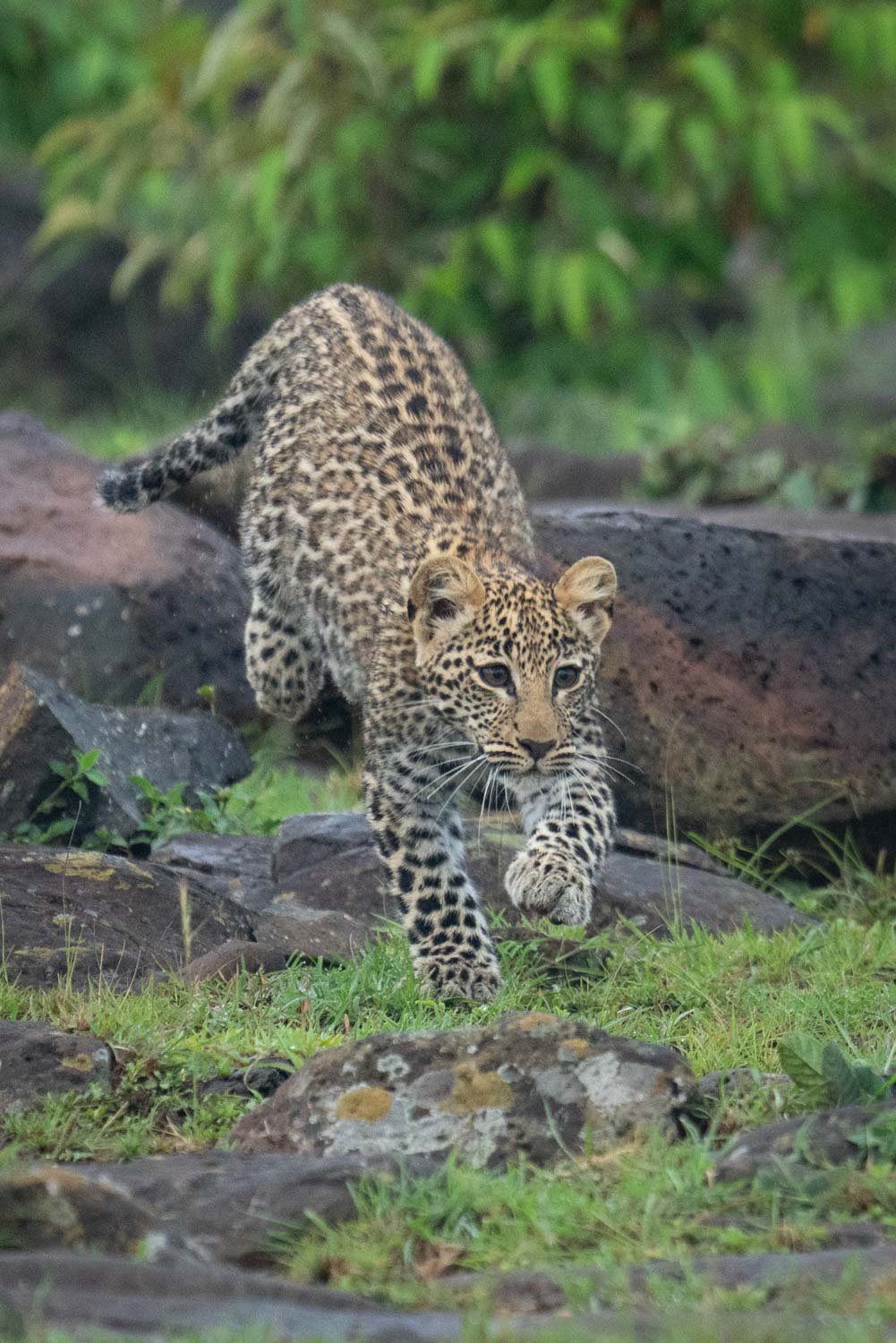
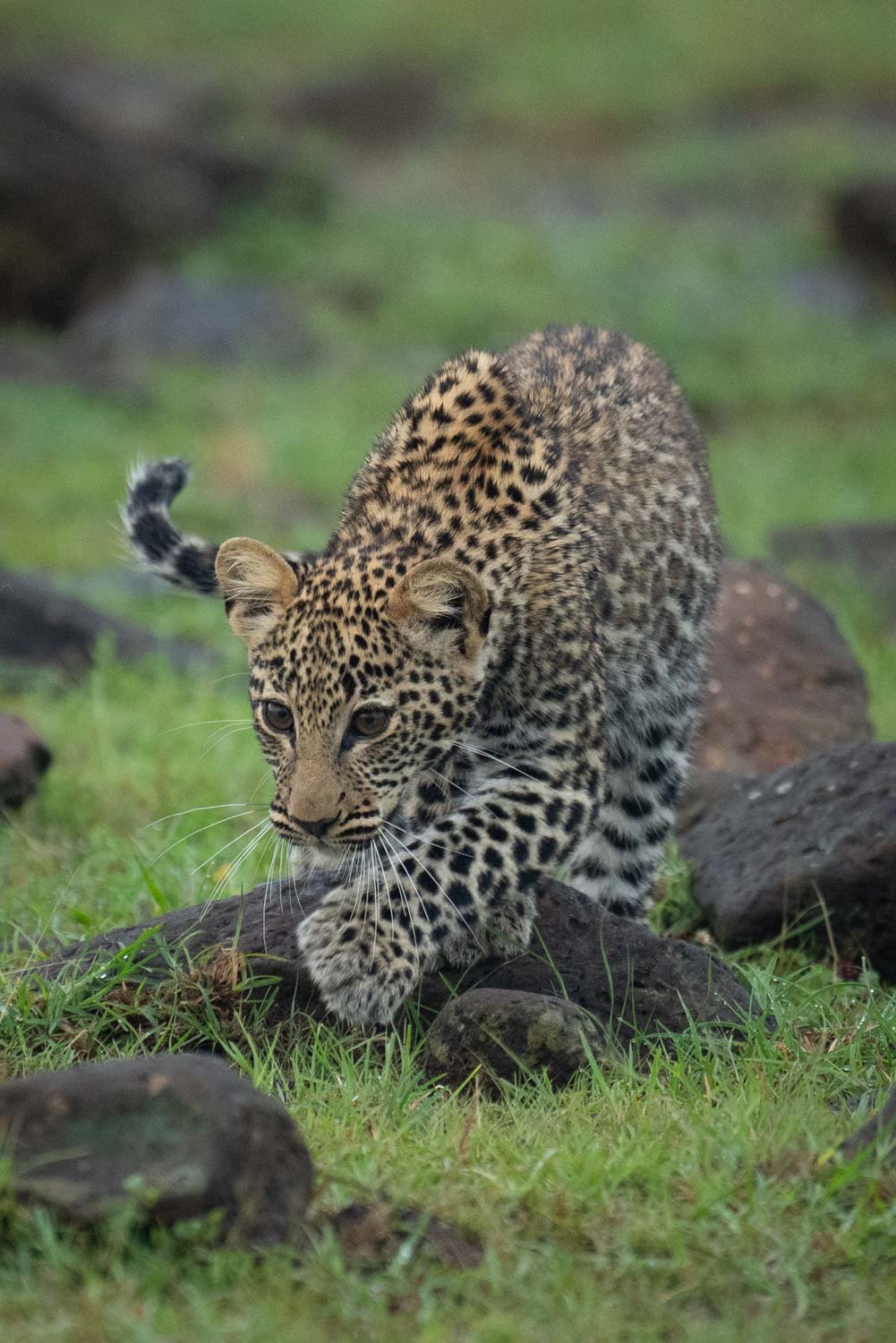
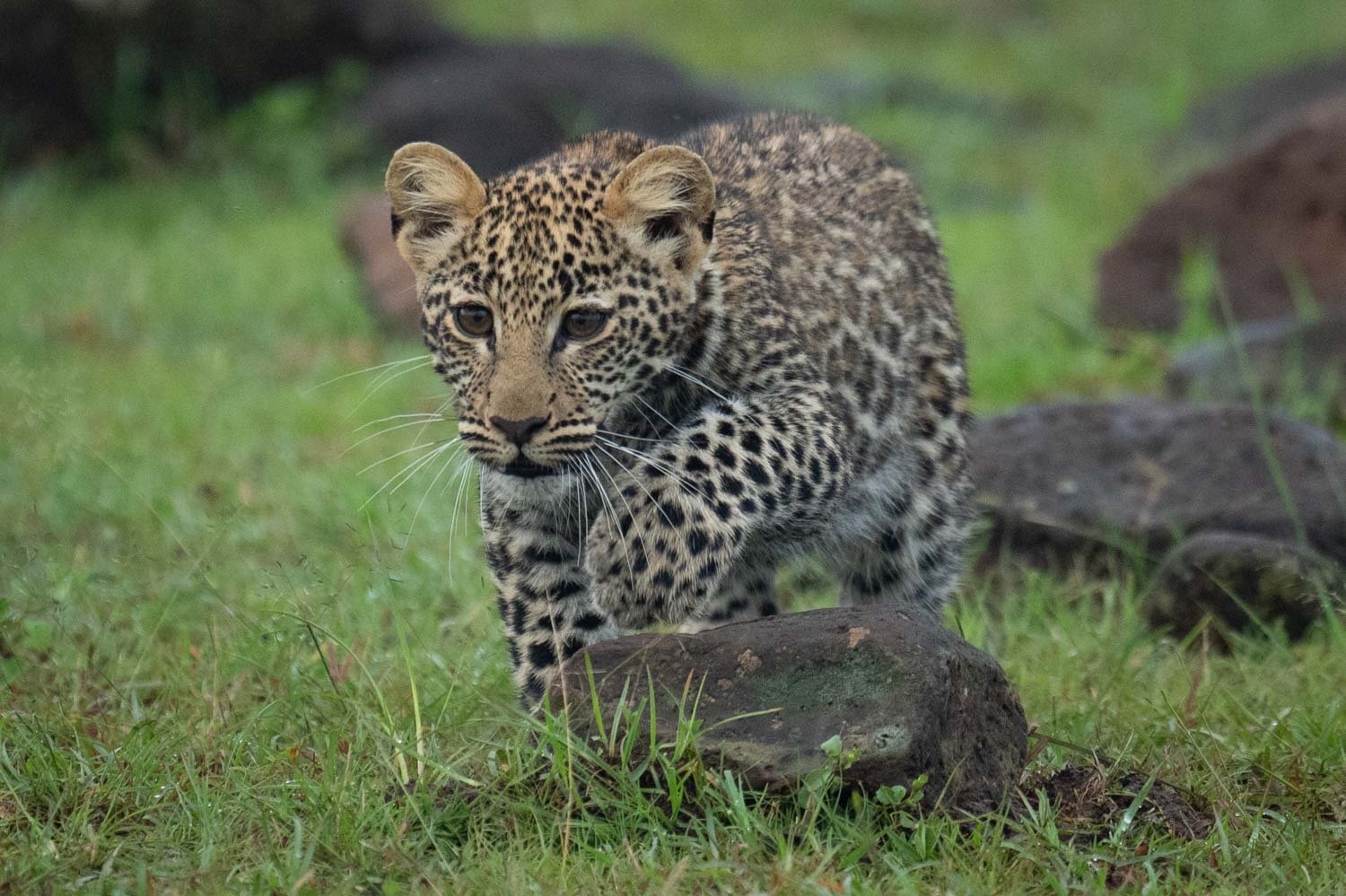
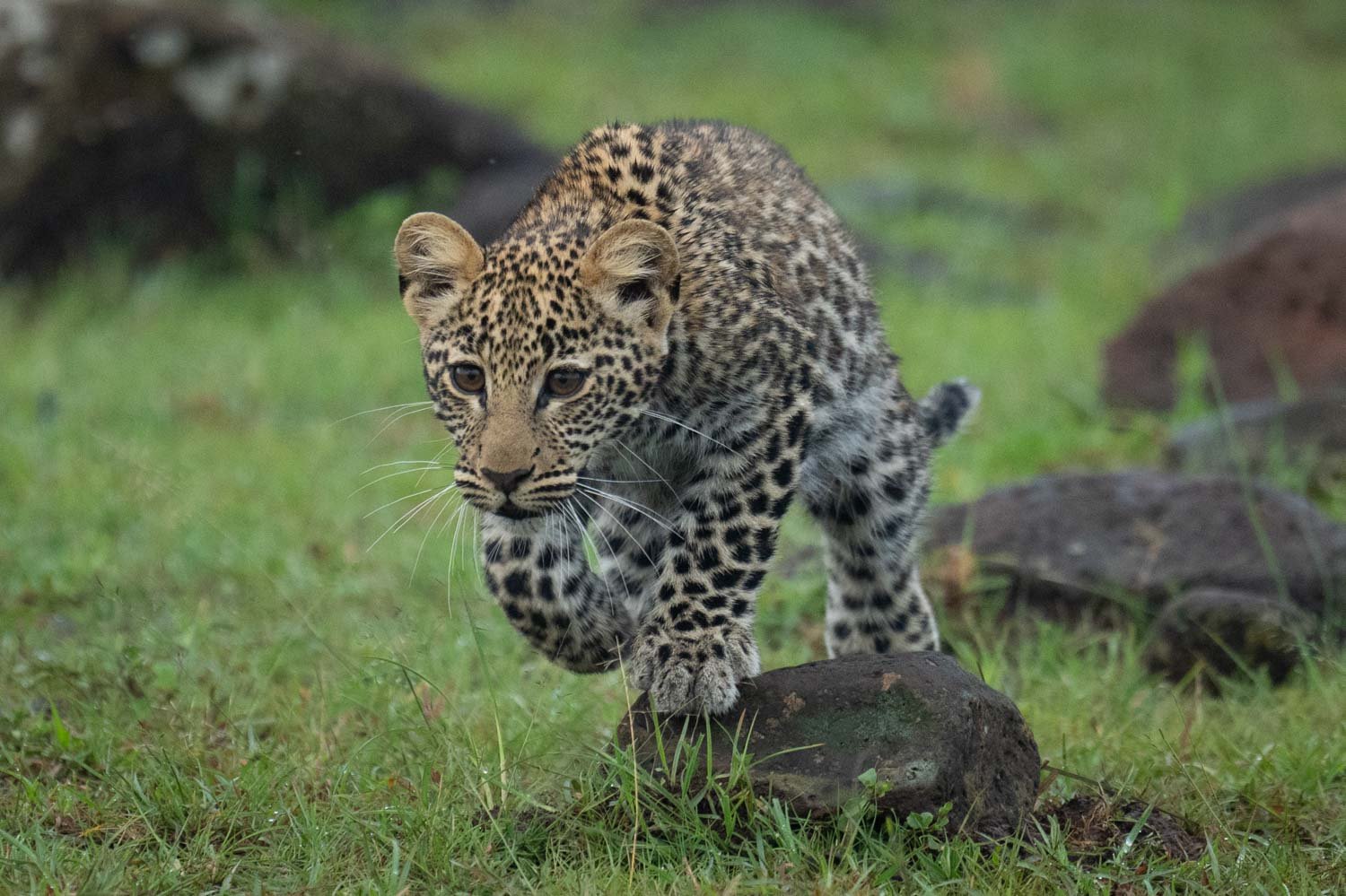
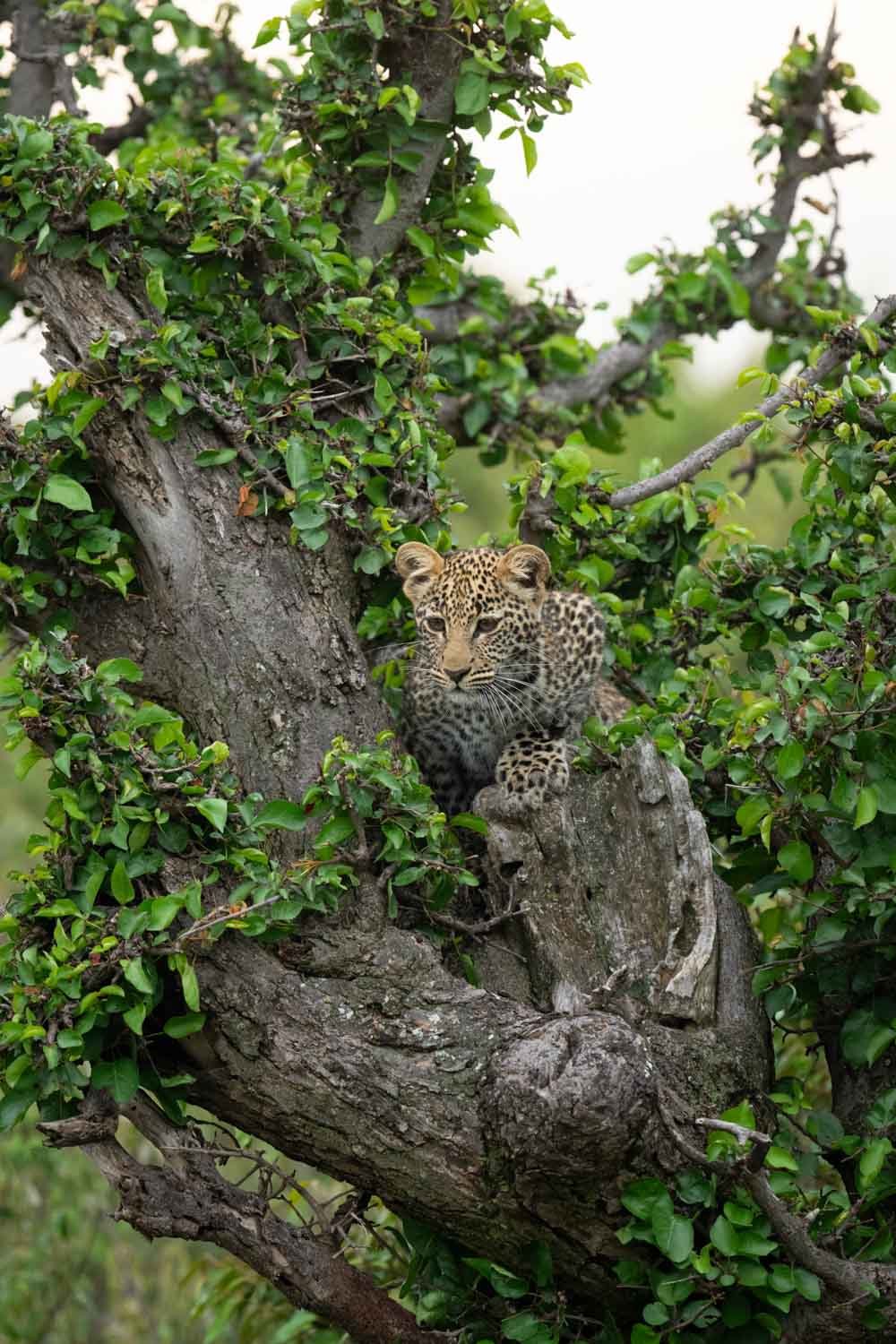
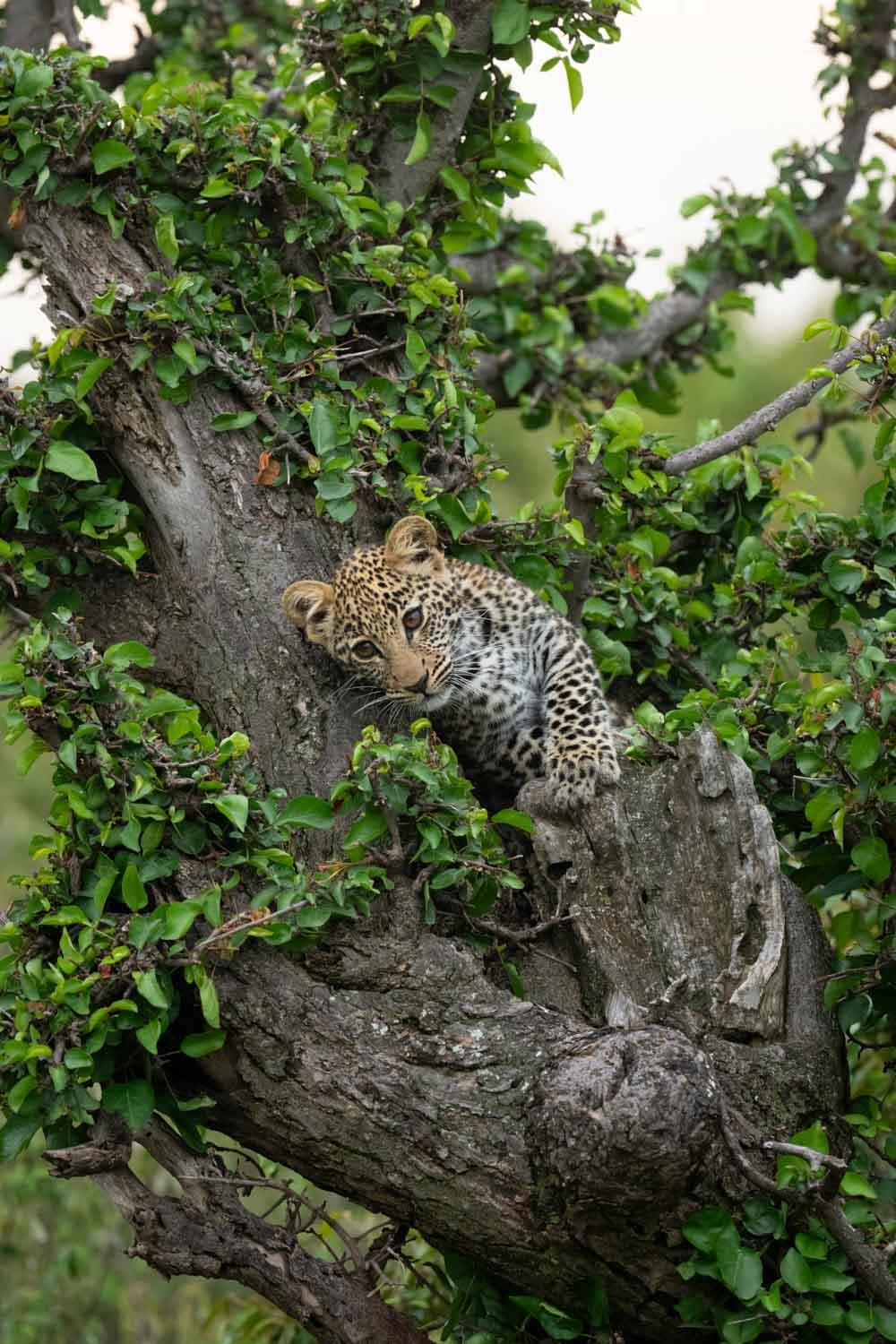
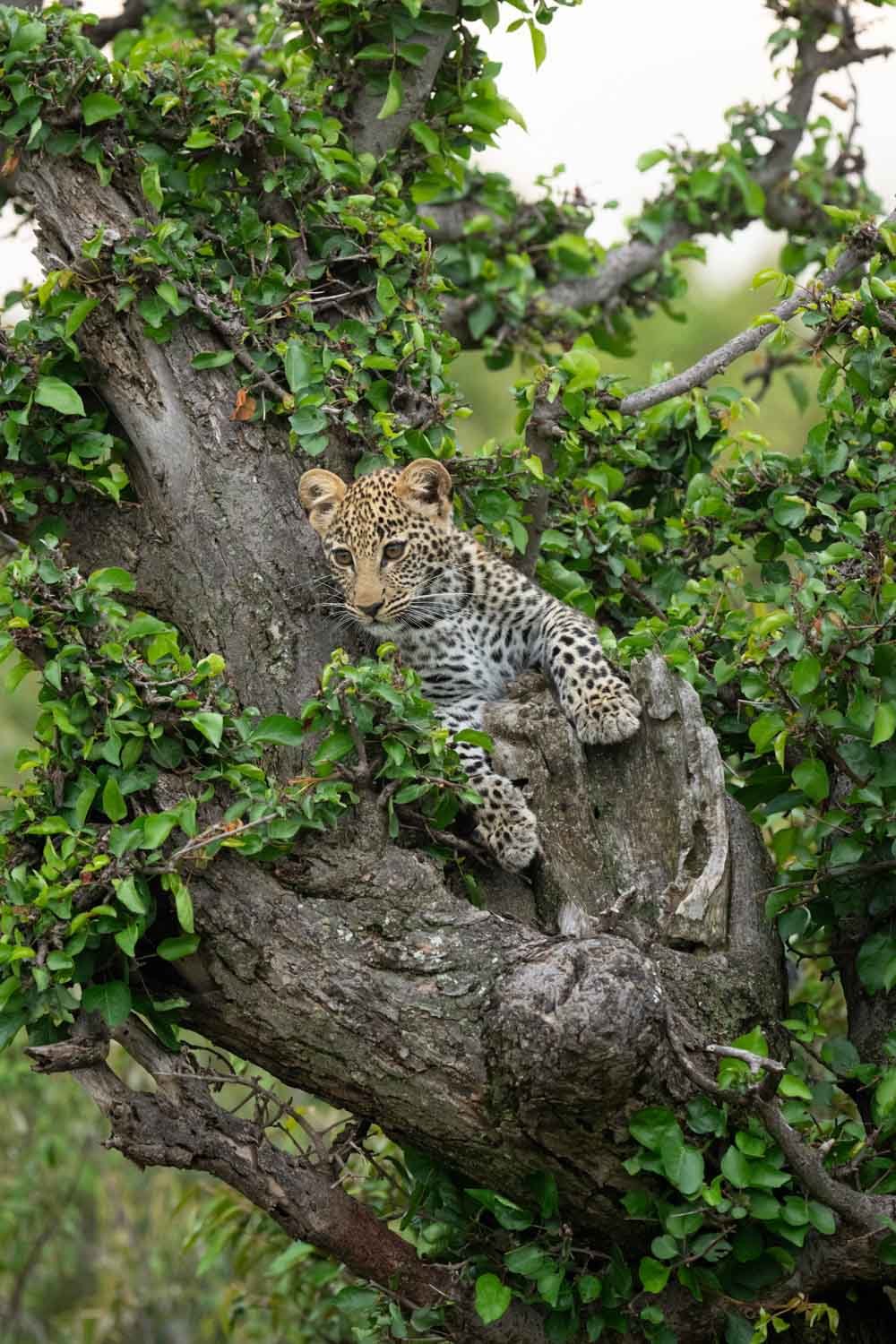
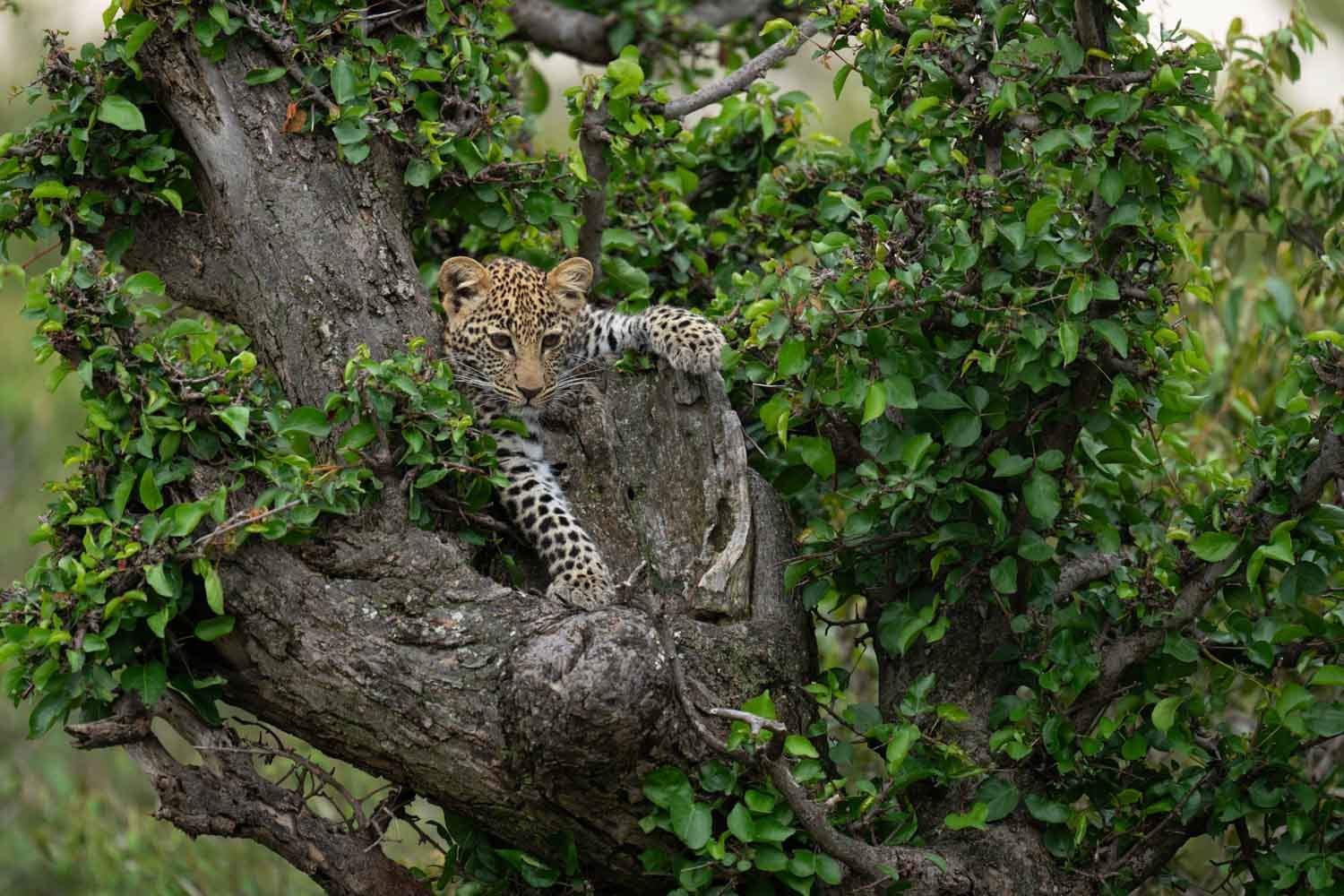
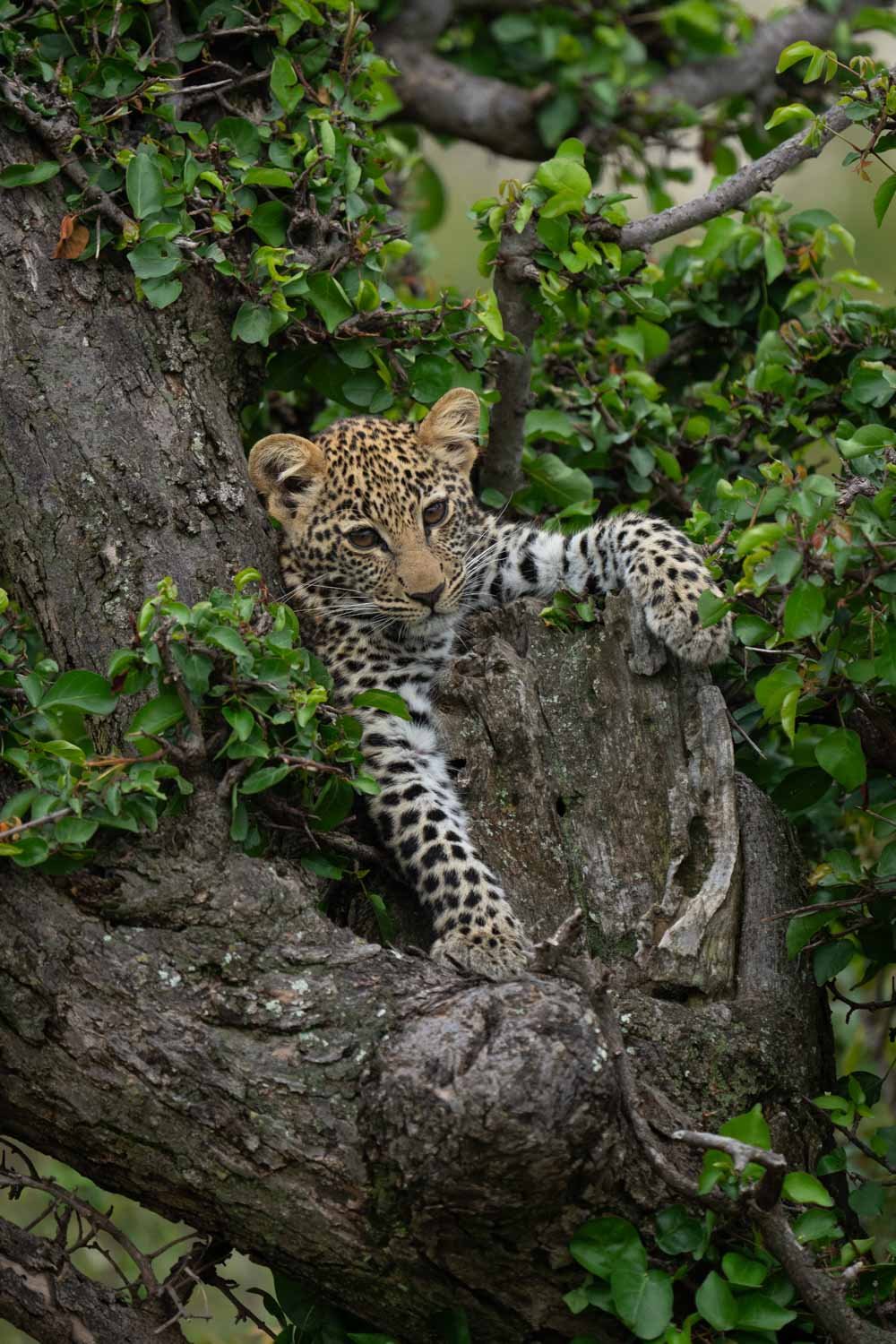
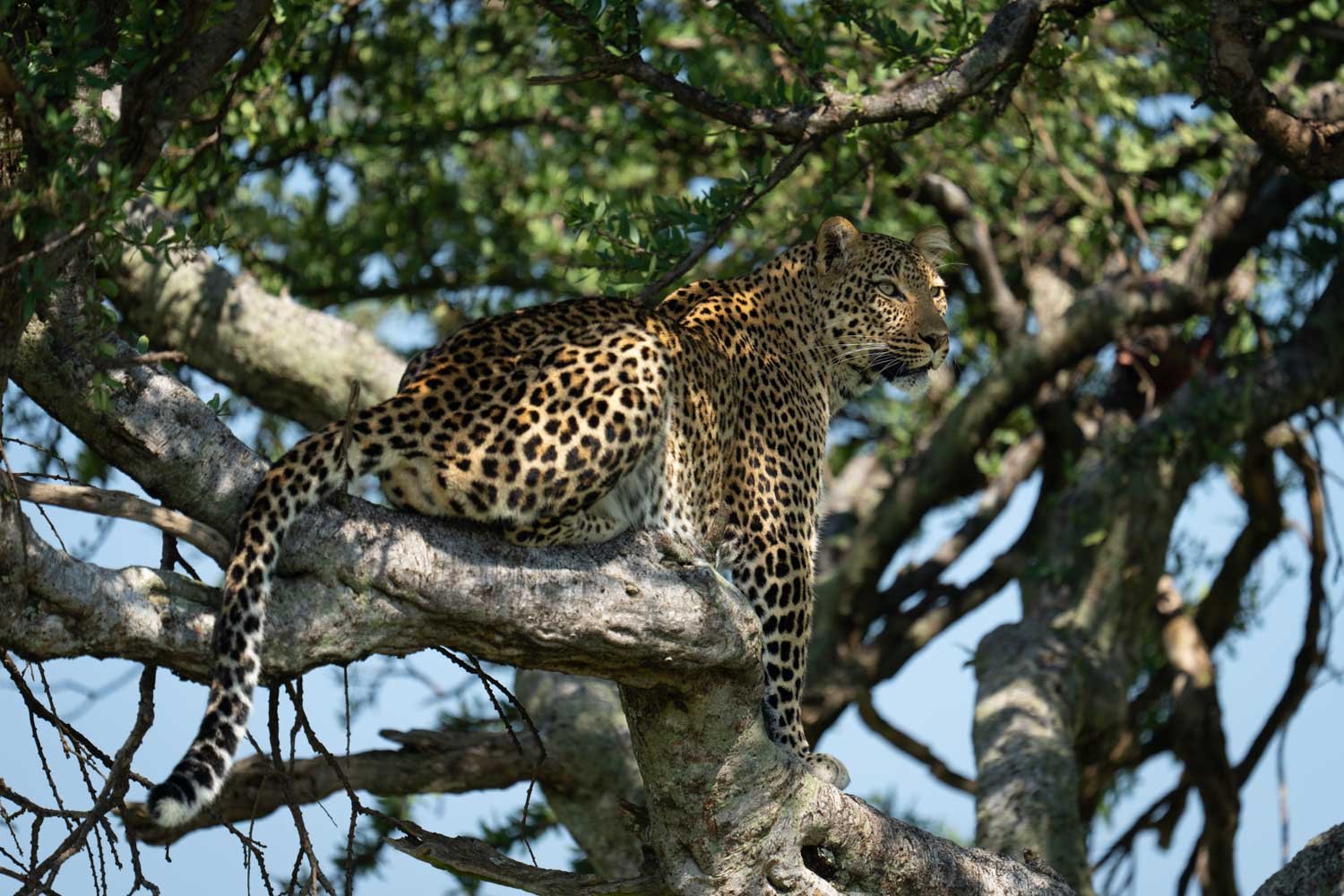
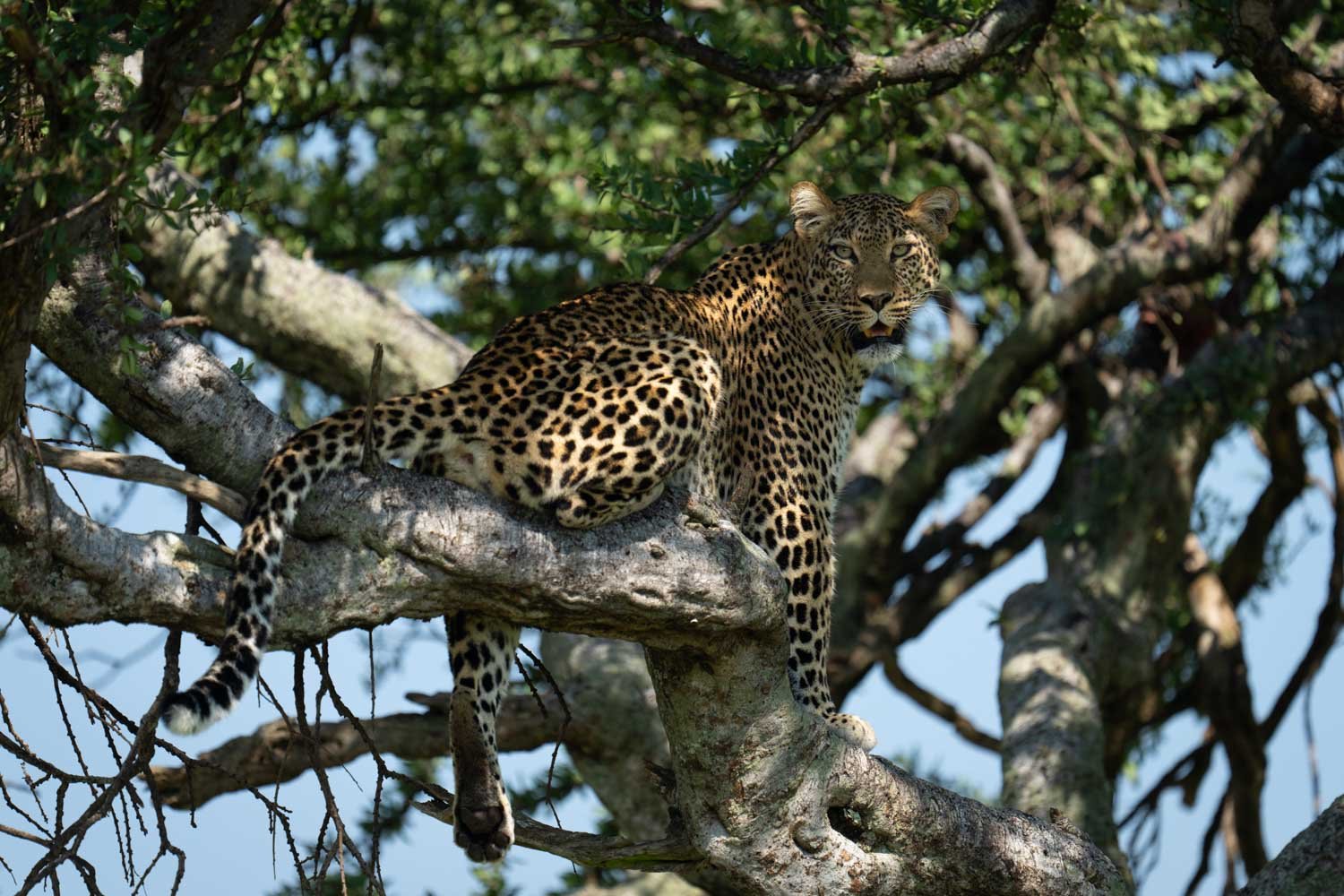
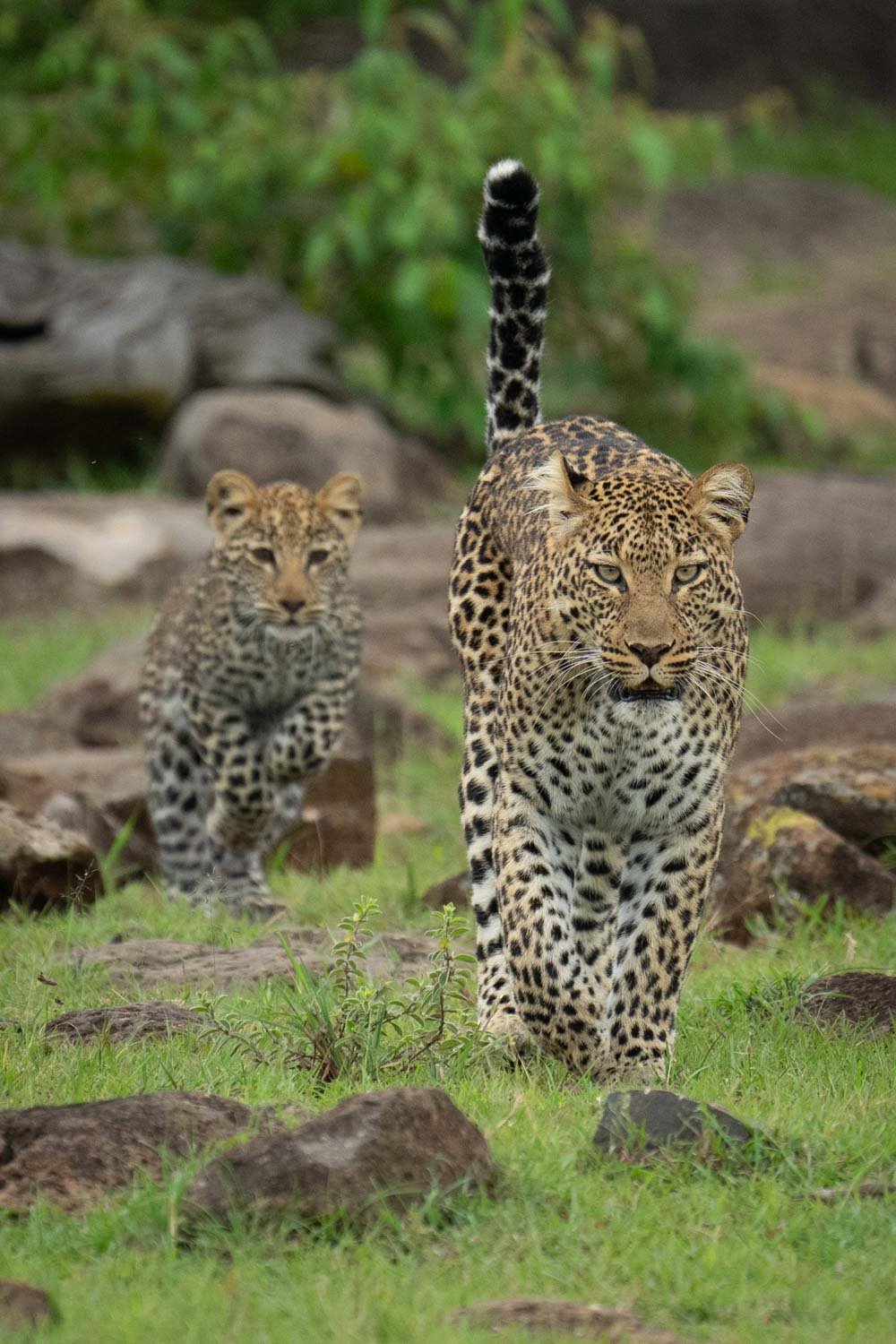
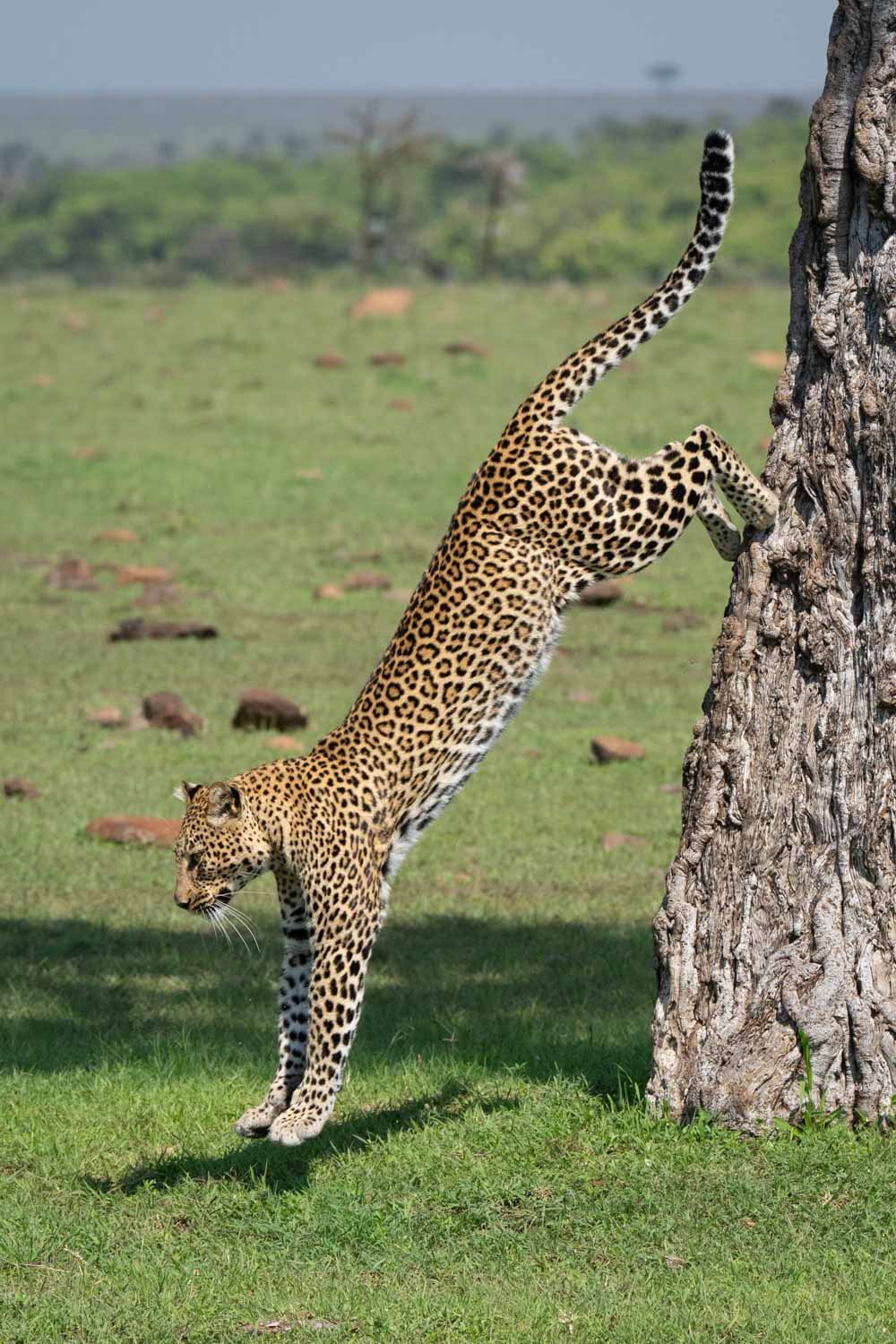
On my final morning, I went out with Ester. We were immediately treated to a ‘rough play’ session between the mother leopard and her cub. It was too dark to photograph, so I videoed the whole thing.
Later, I even managed to film the leopard bringing down its tommie kill from the tree—but it was a bit overexposed.
In between the leopard sightings, I went out with Paul on an evening game drive and saw an actual sunset! Yes, really!
Paul’s great in these situations. He knows exactly what he wants and doesn’t quit until he gets it. He also taught me the important lesson that the action doesn’t stop just because the sun has set. There’s still the afterglow, and that can make a great backdrop.
We found a ‘dazzle’ of zebras, a topic and a few elands…
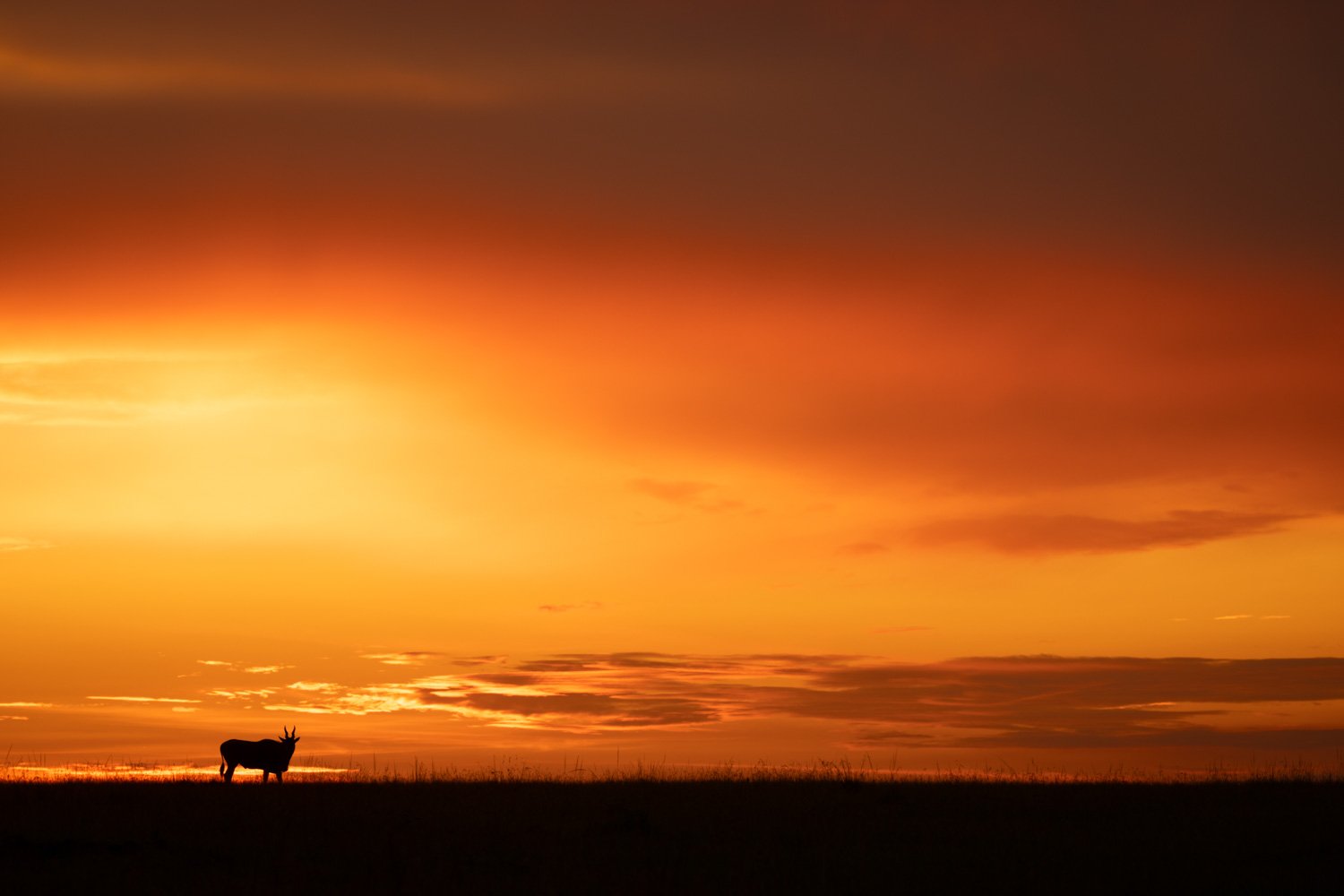
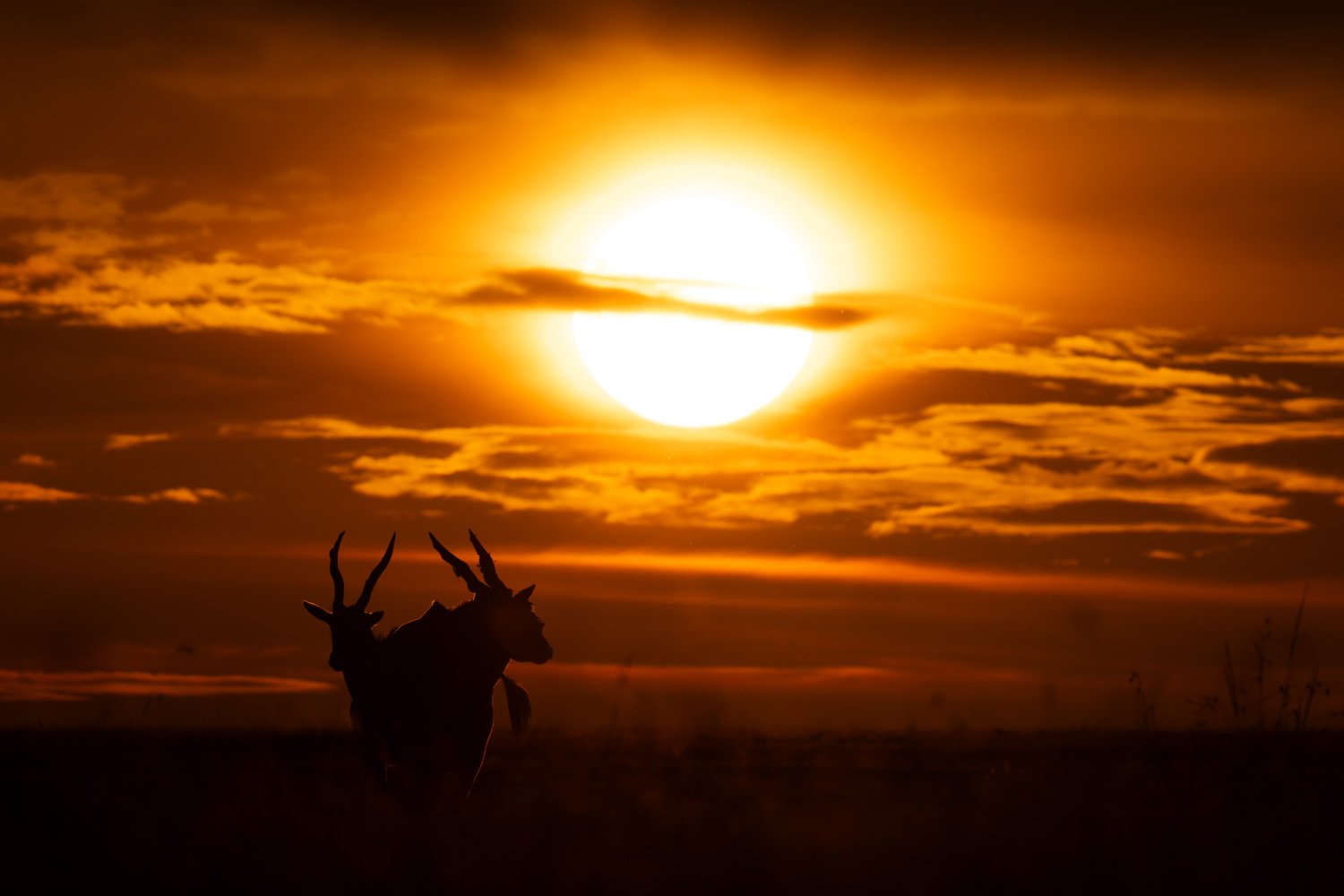
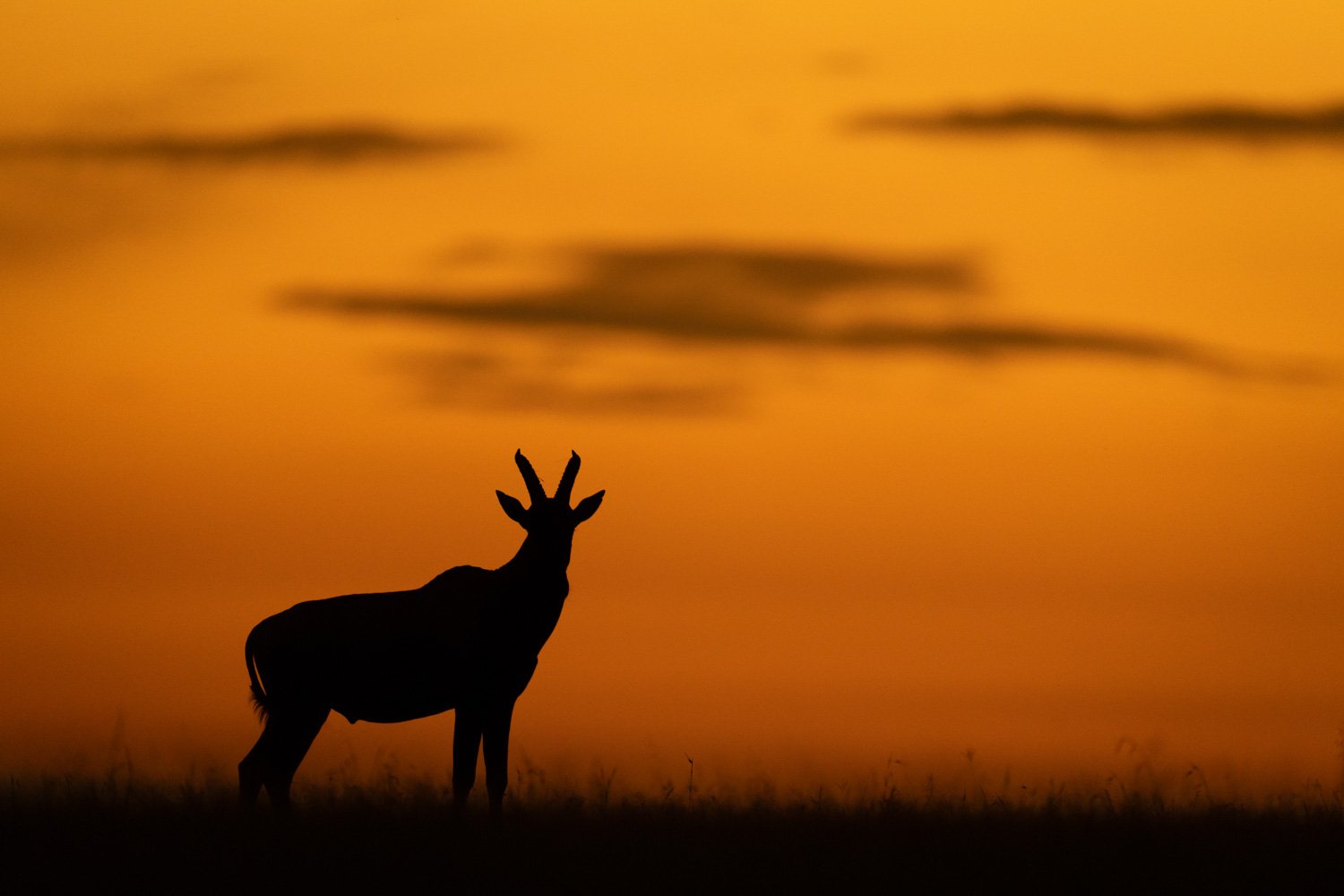
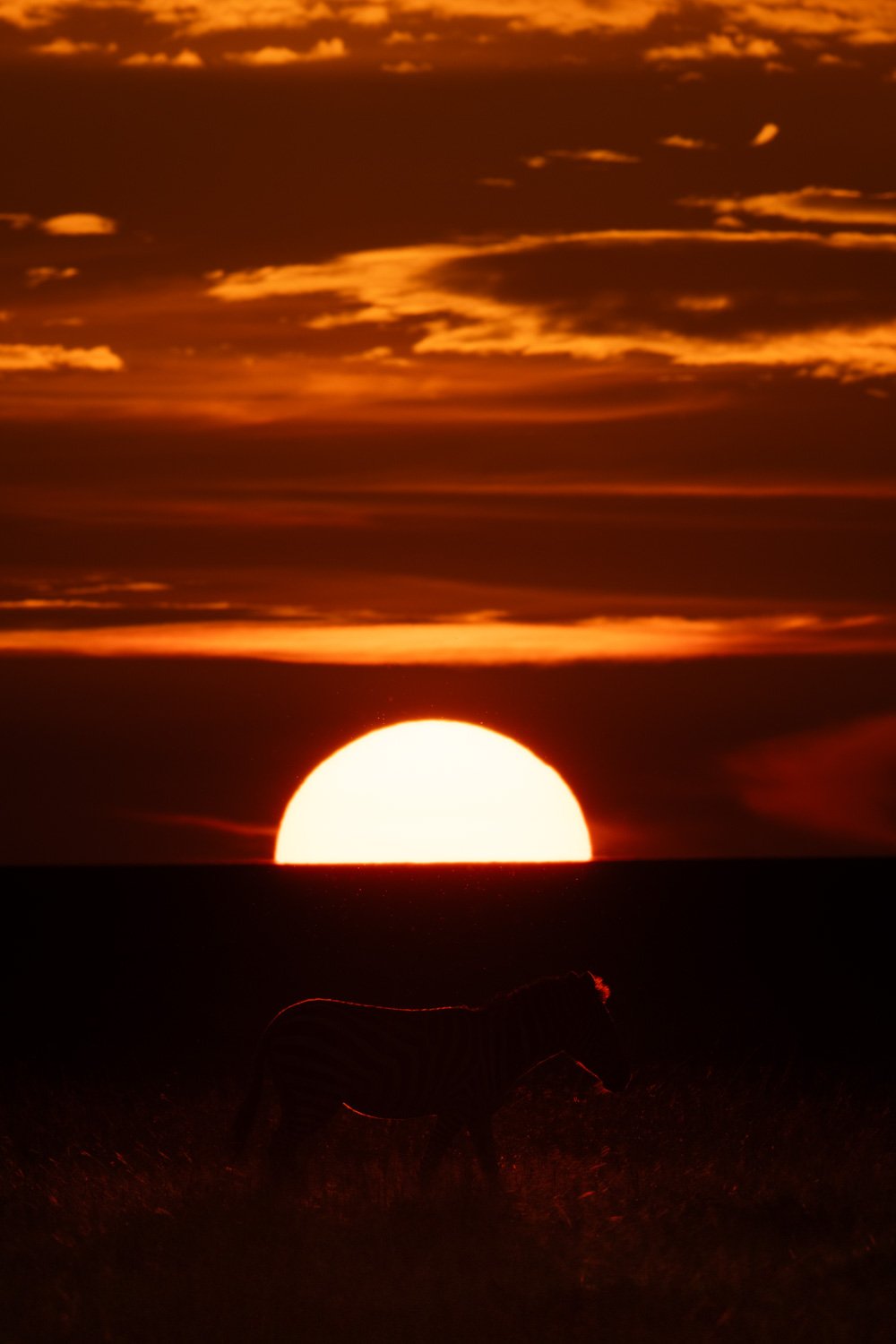
Getting Back
On the way home, I didn’t have to spend the night in a hotel, fortunately. Paul told me it’s because of the BA schedule. There hasn’t been an overnight flight to Nairobi for about 10 years, apparently, but there is one back to London.
When I tried to check in online, the BA app wouldn’t let me change my seat to an exit row and then created my boarding pass even though I hadn’t requested it! That was annoying—but at least it saved me £70!
The journey home passed pretty quickly. Having Robert’s company helped, and I spent most of the flight either eating, sleeping or writing this post. I didn’t even need to charge my mobile or laptop!
When we landed at Heathrow, 21 hours after leaving Valley Camp, the first text I got after landing was from Sky: “Welcome to France!”
Verdict
I came to Kicheche to see cheetahs hunt—and that’s what I got! That takes Paul’s ‘score’ to seven cheetah kills in three weeks (plus various unsuccessful chases). In addition, there were two abortive lion hunts involving a topi and a zebra, plus plenty of good opportunities for portraits, action shots and videos—including cheetah cubs stalking a hyena and Thomson’s gazelles chasing black-backed jackals! Bizarre…
It was good for my photography to go out on my own for the first few days, and I was pleased to get a few bird-in-flight shots, but I was grateful to hit it off so well with Patrick and Mary and then Robert.
Sadly, most people don’t stay in safari camps as long as I do (!), so I had to say a few painful goodbyes. However, let’s hope I can find an excuse to join my new friends on more adventures in the years ahead…
PS My rather strange diet paid off. I managed to lose 7 lbs in two weeks, so my BMI is back to normal…!
PPS Paul Goldstein is trying to collect old camera equipment for a local Kenyan community in Kibera. If you have anything you’re willing to donate, please get in touch with him via his website.
Lessons Learned
I learned a few lessons during the trip—mostly from Paul but also just from noticing what worked and what didn’t. Here’s the list of tips and reminders.
“Dial up the shutter speed for action (1/1600+).
Check settings and dials beforehand
Get ready for action quickly and quietly
Take elephant videos at the widest angle with little foreground.
Always focus on the cat during a hunt
Keep both animals sharp with over-the-shoulder shots (f/18).
Take elephant eye at an angle
Take close-ups of elephants.
Don’t go below 1/80 to show raindrops
Take 1/25 shots of lions walking towards camera.
Show lion peeking out behind animal in foreground.
A low photo of an elephant is nothing without a good sky.
Don’t do backlit shots two hours after sunrise.
A third under and f/9 or f/10 to keep cheetah cubs sharp.
You have to backlight in the rain so you can see the drops.
Shoot wide open to get flare at sunset.
Lift the blue luminance in Lightroom to show raindrops more clearly.
Put the horizon at the top of the frame as the sun sets if it’s too bright.
Remember the afterglow—shooting doesn’t end at sunset!
Don’t take videos of more than 20-30 seconds.
With deep shadows, as soon as you’ve got some light on the face, rip it down (by up to four stops).
In low light, use a high ISO first and then gradually reduce it (the doubling rule).
Set proper white balance for video.
Use 4K 24p or 30p with ProRes HDR rather than 60p on the iPhone.
4K video setting is determined by the preset.
Enter Nature Photographer of the Year (Dutch), SIPA, GDT, WPOTY and NBP.
Take a burst as soon as the vehicle stops when shooting birds.
Sync the time on both cameras to avoid mixing up telephoto and wide-angle shots.
Prepare for action by anticipating what’s likely to happen so that you have the right lens and settings in good time.”
Butcher’s Bill
I always lose or break things when I go away, but there’s not much to report this time—apart from the infamous brown sock! I thought I’d lost it in the laundry. Russ found it and handed it in, but then it turned up in his laundry by mistake!
When I spoke to Mike about it, he told me it had been found, but it turned out that I’d left a sock at Mara Camp, so I’d only put one sock in the laundry bag in the first place! Someone had to drive it over so that we could finally be reunited. Very embarrassing…
The only ‘breakage’ came when I got into a rather awkward position on a game drive and managed to pop the button on my trousers off and break my zip! One of the staff mended the button (eventually!), but she couldn’t do anything about the zip…
Species
Animals (30)
African bush elephant
Banded mongoose
Bat-eared fox
Black-backed jackal
Blue wildebeest
Bushbuck
Cape buffalo
Cheetah
Coke’s hartebeest
Common eland
Common impala
Common warthog
Defassa waterbuck
Genet
Grant’s gazelle
Hinge terrapin
Hippopotamus
Kirk’s dik-dik
Leopard
Lion
Masai giraffe
Olive baboon
Plains zebra
Rock hyrax
Scrub hare
Spotted hyena
Thomson’s gazelle
Topi
Vervet monkey
White-tailed mongoose
Birds (74)
African blue flycatcher
African fish eagle
African golden weaver
African wattled lapwing
Black-bellied bustard
Black-chested snake-eagle
Black-headed heron
Brown snake-eagle
Cattle egret
Chin-spot batis
Common coucal
Common kestrel
Common ostrich
Common sandpiper
Coqui francolin
Crowned hornbill
Crowned lapwing
Diederik cuckoo
European bee-eater
Fork-tailed drongo
Egyptian goose
European bee-eater
Grassland pipit
Great sparrowhawk
Greater blue-eared starling
Green wood-hoopoe
Grey apalis
Grey crowned crane
Grey flycatcher
Grey-backed fiscal
Grey-headed kingfisher
Helmeted guineafowl
Hildebrandt’s starling
Jackson’s widowbird
Lappet-faced vulture
Lesser kestrel
Lilac-breasted roller
Little bee-eater
Northern wheatear
Pallid harrier
Pied kingfisher
Pin-tailed whydah
Purple grenadier
Pygmy kingfisher
Red-billed hornbill
Red-billed oxpecker
Red-necked spurfowl
Red-rumped swallow
Ring-necked dove
Rosy-breasted longclaw
Rufous-naped lark
Rüppell’s long-tailed starling
Saddle-billed stork
Secretary bird
Silverbird
Sooty chat
Spur-winged lapwing
Steppe eagle
Superb starling
Tawny eagle
Temminck’s courser
Three-banded plover
Water thick-knee
White stork
White-backed vulture
White-bellied bustard
White-browed coucal
White-headed buffalo-weaver
Wire-tailed swallow
Wood sandpiper
Yellow bishop
Yellow-billed oxpecker
Yellow-fronted canary
Yellow-throated longclaw
If you’d like to order a framed print of one of my wildlife photographs, please visit the Prints page.
If you’d like to book a lesson or order an online photography course, please visit my Lessons and Courses pages.
